
- Become A Member

The Ultimate Guide To Preparing For A Long-Distance Motorcycle Road Trip
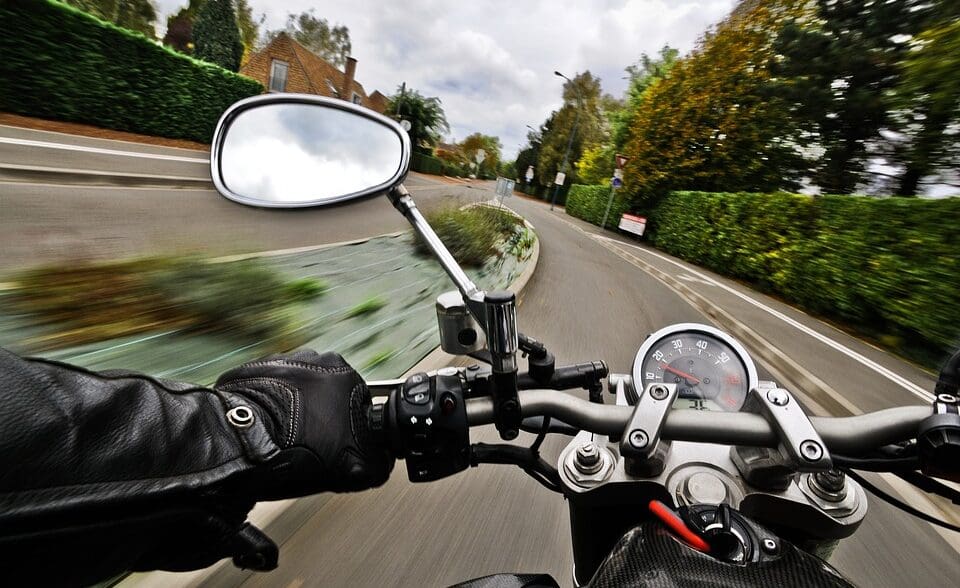
If you don’t do cross-continental touring every summer as part of your owning a long-distance touring cruiser , you’ve come to the right place! This guide is meant to get you through the basic, and a couple of the advanced, things you need to do to prepare for a long distance motorcycle trip. The first thing we should really do here is actually define what is meant by long distance, which in the motorcycling world is pretty much any trip that takes more than a day to complete.
You could be riding to see your friend a couple of states over, you could be travelling across thousands of miles to attend an event, or you could just be out there on a bit of a riding getaway, to leave the city behind and enjoy the open road. No matter the reason, each trip will need to start with the most basic thing of all: planning.
Planning Your Trip
It sounds so easy, doesn’t it? Those three words that are the header of this section. Yet, this is quite possibly the most difficult, and most crucial, part of the trip. If you don’t plan your ride, rest assured that whatever tricks Mr Murphy has up his sleeves, they will happen to you.
Mapping Out Your Route

In today’s high tech world, many people are happy to just put their smartphone in a mount, twist the throttle, and off they go. If you’re staying within the city limits, this is perfectly acceptable, as familiarity with the roads, and stopping to ask for directions in less familiar parts of town, is all part and parcel of being on the road.
When you are going between cities, states, even countries, however, you will always want to have the good old analogue backups: directions and a map. Bring along a printout of your route from your favorite mapping site, a list of the major turns, distances, and such, and a few pens as you will lose one or more along the way.
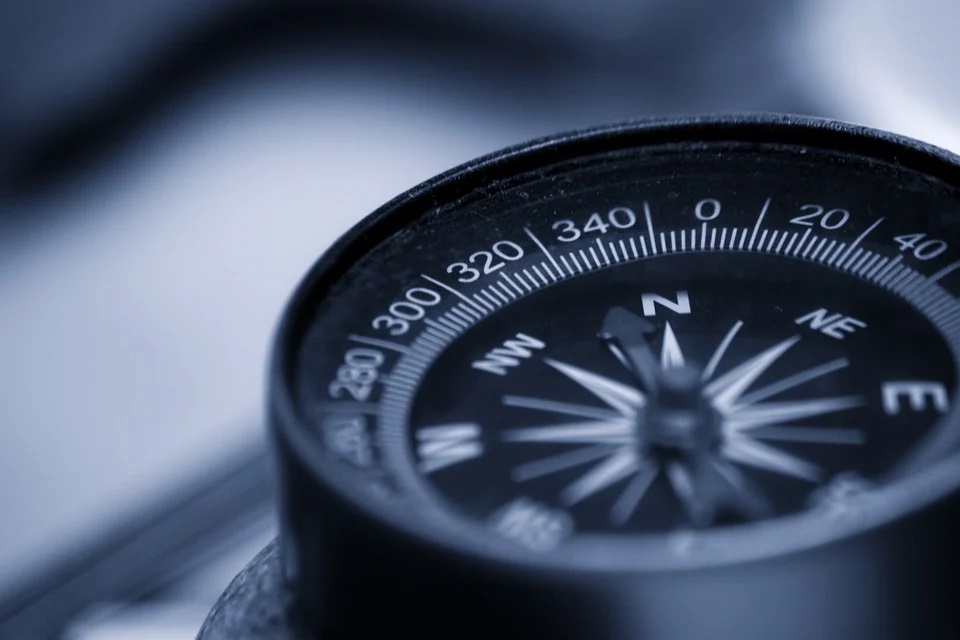
As you reach each planned turn, stop, overnight location, take out your pen and put a checkmark beside the directions you followed (don’t cross them out in case you need to backtrack), and circle those major events on the map printout to make sure you know where you are. This is part of the fun of the trip, because you can either take it the quickest route, or plan some touristy things like a famous diner or the world’s biggest paper airplane museum along the way.
The Weather
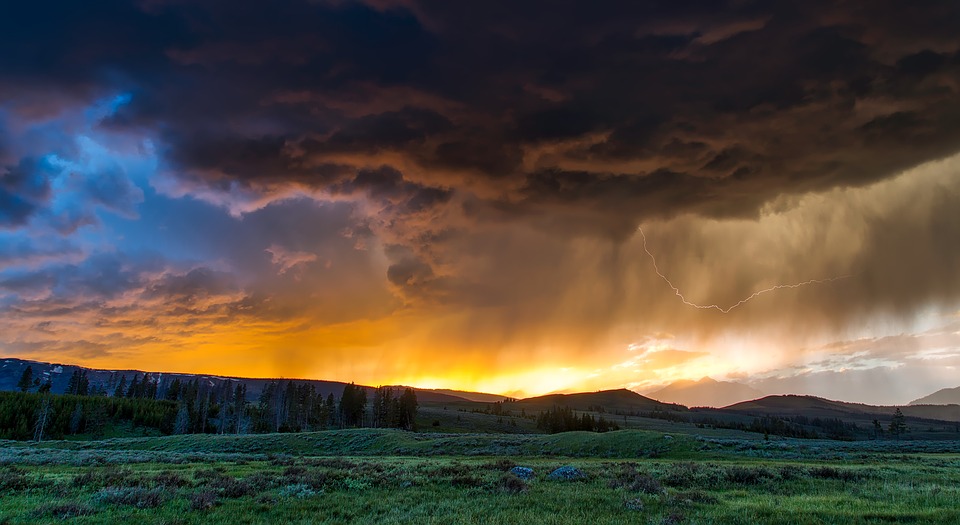
It cannot be overstated enough, plan for everything. Pack the removable waterproof lining of your touring pants and jacket in your saddlebags or backpack. Have multiple sources, and quantities, of water on you at all times. Read the forecast for your expected trip dates, and plan rest stops, water refills, washroom breaks, and expect to need more than you actually plan for.
As almost 99.9% of motorcycle riding happens above freezing, you don’t need to worry about things freezing during the day, but in some parts of the country, it can get extremely cold and windy, sometimes life-threateningly so, if you don’t research your route and plan accordingly. It’s surprising how many riders will call for rescue if they are planning to camp during their route, only to find that it can get damned close to freezing in the middle of Nevada at night. Riding gear comes with removable thermal liners for a reason…
However, the most important thing of all is water. Humans can survive weeks without food, but only days without water. Having a backpack with a hydration bladder, that you also have three bottles of water packed into, as well as the 4 1L bottles of water in your saddlebags , two to a side… always, always, always have water.
Riding is a physical thing, you will sweat, and you will need to replenish. Also, having some salty snacks along the way to have with the water will keep your electrolytes up, especially during hot summer trips. Looking for new gear? Check out our wBW review of the Wolfman Bottle Holster and Wolfman Expedition Saddlebags .
How Are You Sleeping During The Trip?
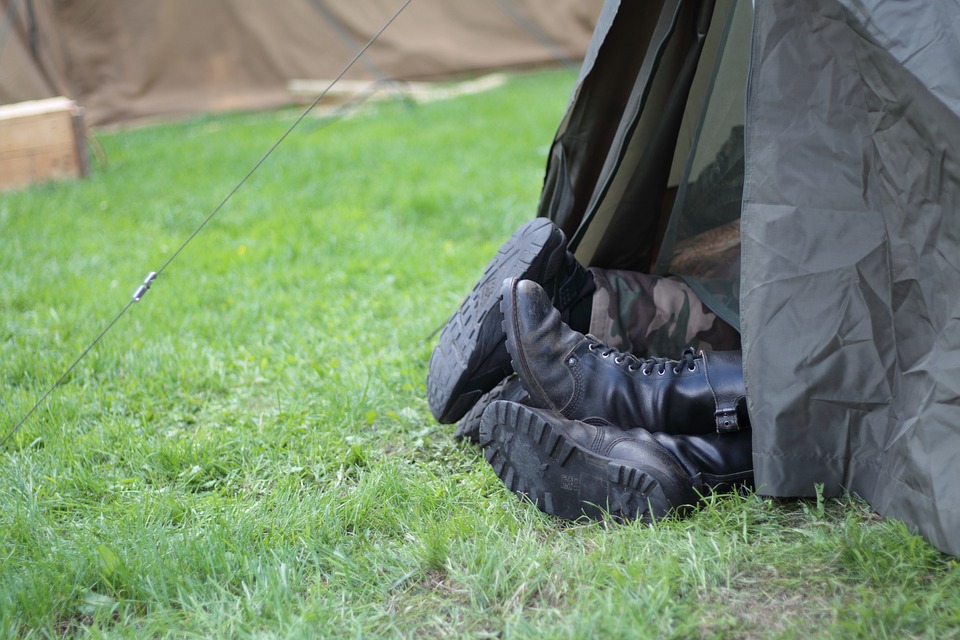
Ever notice how if you do even a half day of riding, by the time you go to bed at night, your body is practically begging for sleep? Riding requires a lot more focus and body energy than driving does, and so you need a good night’s sleep to keep riding the next day. This is something adventure riders will love to tell you about, with their tents and sleeping bags, jerry cans of fuel and water, and big bags of food strapped across the back of their bikes.
If you’re camping it out, a decent one man tent, a roll of foam insulator, and a decent sleeping bag are crucial. The tent keeps you out of the weather, the foam insulator literally does what it says on the label, and a good sleeping bag will keep you warm when it’s cold, and cool when it’s stupidly hot.
If you’re doing the motor motel style, book ahead with cancellation coverage. It costs a few bucks extra, but if your entire trip is wiped out from unexpected breakdowns, a crash, or just blind fate, then you can at least get your booking deposit back. Also, be realistic when planning your overnight stops!!!
Do not expect to be able to ride 700 miles in one day. 450 miles is about the absolute maximum you should realistically plan for, as if you are going 70 MPH the entire time, stopping once for fuel and lunch, it will still take you almost 6.5 hours to travel that distance. And that’s not accounting for traffic, varying speed limits, other drivers, getting a flat tire, needing to stop to drink some water, etc…
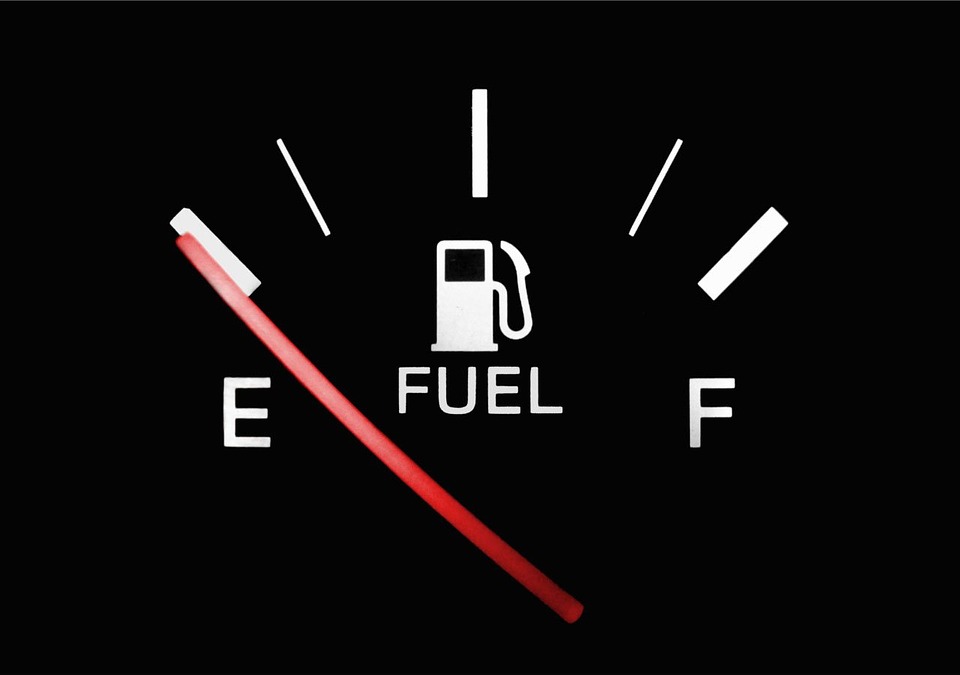
Know your bike’s average fuel mileage. Plan to stop every time you have about a third of a tank left. This may be stopping several times a day for gas, but also plan those stops out during your mapping preparation.
The third of a tank rule is a good one to have, as it gives you enough leeway that if the gas station you planned on stopping at is no longer there, closed that day, or undergoing maintenance, you have enough gas to ride to the next available gas stop. If you’re going to do Route 66, then bring a small jerry can cargo netted to the pillion seat on your bike at the very least, because even with the best of preparations, you can still get stranded.
Training For Your Trip
As much as you plan for your trip, part of that planning, an extremely important part, is training for it. You don’t win the Boston Marathon by jogging around the block a few times on the weekend before. In a similar vein, you shouldn’t do marathon riding sessions without acclimating your body to it.
Start a couple of months before the trip if you can. Go riding in the evenings and on the weekends. Start off at a couple of hours on the bike. On the weekends, go on day trips, 5-7 hours on the bike but close to home so if something goes South, you’re close enough to not be stranded.
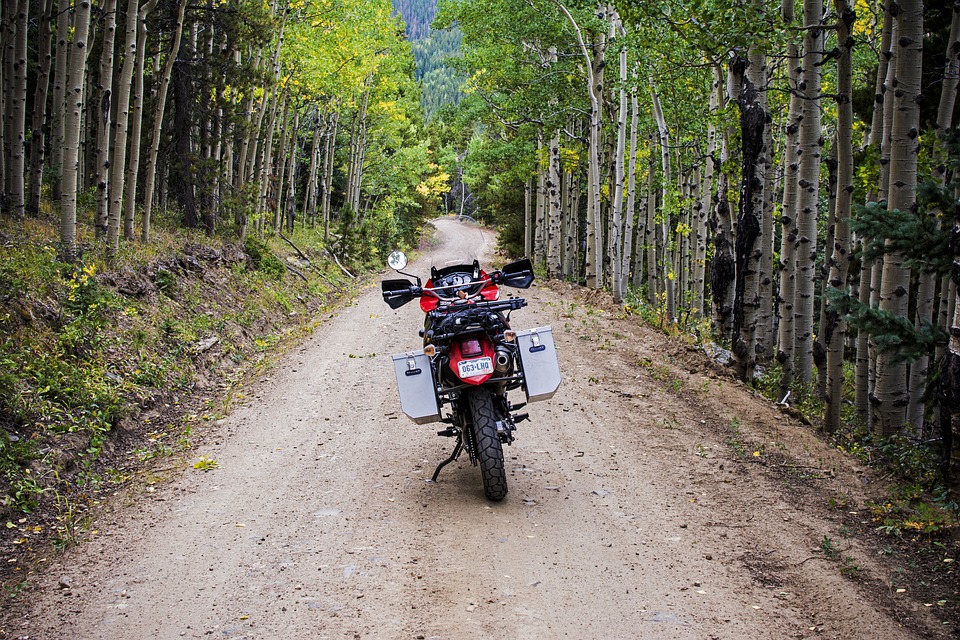
As the actual trip itself approaches, do several day trips fully loaded up with all the gear, approximate food and water weight, sleeping bag, tent, etc, all on your bike. Get used to how it affects your acceleration, braking, and most importantly cornering. You may need to stiffen the rear suspension a click or two. You might need to mildly overinflate your tires to handle the extra weight.
The weekend before your trip, don’t ride at all. Rest. Recuperate. Do low stress activities like watching a movie, binging Netflix, reading a book. Let your mind relax. Get lots of sleep.
You’ll find that when you actually set out on the trip, those 8 weeks of training have given you more energy and ability to handle the trip than if you just swung a leg over and didn’t train at all.
Have An Emergency Plan
Even with all the planning and training you’ve put in, things can still go wrong. Very, very wrong. In one of the outer pockets of your jacket, have a sheet, folded up and in a ziploc bag, labelled very clearly “Emergency Plan & Contacts.” That way, if you encounter a situation where you are rendered unable to speak, such as if you are intubated after a crash, you can still point to the pocket and list out who to call, any medications or allergies, and the like.
Also, share your itinerary with at least two people. One at your departure point, and one at your arrival point. If you’re doing the motor motel overnight stays, the motels themselves are excellent places to share your itinerary with. Tell them when you expect to arrive, and if you don’t, call you on your cell, and if that doesn’t connect, have them call one of the other two people that know your itinerary. If you’re lying in a ditch on the side of the road with your bike halfway up a tree, knowing that someone is calling someone and getting the ball rolling on getting a search on for you is reassuring!
You can also get tracking tabs (such as the Monimoto and Invoxia GPS trackers ) for your bike, and as long as someone has the right passcode to view the GPS tracking data, they can actually keep track of where you are at any given moment. Many of these tracking tabs also have an SOS mode, that allow you to send out an emergency signal via SMS or wireless cellular data.
What To Pack
Since we’re all about safety while riding here at webBikeWorld, ATGATT . Bring the waterproof and/or thermal liners for your gear. If you have them, bring extra interior padding and liners for your helmet. Wear motorcycle appropriate base layers for the expected climate. Silly as it sounds, bring extra socks. As crass as it sounds, there is a World War II American Army saying about socks: “Feet, neck, hands, balls, four pairs gets ‘em all.” Socks are your go-to emergency keep-warm tools, so have some handy.
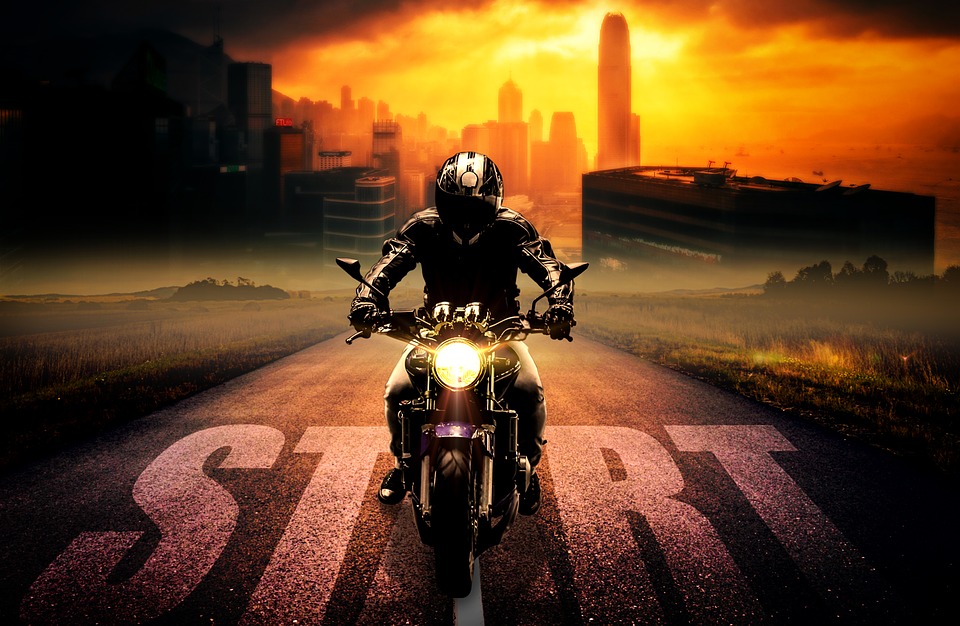
If you don’t have waterproof touring gear , get a decent set of rain shells that go over your gear.
If you have the space, bring a spare visor for your helmet, or a clear one if you use a smoked one during the day. Bring motorcycle rated sunglasses that have polycarbonate lenses in case your visor breaks or you need to ride with the visor up for any reason.
Pack multiple earplugs, especially the cheap foam ones that can be kept in a pocket and discarded (in the garbage bin or your used earplugs back so you can dispose of them properly when at your destination) after the day’s ride.
Sunscreen. Lots of sunscreen. The back of your neck will thank you. Trust us on this one.
Chapstick, anti-itch balms, and those little travel bottles of moisturizing hand cream. Exposure to wind for 5-8 hours a day is something your body generally isn’t used to, so a little moisturizing cream on the neck and face at the end of the day is a little luxury that costs you a couple of bucks to have for the entire trip.
In one of your pockets, pack a good length of toilet paper or a travel pack of baby wipes. You may not be at the most pleasant of places when you need to answer the call of nature, and having a good length of toilet paper in a ziploc bag, or a packet of baby wipes, will make answering that call less… uncomfortable… afterwards.
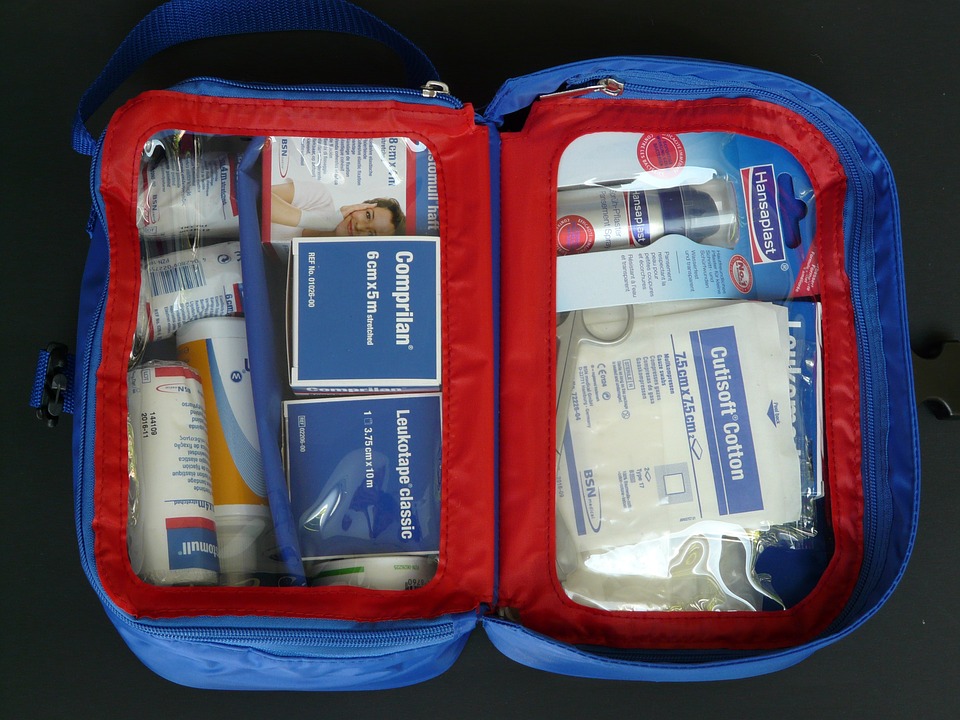
Always have a first aid kit on your person or on your bike, especially one that has one or two emergency blankets. They may not look like much, but those mylar blankets can keep you warm during the coldest of nights.
Water, and lots of it.
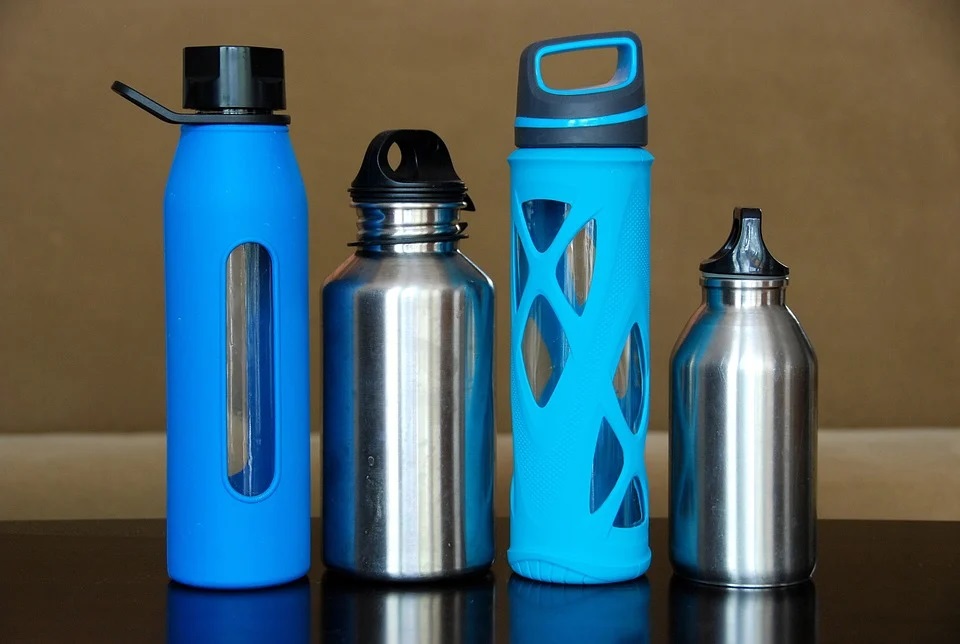
Food and snacks, especially ones with some salt in them (saltine crackers, sweet and salty granola bars, et al) to have with your water during rest stops so you can replenish your electrolytes.
Most motorcycle gear stores have travel toolkits that fit in a backpack or saddlebag, and many have compact kits that will fit under the seat. Get one. Your bike and sanity will thank you.
Visor wipes or travel bottle of visor spray and a microfiber. You will very likely be murdering many insects on your trip, and getting their corpses off your visor at any point is a mission in and of itself!
How To Ride On A Long Distance Trip
This one is easy.
Ride within your limits, ride safe, keep the rubber side down, and have fun!
Always fun to start planning a long distance trip. I would also have an assortment of tools.
Comments are closed.
wBW is an A07 Online Property
- Advertising
- Privacy Notice
- Review Policies
- Terms and Conditions
If you Rev it, REVER it.

Your search for the best roads, race tracks and off-road trails ends here with a motorcycle trip planner built for adventure. Uncover more than 3,000 motorcycle road trip maps around the world with the REVER motorcycle route app.
Record your activities anywhere in the world with an accurate motorcycle ride tracker. Map my motorcycle ride features require no cell service.

Route Planning Made Easy
The REVER motorcycle route app highlights every epic road for easy reference. Create the perfect ride with a motorcycle route planner and automatically sync it to the REVER App for easy navigation and sharing.

Your expensive GPS has met its match. Get everything you need in a motorcycle GPS app and more like offline maps, turn-by-turn directions, and voice guidance to get you where you're going.
Live Friend Tracking, Challenges, and much more to keep you motivated, safe and connected while exploring motorcycle riding routes near you.

The Word Is Out
Never ride alone again with live friend tracking, challenges and more. Stay motivated, safe and connected with the REVER moto trip planner .

love tracking my rides with Rever . This app does this and a heck of lot more. There is a ton of single track moto rides where I live and the tracking system/gps is very accurate. I like the new feature of auto pause and of course I like to see how fast I ride as this app gives me my highest mph which I can compare with my friends. Before Rever came along I would use Map my ride but this was not a motorcycle specific app. Now I track all of my rides and can share them with my friends. Great app!
KTMColorado
I had planned over 20,000 kms of rides after I had discovered this app. The wife and I are riding 29 states and 3 provinces after I complete a 24 border to border run to Mexico. Planning the trip was easy and with the Butler map overlay completely changed the route we are taking. I was having no luck with the mobile app however... Turns out the email address I used to sign up for facebook was used to log in. Hadn't used that one in years. The found it and it works awesome now! Wicked customer service!
Charles Lott
I love this app , there response to questions and issues are excellent, very prompt and courteous.
Shawn Peters
I ride everyday and this App helps me track my milage , great app...
Steven Pena
I like the record ride feature & I can easily create rides on website , and then use the app on my phone to ride the route.
Dave Dyczewski
The answer then, to my initial question of "Have they really made it better?" would be yes. And as an alternative to other, motorcycle-specific maps, my wife Judy, who is our chief navigator, spent a lot of time comparing several and concluded that the Butler maps are the best.
Ken Bingenheimer
If there is a road not on the map it's probably not worth riding.
Motorcyclist Magazine
The word from the navigator is very clear: The Butler Maps Colorado map is the best .
Best Offroad Trails
Mid-Atlantic BDR
S. California BDR
New Mexico BDR
Washington BDR
Arizona BDR
Colorado BDR
Hollister Hills
Popular Roads by City
Christ Church
Buenos Aires
Mexico City
Popular Roads by Country
South Africa
New Zealand
Czech Republic
Switzerland
United States
Best Roads in the World
Transfăgărășan, Romania
Death Road - Bolivia
Road of Bones
Atlantic Road - Norway
A82 Road, Scotland
Hana Highway
Ruta- Argentina
Chapman’s Peak Drive, South Africa
Rohtang Pass, India
US 550 Million Dollar Hwy
Trollstigen, Norway
Kata Tjuta National Park
Cabot Trail
Trail Ridge Road - Colorado
Susten Pass
Grimsal Pass
Panorama Route - South Africa
Ornevegen (Eagle’s Road)
Ring Road Iceland
The Garden Route
Hidden Highway
Icefields Parkway
Sunshine Coast
Amalfi Coast
Beartooth Pass
Top Rides by US Cities
San Francisco
San Antonio
Philadelphia
New York City
Los Angeles
Jacksonville
Indianapolis
Forth Worth
"You don't stop riding when you get old, you get old when you stop riding." ― Anonymous
- REVER Brigade
Labs & Partners
- Partner With Us
- Press Releases
- Privacy Policy / Terms & Conditions
- Work With Us
- [email protected]
Sign up to our newsletter
© REVER 2024 All rights reserved.
We use cookies to help make Rever better. By visiting this site, you agree to our cookie policy .
50% Labor Day "Flash Sale"

How To Prepare For A Long Motorcycle Trip; Ultimate Guide
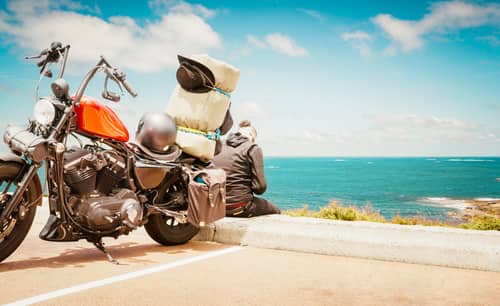
- Last Updated November 28, 2017
We're an Affiliate. If you use our partner links we earn a commsission at no extra cost to you. Thank you for your support! Read the full disclosure here .
Get organized before your next road trip! In this ultimate guide, we give you tips and hacks to help your next trip go smooth.
There’s nothing more awesome than taking a motorcycle road trip and getting the wind in your face! How you get ready can help your trip go smooth. In this guide I give you some basic recommendations how to prepare for a long motorcycle trip.
There’s little so freeing and so exhilarating as taking a long trip on a motorcycle.
Imagine the wind rushing around you as the pavement zips by under your feet. You have complete control over your body and your vehicle, and the fresh air and sunshine is directly on you without any filtration through a windshield or a metal car body.
You can experience all this freedom yourself, but it’s important to take some time to prepare yourself properly for your trip before you take off on the ultimate motorcycle tour.

How To Prepare For A Long Motorcycle Trip
Everybody has their own way of getting prepared for a road trip, but when you decide to go by motorcycle it’s a bit different.
If you’ve never planned a long motorcycle ride or have done it many times, you’ll find some useful info here.
Yes, some of these things seem like a no brainer but simple things can get lost in the shuffle of trip planning.
Here’s what I’ll cover here:
- Service your motorcycle before the trip
- Get a safety inspection
- Chose the right clothing
- Pick the appropriate gear for the trip
- Select a navigation system (preferably two)
- Plan a basic itinerary
- Create a packing list
- Special items for men and women
- Basic travel hacks
- General motorcycling hacks
- Budget for your trip
Service Your Bike Before You Go
One thing is for sure; Your motorcycle journey will end far too quickly if you haven’t taken the correct precautions to make sure that your bike is in top shape.
The last thing you want to do is end up on the side of the road, waiting for assistance and ruining your trip.
Avoid preventable issues by giving your motorcycle a thorough check-up before you embark on your trip.
You wouldn’t skimp any other time, so don’t start now!
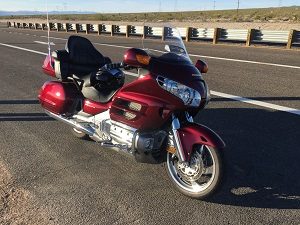
Check Your Engine Oil
The manufacturer’s service manual will give you information about how often you should be checking your engine oil, what kind of oil you should use and how frequently you should be changing the oil of your specific type of motorcycle.
I personally change my oil every 3,000 miles, but that’s just me.
However, the general rule for most bikes is to make a change every 3700 miles
If you’re making mostly short trips on your bike, or if you’re not frequently traveling on it, you’ll likely need to change the oil more frequently.
Wanna save some cash for the trip? Here’s some info on how you can do yourself. Make sure you have your owner’s manual handy for your motorcycle. If you don’t have it go to your local dealer and get the info or go online.

The steps for changing your motorcycle engine oil are fairly simple:
- Gather all your tools in one place so you’re not hunting for supplies during the changing process • Prop up your bike on your side stand, center stand or rear stand • Place a drain pan directly under the bolt to catch the draining oil • Carefully remove the bolt, but be careful not to strip it • Unscrew the oil filter with a filter wrench, being careful not to damage it • Finish draining the oil • Replace the old crush washer to maintain the threads of your oil drain plug • Clean the drain bolt, and put it back on without over-tightening it • Fill the filter about a quarter of the way with clean oil • Rub a little oil on the rubber seal to provide good contact with the engine • Also apply a little oil around the filter area on the engine • Screw in the new filter carefully, but don’t force it, and don’t use any tools to tighten it • Use a funnel to add more oil until it reads between “add” and “full” when the motorcycle is sitting upright and not leaning on a stand • Make sure you’ve replaced all the caps and bolts
For you visual learners (like me) here’s a video:
Check Your Other Fluids
Although the engine oil is the most frequently checked fluid in a motorcycle, there are several other substances that must also be examined and possibly replaced before you undertake a bike tour.
Specially if you’re going to be dealing with extreme heat or cold.
Your motorcycle coolant should be changed frequently, and most riders do it about once a year. You’ll likely need propylene glycol in your bike, but make sure that you check your manual before making any changes. Consider mixing a little ionized water with your coolant to prevent scale buildup that can damage your bike’s system.
Brake Fluid
When you’re cruising along the highway or the back roads on your bike, you want to be confident that you’ll be able to stop at a moment’s notice. Keeping your brake fluid full and properly maintained is important to your safety. Motorcycle brake fluid should be glycol-based and should be changed every 1-2 years.
Transmission Oil
Motorcycles that feature a wet clutch gearbox don’t need transmission or gear oil changed. However, if your bike has a gearbox that’s independent from your engine, you’ll need to check the transmission oil at least once a year.

Most manufacturers suggest that you change your fork oil every 1-2 years unless you frequently ride off-road or travel extremely long distances. Make sure that you fill your forks to the prescribed levels. Both too much and too little oil can have dire consequences on the ability of your bike to perform.
Keep a sharp eye wherever you park your bike for the tell tale signs of oil on your front tire and on the ground.
Hydraulic Clutch Fluid
Treat your hydraulic clutch fluid the same as your brake fluid. In fact, you can often use the same fluid for both, and you should change them at the same time to make it easier on yourself to remember your maintenance schedule.
Check Your Tires
You can’t forget to check your bike’s tires. The most important aspect of tire safety is inflation; you have to have proper air pressure in your tires in order to maintain the performance and the life of your wheels.
Under inflation of your front tire specially will make turns (you’ll really notice it at low speeds) more difficult. If its hard to turn the front wheel at low speeds or even sitting still, changes are your front tire is too low.
As always, examine your bike’s manual to find out the perfect tire pressures, but there are some basic steps for examining and adjusting your tire pressure: • Visually check your tires at least weekly but always before a long trip • First read the recommendations for tire pressure on your motorcycle for single riders or passengers/cargo • Never exceed the tire’s load limit to avoid tire failure • Check the current tire pressure and adjust the tires as necessary • Inspect the tread depth of your tires • When the tread is worn to about 2/32 inches of tread remaining, you need to replace your tires • Look over the tire surfaces for evidence of cuts, embedded objects or sidewalls cracking • Clean your sidewalls with a mild soap solution to make it easier to check your tires more quickly
In addition to checking your motorcycles manual, take a look at the sidewall on your tires. Each tire should have a number with “psi” behind it, that indicates how much air that tire can hold.
For example, “45 psi”.
Most motorcycle tires will last somewhere between 5,000 and 15,000 miles, depending on your weight, your common riding conditions and other factors.
Did you just change your motorcycle tires?
If you just put brand new tires on your motorcycle make sure you take some time and break them in. If your not sure, check out our article on how to break in new motorcycle tires . It’s easy and will save you from getting in a crash.
https://www.youtube.com/watch?v=RVfPiwa35zU
Have a Professional Safety Inspection
This is highly recommended. Even if you’ve been maintaining your bike, it’s a good idea before a long tour to have a professional inspection done to double-check for problems that you might have missed. This is an even better idea if you’ve been a little lax in the care of your bike.
Your dealership or a local mechanic would be a good place to have this thorough inspection completed. These are the areas that you should make sure that your professional examines for you: • chassis, wheels and suspension • fasteners • steering head bearings, leaking seals or restricted movement on front forks • swing arm • rear shocks • brakes and brake pads • brake rotor and brake drum • final drive chain, belt and shaft • air and fuel filters • transmission and primary drive • engine • fuel and vacuum lines • exhaust system • electrical system • battery • turn signals, gauge lights and warning indicators • headlight, driving and fog lights • horn • wiring and switches • clutch, brake and throttle operations • mirrors • luggage rack, saddle bags and top case • crash bars
If you have a buddy that can perform the inspection great! If not, it’s worth paying a few bucks to have it done.
Have the mechanic go over all the inspection points with you so that you have a thorough understanding of the condition of your motorcycle.
This will help you in case something does go wrong, you know the condition of the bike when you started and gives you a reference point to help isolate problems.

Choose Your Clothing
Riding a motorcycle is great fun, but only if you’re properly dressed for the experience.
When you’re on your bike, you’re at the mercy of the outdoor elements, and you’re often traveling at high speeds.
You need to be dressed appropriately for your trip; otherwise, the entire experience will be less fun for you. In fact, ‘less fun’ is an understatement – you will be miserable!
As obvious as it sounds, the type of clothing that you wear will depend greatly on the weather in which you will be riding. A lot of riders either forget or don’t bother to dress appropriately for weather they know they will going into.
For example, if you’re traveling through Texas during the hot summer months, you’ll want to adjust your attire to keep you cooler.
However, if you’re riding through snow-covered terrain, warmer clothing will be more appropriate. Don’t forget about changing weather and precipitation as well.
If you’re going on a long tour, you’ll want to have some different pieces of clothing that will cover many different situations.
Gather Your Basic Clothing Needs
No matter what the weather or climate conditions of your ride, there are a few items that you most definitely need with you. These include: • a helmet (sometimes I carry two depending on space. A full helmet and a half shell) • gloves • a jacket • boots These items are necessary for safety as much as for comfort. Most motorcycle accidents cause injury to the legs, face and jaw areas, and these piece of clothing will best keep you safe.
Choose the Right Motorcycle Jacket and Pants
In addition to a helmet, the most important pieces of clothing you should consider for your motorcycle tour are a good pair of pants and a jacket.
The materials that you choose for these items really depend on your personal preferences. Many bikers opt for leather because it offers protection from abrasions, sometimes called “road rash.” However, leather can be stiff, uncomfortable and hot.
Other bikers prefer to wear a suit made of composite fabric materials that allows you to wear other clothing underneath it and that is easy to take on and off.
Many of these suits are completely waterproof, giving you protection in the rain. Try to find something with some padding or armor around the shoulders, back and elbows for extra protection.
When you’re choosing a jacket, make sure that your sleeves aren’t too long. You don’t want them to bunch up around your wrists, making it more difficult for you to steer safely. If your sleeves are too short, they won’t provide any protection.
Basic Motorcycle Jacket Feature To Look For
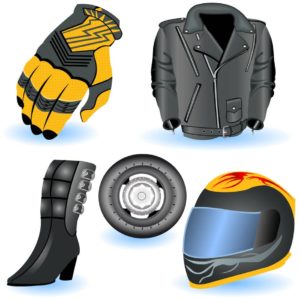
This nice thing about this set up if it’s too hot, you can just take off the outer shell and wear the inner that has the armor in it.
Joe Rocket is a popular brand that comes to mind that has this feature, but there are many others.
The same is true when it comes to the length of your pants. Many riders choose to wear jeans, but this material offers almost no abrasion protection. Look for pants that gives padding around the knees, hips and tailbone for the most safety.
Pick Appropriate Boots and Gloves
Gloves and boots are also important to the comfort and safety of your ride. You need some sort of hand protection, and riding gloves are the best.
For a long-distance tour, look for gloves that are snug but not so tight that they are uncomfortable or that they will come off during an accident.
Your gloves should have wrist straps and long gauntlets that will help keep them in place, even as you’re moving.
If gauntlets aren’t your thing, just make sure that you have gloves that are comfortable and keep your hands protected.
Boots are often overlooked in their significance, with many riders choosing hiking or work boots.
However, you need a good riding boot that covers the top of your ankle to give you the best protection. You should have padding or armor around the heel, ankle, toe and shin areas.
You also want something with a comfortable fit and good traction.
The traction of a riding boot gets overlooked a lot. If your boot doesn’t provide good traction, your feet can slip out from under you and your coming to a stop (at a stop light for instance) causing you to drop your bike.
I’ve had many times that this has nearly happened to me due to my footwear, and it always causes me to think twice anytime I get on my motorcycle.
Consider Other Clothing Ideas
After you have the basic pieces of your riding attire, consider some other options that will increase your comfort and your enjoyment of your trip.
These could include: • long underwear that provides insulation and moisture wicking • an electric vest for keeping warm in cold climates • polar fleece for underneath your pants or jacket • a full riding suit for exceptionally cold weather • hand-warmers in your gloves or boots • a vented helmet for hot weather • a vented jacket for hot weather • a wet bandana around your neck for cooling • a rain suit for extremely wet weather • rubber booties under your boots for waterproof protection
Although it may be tempting just to wear a t-shirt and shorts in hot weather, remember that you want to keep your body safe. Leaving your skin completely exposed may feel cool, but you’re putting yourself at risk for road rash and other injuries.
When it comes to shirts, wear a long sleeve shirt. I have several summer style long sleeve shirts on hand that are made of lighter material that I can wear.
This keeps my arms covered, but give me nice comfort in the heat.
Select a Navigation System Or Method
Whether you completely plan out your motorcycle tour before you set off, scheduling all your stops, or you opt for a freer trip with no planned destinations, you’ll need some sort of navigation system to track your direction and your location.
Although I would recommend that you have some sort of trip plan in place even if you opt for the ‘freer trip plan’.

Use a Paper Map
Although seemingly “old school” in terms of travel and navigation, there’s no reason that you can’t rely on a paper map to help you plan and track your motorcycle tour.
Purchase a map that shows the entire area that you’re planning traverse, or locate several maps to piece together to create the entire region.
Topography maps are especially useful for motorcycle riders because they can warn you about particularly rough terrain or altitudes that may be more difficult to cover by bike.
You should also consider using a waterproof map. Because you may need to refer to your map throughout your journey, even in inclement weather, a waterproof map will save you a lot trouble and lost time if your paper becomes damaged from rain or snow.
Not my cup of tea but still a great map hack
A great trick for planning your trip with a paper map is to use string to quickly determine distances.
String is very easy to pack into your gear, and it won’t let you down when you don’t have cell phone service to access your GPS.
Using the key on your map, make dark marks on your string at reasonable intervals, such as every 50 miles.
When you place the string on top of the map, these marks help you see the distances between locations. For example, if you’re thinking about making a side trip to a nearby town or landmark, you can place the string from your current location to the potential stop.
If there are 1.5 string marks from your current location to the stop, you know that it’s about 75 miles away, and you can plan the extra time needed to get there and back on track.
This method is an excellent way to plan side trips and to estimate the times you will arrive at your overnight locations.
Pick a Free GPS App
If paper maps aren’t your style, or even if you want another method of tracking your tour, there are many apps available on your cell phone. Even better, many of these GPS trackers are free for you to use and to enjoy, whether you’re an iPhone or an Android user.
Google Maps
Google Maps is probably the most used free GPS app. It provides very accurate maps, often updating as Google works to improve its services. You’ll also receive voice guidance and even turn-by-turn directions. However, those services are difficult to utilize on a motorcycle when you’re outside, when it’s noisy and when both of your hands need to stay on the handles.
If you have an iPhone, another popular choice is Waze. This app relies on user-generated traffic information to create its maps. There are fewer voice prompts than some other apps, but Waze gives excellent information about the road conditions and the potential for slow traffic on your desired route.
I like using this app on the motorcycle and when I’m traveling by car, it seems easier to use.
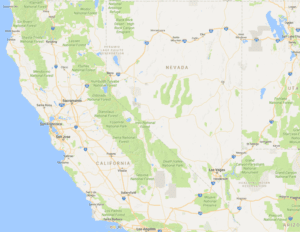
Another iPhone option is Here Maps, a free but offline source for driving, pedestrian and cycling navigation. The benefit of this service is that it’s available offline, so you can use it even if you’re in a remote or out-of-service area.
The InRoute app is also free for iPhone users. If you want up-to-date information about weather and for planning your trip around the sunrise and sunset times, this is the app for you. To get the most out of InRoute, however, you’ll need to purchase the premium upgrades and to learn to navigate the sometimes-confusing interface.
GPS Essentials
If you’re an Android user, check out GPS Essentials. Although the interface is a little out-of-date, you’ll appreciate the dashboard that monitors your altitude, distance traveled, average speed and even estimated time of arrival. This app is useful for navigating outdoor trails as well as roadways, so it may be perfect for a backcountry tour.
Plan a Basic Itinerary
As a motorcyclist looking to go on a tour, you’re probably at least somewhat constrained by your timeline. Whether you have work or other commitments weighing on your time use, you’ll have to find ways to accomplish your traveling goals while still being faithful to your available timeframe.
There truly is no right or wrong way to go about planning your trip. It is your tour, and you have the ability to make any stops or changes that you want. Likewise, you can choose how to plan your route and whether to use a map or planning software. You could even choose to not make any plans at all.
If you would like to plan your trip, it can be a very time-consuming process, especially if you’re traveling in a group.

Consider these suggestions to get you started in your planning:
1. Decide where you want to go. It’s very difficult to create a useful itinerary if you don’t have an end destination in mind.
2. Do a little research. You don’t have to fill notebooks with statistics and other factual information, but it does help to read
travel blogs or forums or to watch some videos made by other travelers.
3. Make a list of places or activities that you definitely want to experience during your trip.
4. Map your main route. You can choose to use a map, planning software, or any other source. Plug in your start and finish locations, and then you can find the best, fastest or even most scenic routes in between.
5. Figure your daily mileage. This will help you determine the best places for your overnight stops. You can start by dividing the total mileage evenly over your trip length, and then you can adjust as necessary for points of interest. The ideal daily distance on a motorcycle is usually 200-300 miles.
6. Plan your stops. Think about places that you want to see, where you will stay overnight and what food might be available in each of these places. Don’t forget about needing gas stations at regular intervals as well.
7. Divide your trip into individual days. You can plan it in a GPS device, make a spreadsheet or even write it down on a calendar. Use the method that works best for you.
Once you have a tour planned, remember that you can always adjust as necessary, even if you are already on the road. There’s no reason that you must be tied to a particular itinerary; don’t feel like you’ve wasted your time in mapping out your trip and then making changes.
Create a Good Packing List
Creating a packing list for yourself is going to a long way to getting you organized for motorcycle trip (or any trip really).
Even with the basic clothing needs met, there are still a lot items that you need to take into account when you’re making your motorcycle tour packing list.
Think about your own needs for your specific trip, but consider these popular items for your motorcycle:
• luggage, such as saddlebags, a tail bag or some other type of storage • a GPS system and maybe a GPS mount • a good motorcycle cover • bungee cords for attaching luggage and other important items • a lock or security system for your stops • a tool kit, including wrenches and a screwdriver • a tire repair kit, including tubes, patches and plugs • roadside cleaning supplies, such as a cleaner and a cloth • chain oil or wax • a spare key
I keep my packing list on my phone and on my computer so I have it in multiple locations in case I lose one copy of it.

You’ll also need clothing for the entirety of your trip. This might include:
• underwear • wrinkle-free shirts and pants • a sweater, sweatshirt or pullover • a windbreaker or other light jacket • walking shoes or sandals for exploring off-bike • hats or visors • sunglasses • a swimsuit • plenty of socks • dress clothes if appropriate
Don’t Overpack
Don’t over pack some these items like socks and underwear.
It sounds crazy, but I only take a maximum of three pairs of underwear. I wear one pair (of course) and pack the other two. The key here is to spend a little more money and buy underwear of breathable material.
Not only are they more comfortable, but they’re easy to wash and dry in your hotel room if there is no laundry available. With a lot of the newer breathable polyester materials they will dry out in 10 – 15 minutes.
Socks I’ll pack about 5 days’ worth (maybe 6) and make sure that at least one or two pairs are heavy enough to keep my feet warm.
When it’s done right, socks can also be washed in the hotel room
Toiletries And Personal Items
Finally, remember that you’ll want all of your own toiletries for personal hygiene and grooming purposes.
Think about any particular issues you might have on a long bike ride that might be different than traveling via other modes of transportation.
Some suggestions include: • pharmaceuticals, such as anti-inflammatory or pain meds or anti-allergy meds • bug repellant • laundry detergent • favorite soap, shampoo and deodorant • toothbrush, toothpaste and floss • grooming supplies, such as shaving cream, a razor and nail clippers • glasses, contacts contact solution • sunscreen • universal adaptor/phone charger • wallet with cash and/or credit cards • identification, including a passport if you’re crossing country lines
Choose Special Items for Men
Male motorcyclists are notorious for minimalist packing. In addition to the previously mentioned items, some men will add a few more tools and perhaps a laptop. Depending on your overnight plans, you may also want to pack a tent, pillow and cooking supplies if you intend to camp rather than to stay at a motel or another type of lodging.
When it comes to minimal packing, I pride myself on how little I can get away with taking. This becomes a source of consternation for my gal when we do ride prep.
If you experiment with your packing, you’ll be surprised at how little you really don’t need to carry.

Choose Special Items for Women
Like their male counterparts, females may have a few additional items that they would like to include in their packing lists. Sometimes women choose to include more than just the minimal amount of clothing, adding more outfits.
Remember, you can always stop at a laundromat for a few hours to clean your clothes.
Some female riders are also interested in managing their hair and their makeup on the trip. You won’t have a lot of room for packing these supplies, so try to stick to as little as you need.
For example, use a combination sunblock and foundation. Pack a good lip balm rather than a lot of lipstick.
Keep in mind that your hair will be in your helmet a lot of the time, so focus on just the hair products that you will need, including hair bands and clips and a travel blow dryer if necessary.
Don’t forget about feminine hygiene products as necessary.
Check Out These Travel Hacks
There’s no better way to enjoy your motorcycle tour than by getting a great deal on many of your travel necessities. Check out these travel hacks to find more ways to save big on your trip.
Look for Hotels Deals
Even if you decide to plan your journey before you begin, you don’t have to book your hotels in advance. In fact, finding a place to stay at the last minute can actually help you score some of the best deals.
Try some of these ways to find cheaper hotel rooms:
• Check sites like Roomer and Cancelon to find hotels with late cancellations that will offer a reduced rate to fill those rooms. • Look for Groupon or Living Social deals. • Sign up for Kayak to get price alerts on hotels that you like. • Subscribe to travel organizations, such as AAA, to get membership discounts. • Try a bidding site like Priceline to find last-minute hotel deals. • Call the hotel directly, and ask whether it has any deals that you could use.
Download Hotel Apps
Another good way to find last-minute hotel deals is through hotel apps. These applications offer a quick route to great deals.
HotelTonight
Available for both iPhone and Android users, this is one of the original same-day booking aps to be created. The deals change daily, but you can’t reserve a room until after noon of that day.
This is my personal favorite and has kept a roof over my head many a night! I tend to do things on the fly, so this app works great for me.
Booking.com Tonight
If you’re an iPhone user, check out this app that offers some of the best comparison shopping options. Unlike many other apps, Booking.com Tonight offers deals starting at midnight, but you can only choose one or two nights at a time.
Use These General Motorcycling Hacks
Biking for long distances can take a toll on your body and your wallet.
Check out some of these motorcycling hacks for your next long tour:
• Use a $5 bungee net to strap just about anything onto your bike. • Add extra insulation by crumpling up some newspaper and by stuffing it inside your jacket or your pants. • Wear the free plastic gloves at the diesel gas station pump inside your riding gloves for extra warmth. • Use an empty water bottle to carry spare gas with you. • Wear tight bicycle shorts under your riding pants for extra compression and fewer sore butts. • Place some tape across the brim of your helmet visor to help reduce glare. • Use unscented baby wipes to remove tough messes from your leather. • Stuff newspaper in your wet boots overnight to dry them out and to prevent odor. • Take your helmet liner in the shower, and clean it with Johnson’s baby shampoo. • Put a crushed can under your kickstand if it won’t stay put in gravel, mud or soft sand.
Budget for Your Trip
Before you begin any kind of long trip, you should set an ideal budget. When traveling, it’s very easy to spend a lot more money than you want to spend.
Between lodging, food and other supplies, your money can just fly out of your pockets. You don’t want to go into debt over this trip that is supposed to be fun and exciting.
Beyond the initial start-up costs of buying a motorcycle, camping equipment or other necessities, these are the items to think about in creating a budget for your travel: • lodging • fuel • food • maintenance • supplies • emergency money

Determine how much you’re comfortable spending in each of these categories. For example, you may choose to camp along your route to save lodging money but to splurge on your dinners, spending more on food.
Just remember that if you choose to camp, that means having to pack and store more gear that maybe you otherwise would have.
All this is fine, as long as you aren’t going beyond your overall trip budget. Always remember to set some money aside for bike maintenance, especially if your trip is thousands of miles long,
Make sure you also plan for emergencies that you can’t predict, such as an injury, a major bike repair or a loss of personal items.
What are your suggestions on how to prepare for a long motorcycle trip? Have some cool hacks or suggestions, let us know in the comments below.
Find Deals On Gear
We have partnered with Revzilla to get you great deals on motorcycle gear. Click the button below to find the latest gear and discounts.
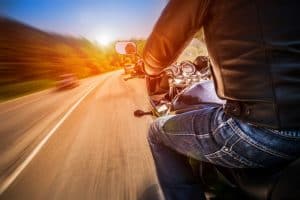
How To Transport A Motorcycle In A Pickup Truck: Simple Easy Guide

What Are Shorty Levers; Transform Your Bikes Performance
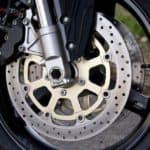
Motorcycle Tire Pressure Recommendations And Checks

WAIT! Don't Leave Yet
We have a lot of great content on this site. Click the button to read our most popular article.

The Complete Guide to Long-Distance Motorcycle Riding
Long-distance motorcycle riding is not for the faint of heart. Taking your bike to and from the office is one thing, but straddling two wheels for long hours over multiple days is a whole different kettle of fish. Therefore, you can’t go into touring without a plan, an idea of what to expect, and an arsenal of tips for long motorcycle trips.
With that in mind, we’ve put together the essential guide to long-distance motorcycle riding. After reading this, you’ll have more confidence to make your road trip both successful and memorable (for all the right reasons).
Remember to Be Flexible
Before we get into it, we’re going to give you the number one rule of long-distance road trips: be flexible.
Of course, you’re going to need a plan. However, plans change. It doesn’t matter how good your plan is, there’s always the potential for complications, including:
- Weather complications
- An unexpected get-off
- General riding fatigue
As a result, always leave a little wiggle room in your plan. Whether this be for the above or for a kitsch sightseeing opportunity (‘Ostrich World’ anyone?) – remain open-minded about your riding schedule.
Motorcycle Touring Preparation: How to Get Ready
Now that we’ve got the number one rule out of the way, here’s what you need to get this show on the road.
Plan Your Route
To begin, it’s always important to know where you’re looking to go and the best route to take.
Seems obvious, right? Well, yes. But this essential first step will determine everything you need to learn, prepare for, and pack for your road trip. This will also allow you to plan out your daily riding goals, as well as your breaks along the way.
PRO TIP: It’s best to stop for meals during quieter serving time. That way, you’re not wasting valuable riding time waiting for food. So, in the lead-up to your trip, practice eating breakfast between 10 am and 11 am or lunch between 2 pm and 3 pm.
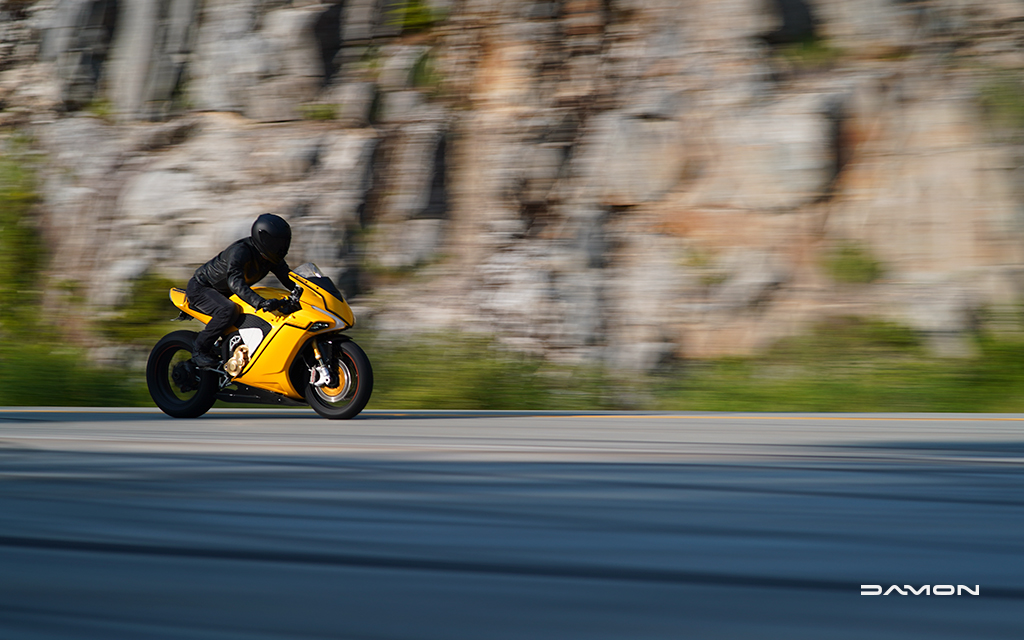
Build Riding Stamina
You can’t go from commuting mode to touring mode overnight. Moreover, if the extent of your riding is a leisurely ride every weekend, you’re going to need to build up some riding stamina.
We recommend slowly building up your stamina in the weeks leading up to your trip. So, one day, go 50 miles. Next weekend, go up to 100. The weekend after, crank it to 150. And so on and so on. Keep doing this until you feel comfortable covering a substantial amount of miles in one day.
This will get you accustomed to longer distances and give you the chance to test out various luggage set-ups before you set off (more on that later).
Focus on Your Own Level of Fitness
In addition to building your riding stamina, you need to work on your own stamina. Long-distance motorcycling is both mentally and physically taxing. Therefore, you should get into good shape before hitting the road.
However, you don’t need to get shredded or look like an extra in Magic Mike. A good level of cardiovascular fitness and endurance will put you on the road towards a successful tour.
The knock-on effect of improving your fitness is that it will help you maintain focus and concentration and, therefore, improving your motorcycle safety. On top of that, you’ll have more energy in between rides, too!
PRO TIP: Don’t stop there! If you want to feel fresh and alert on the road, you should also work on improving your sleeping and eating habits. We recommend installing a sleep app and eating more mindfully before your trip.
Refine Your Motorcycling Set-Up
While you’re building up your riding stamina, it’s worthwhile fine-tuning and refining your motorcycling luggage set-up.
Here are some of the different motorcycle bags and luggage options you may want to test out or consider for your road trip:
- Leg waist belt
This will allow you to get used to riding with luggage and will give you an idea of what your final packing list will look like.
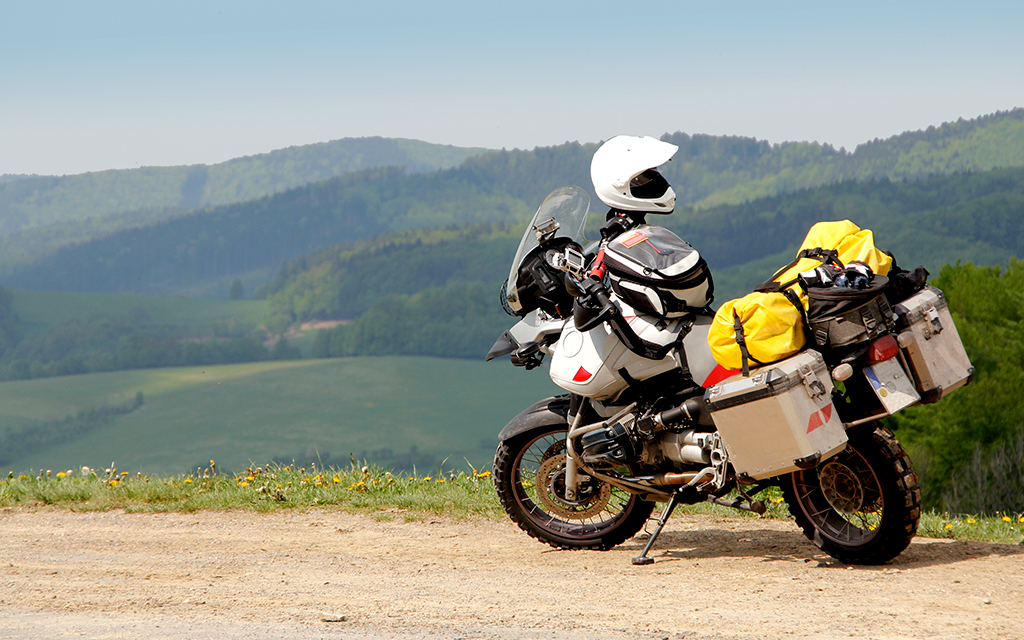
Get a Final Packing List Together
In order to land on your final luggage set-up, you’ll need to put together a final packing list in addition to a general checklist to make sure you and your bike are tour ready.
There are a lot of variables that go into both of the above, and they will differ depending on:
- The length of your trip
- The conditions you’re riding in
- Your accommodation along the way
- Your weight and your bike’s weight (and the weight of any passengers)
It sounds complicated, but it really isn’t. You just need to get organized and prepare early on.
Tips for Long Motorcycle Trips: What to Know When You’re on the Road
Start your engines! Now you’ve got everything ready, here are some tips to follow while on the road.
Start Early
Long-distance motorcycle trips mean early starts. This can be challenging if you – or members of your party – aren’t morning people. However, it’s in your best interest to use all the hours of daylight available to you.
Early mornings mean you’ll be able to cover more asphalt and give you a window to be flexible.
Take Smart Breaks
There are lots of different types of breaks you may take while on a long-distance motorcycle road trip – these could include:
- Lunch breaks
- Coffee breaks
- Water breaks
- Stretching breaks
- Bathroom breaks
- Refuelling or recharging breaks
A bad habit a lot of riders fall into is thinking these need to be done separately. Far from the truth. We would recommend combining all of these.
The perfect place to do so? A motorcycle service station. A stop allows you to quickly refuel, eat/drink, go to the bathroom, and stretch your legs all within the shortest time possible.
PRO TIP: If you’re riding an electric motorcycle , you’ll need to plan out where you’re going to charge up before hitting the road. We recommend bookmarking some electric vehicle charging stations on your route through the PlugShare website – preferably ones where you can grab a quick bite.
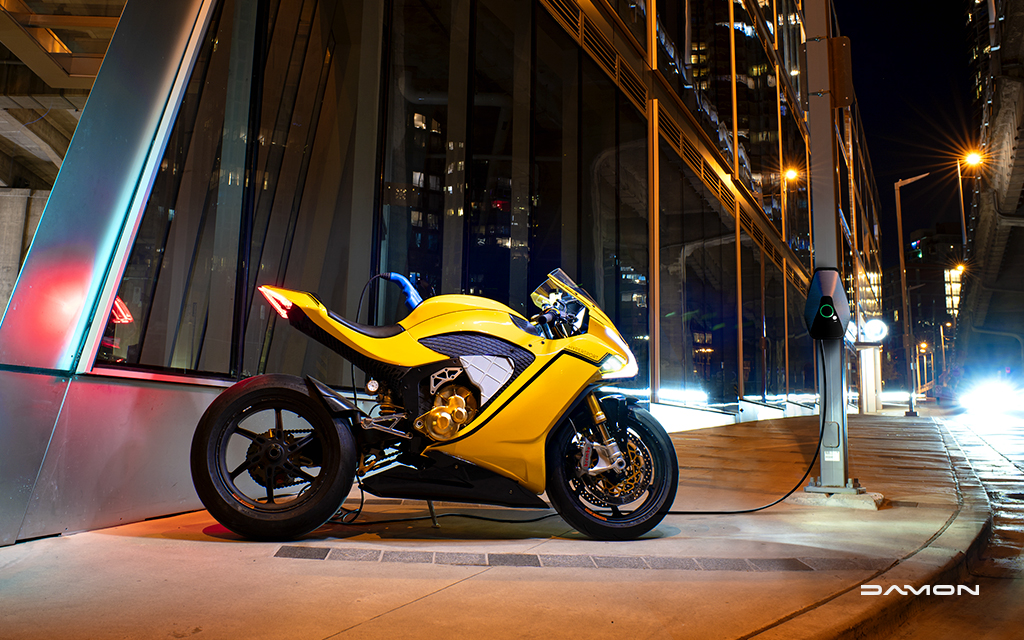
Eat Little and Often
As mentioned above, you want to have multiple quick bites while on the road. By that, we mean eating small amounts frequently.
We get it. When you’ve been riding all morning, it’s tempting to have a huge lunch and a cold beer. However, you will not thank yourself when it comes to your afternoon riding – you’ll end up too full and lethargic.
Save your big meal – and that brewski – for the evening, after you’ve finished riding.
Drink Lots of Water
We can’t stress how important it is to remain hydrated during a cross-country motorcycle trip. Think of it this way, would you run a marathon without drinking a lot of water? Of course not! The same applies here.
Long-distance riding is also a marathon, you’re just using two wheels instead of two legs. What’s more, if you’re touring during the summer, wearing full leathers, and sitting above a hot engine all day – you’re going to sweat a lot! That water needs to be replaced.
However, much like eating, you don’t want to chug a couple of liters of water in one go! It’s better to continuously drink small amounts while on the road. The easiest way to stay hydrated en route is to pack a water bladder, keep it filled up, and position the hose close to your mouth.
Aid your Hydration With Electrolyte Supplements
As anyone who has ridden in very hot climates will tell you, it’s normal to drink up to 5-6 liters of clear stuff a day.
However, that’s easier said than done and you don’t want to fall into a situation where you’re lacking in salts. Therefore, we recommend packing some electrolyte drinks or tablets as an extra precaution.
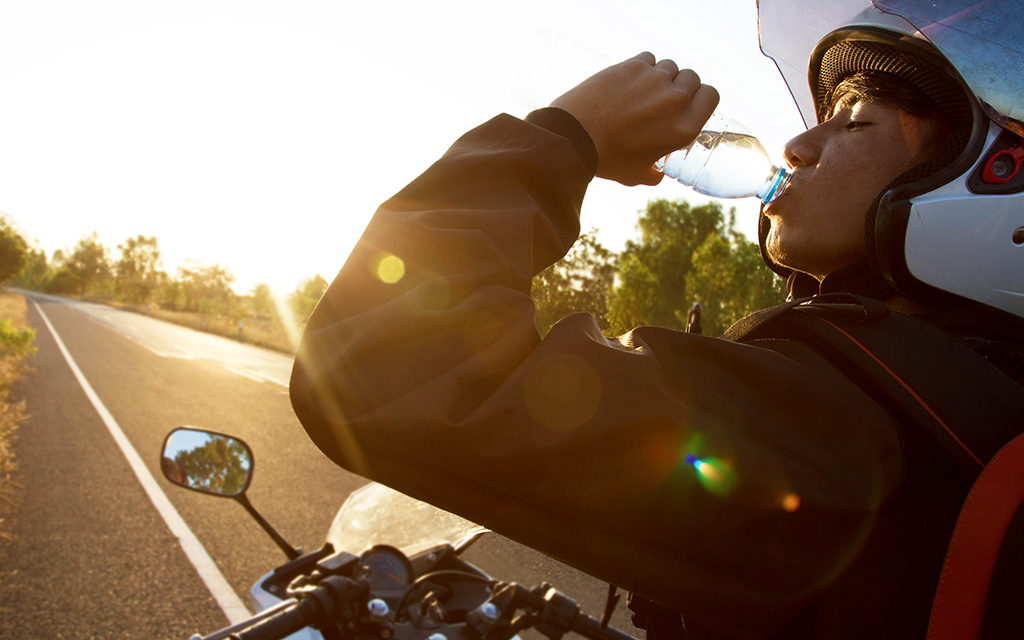
Drink Less Coffee
Caffeine is one hell of a drug. A cup of joe gives us that much-needed jolt in the morning and, on the road, it’s no different.
That being said, even if you’re a caffeine-lover, we recommend keeping an eye on your caffeine intake during your road trip. If you have too much at once, you’ll go from being wired to having a monumental energy crash. This will both affect your enjoyment of the ride and dull your senses, potentially resulting in you making mistakes while riding.
If in doubt, always go for water over coffee, tea, or energy drinks!
Wear Earplugs
While we believe you should wear earplugs every time you ride, you especially need them for the long distances you’ll be covering.
Consistent engine, traffic, and wind noise can not only damage your long-term hearing, but they will also sap your energy levels, give you headaches, and affect your sleep while on the road. So, do yourself a favour, and invest in some high-quality earplugs.
Take a look at some of the motorcycle earplugs we recommend in our blog on must-have motorcycle gadgets .
Be Ready For Flat Tires
Punctures are predictable. You can never be sure when a flat tire will occur, so make sure you’re ready for it.
Therefore, we recommend you keep a small repair kit and an inflation tool (pump or CO2 cartridges) somewhere easy to access in your road trip luggage. Furthermore, if you have tubed tires, be sure to remember spoons and have some way of raising your bike.
Change Tires Before the Trip
If you’re going on a really long journey or heading on a tour with challenging road conditions and elements, it may be worth changing your tires.
With motorcycle tires of over 5 years, it’s recommended you do an annual inspection, while motorcycle tires of over 10 years need replacing. However, you know your tires and your rides!
You should visually inspect your tires , the depth of the threads, and any damage caused by impact or unusual wear and tear. If in doubt, get an inspection ahead of your trip. However, if your tires are around the 5-to-10 year mark, consider treating yourself to some new ones ahead of your trip.

Our Final Tips for Long Distance Motorcycle Riding
Just to be sure you’ve dotted all the i’s and crossed all the t’s, here are some final tips to ensure your motorcycle tour is a complete success.
Choose Your Riding Crew Wisely
You don’t want to be halfway on your trip and realize your riding buddies don’t share your riding style. This will end up causing friction and arguments in the groups and can lead to a big motorcycle touring no-no: riding angry.
Riding angry not only stops you from enjoying the road trip, but also puts you and others at risk. Your attention will end up on how often the other rider wants to stop or how late they wake up, instead of the road!
So have a serious think about who you go with and if you have the same riding style or goals. And, if you and your motorcycle riding community are on a different page, you can always ride solo!
Let Others Know Where You’re Heading
If you do decide to ride alone, it’s a good idea to let people close to you know your itinerary.
When you’re on a long motorcycle journey, chances are you’ll be riding through unfamiliar territory. However, by letting friends and family know where you’re heading, in the unlikely event that something goes wrong, you can rest easy knowing they’ll know where to find you.
Moreover, due to the wonders of modern technology, there are multiple apps where you can plot your ride and where others can track your progress in real-time.
How in-depth you decide to go is up to you, just be sure to let others know where you’re heading!

Sort Your Accommodation Ahead of Time
Whether you’re staying in hotels, motels, hostels, or campsites, we recommend you get it all booked ahead of time.
There are a few benefits of sorting out accommodation before you head out, including:
- It’s better than doing it after a full day of riding
- Ensures accommodation isn’t sold out (during peak season or a popular event nearby)
- It’s usually cheaper!
However, if you’re unable to book ahead of time or your bookings don’t work out for some reason, we’d like to remind you of rule #1 again. Yep, be flexible.
The Golden Rule: Enjoy it!
Being flexible and following all of the above will help you achieve the golden rule of any long-distance motorcycle trip. Above all else, enjoy yourself!
A motorcycle road trip reminds us of the reasons we began riding in the first place: being off the grid, exploring unfamiliar and beautiful places on two wheels, and meeting like-minded people along the way.
Follow the above, and you’ll be ready to hit the road and fully enjoy your road trip!

Mark Linsdell
Related posts.

5 Future Changes in Automotive Technology We’re Expecting to See

The 10 Best Motorcycle Movies of All Time

5 Steps to Prepare Your Electric Motorcycle for Winter Storage
Visit damon.
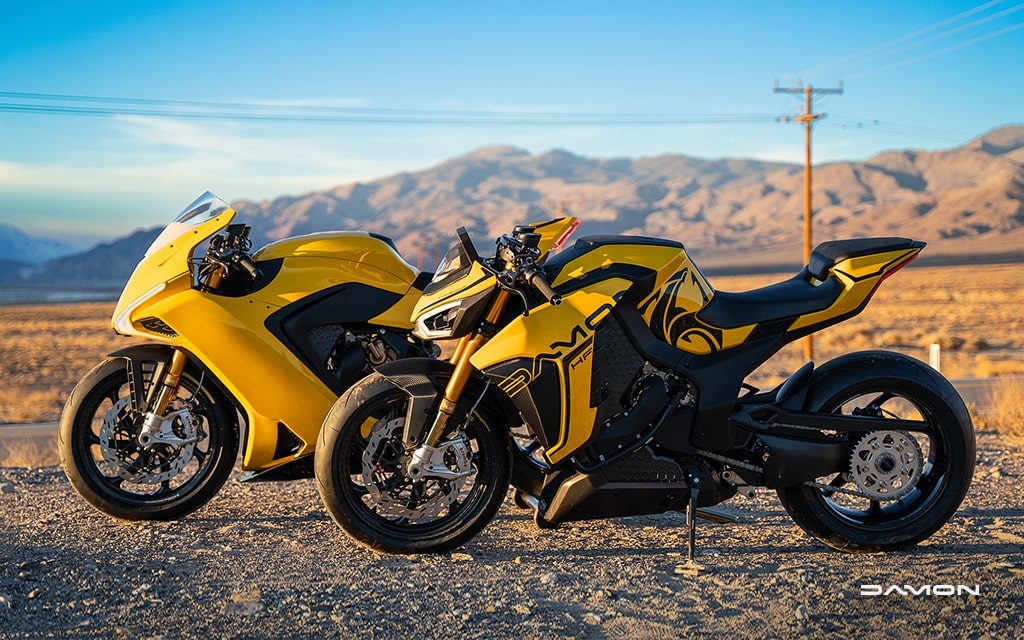
- Damon Motorcycles
- Electric Motorcycle
- Future Motorcycles
- Motorcycle Industry
- Motorcycle Technology
- Motorcycling Gear
- Uncategorised
Recent Posts
- How Damon’s HyperDrive is Changing Everything we know about Motorcycle Design
- 9 Things To Avoid When Buying Your First Motorcycle
- Do You Need a License for an Electric Motorcycle? (And Other FAQS)
- The Complete Guide to Electric Motorcycle Incentives and Grants [USA Edition]
- The 8 Must-Have Gadgets for Motorcycle Riders
Motorcycle Destinations
The ultimate guide to planning your first motorcycle road trip.
Table Of Contents

The allure of the open road, the hum of the engine beneath you, and the thrill of discovery around every bend—there’s nothing quite like embarking on a motorcycle road trip. The freedom and exhilaration of long-distance riding are unparalleled. However, a successful road trip requires careful planning and preparation. From pre-ride inspections and route planning to packing essentials and practicing safe riding, there’s much to consider. This comprehensive guide provides essential “motorcycle road trip tips” to ensure your first long-distance ride is not only memorable but also safe and enjoyable.
1. Pre-Ride Motorcycle Inspection and Maintenance
Ensuring your motorcycle is in top-notch condition is the first step in planning a successful road trip. You don’t want mechanical issues spoiling your adventure or, worse, causing safety concerns. Here are some key areas to inspect:
- Oil and Fluid Levels: These are the lifeblood of your bike. Check your oil, brake fluid, and coolant levels. Top off or change as necessary.
- Tires: Inspect for adequate tread depth and signs of wear or damage. Check the tire pressure and adjust according to your bike’s specifications and the load you’ll be carrying.
- Lights, Brakes, and Signals: Test all lights—headlight, taillight, brake light, and turn signals—to ensure they’re working correctly. Check the brake pads for wear and replace them if needed.
- Chain and Sprockets: Clean, lubricate, and adjust the chain tension as per your bike’s manual. Inspect the sprockets for wear.
- Batteries: Ensure your battery is fully charged and the terminals are clean. A failing battery can leave you stranded.
2. Route Planning and Break Management
While part of the thrill of a road trip is the sense of freedom and adventure, it’s wise to have a basic plan.
- Route Selecti0n: Research the roads you’ll be traveling. Use online mapping tools to get a sense of the route. Check for road conditions, weather forecasts, and local attractions you might want to visit.
- Accommodation: If you’re planning a multi-day trip, consider pre-booking your accommodations. After a long day of riding, knowing where you’re going to rest can be a relief.
- Rest Stops: Plan to take regular breaks. Riding a motorcycle can be physically demanding. Regular rest stops will help you stay alert and reduce the risk of fatigue-related accidents.
3. Packing Essentials
Packing for a motorcycle trip requires careful thought. Space is limited, and carrying too much can affect your bike’s handling. Here are some essentials to consider:
- Tools and Spares: Pack a basic tool kit, spare fuses, spare keys, and a tire repair kit. If your bike uses tubes, consider carrying a spare one.
- Clothing: Pack according to the weather and remember, layers are your friends. Don’t forget your rain gear, even if the forecast is clear.
- Hydration and Nutrition: Carry a hydration pack or water bottles and remember to stop regularly to refill. Pack high-energy snacks like nuts or energy bars.
- First Aid Kit: A basic first aid kit can be a lifesaver. Include band-aids, antiseptic wipes, tweezers, painkillers, and any personal medication.
4. Dress Appropriately
Dressing appropriately for a motorcycle road trip is about more than just comfort—it’s about safety. Wearing the right motorcycle gear can protect you from the elements and potential road accidents. Here are some clothing essentials:
- Helmet: Choose a helmet that fits well and meets safety standards. Full-face helmets provide the best protection.
- Jacket and Pants: Look for gear that’s made of durable materials like leather or abrasion-resistant textiles. Consider gear with built-in armor for additional protection.
- Gloves: Your hands are often the first thing to touch down in a crash, so protective gloves are a must.
- Boots: Durable, over-the-ankle boots can protect your feet and ankles in case of an accident and provide support and comfort during long rides.
5. Stay Hydrated and Energized
Hydration and nutrition are key factors in staying alert and energized on the road. Dehydration can lead to fatigue, reduced reaction time, and impaired judgement. Carry a hydration pack or water bottles, and plan regular water breaks. Pack high-energy, easy-to-eat snacks like trail mix, energy bars, and fruit.
6. Practice Safe Riding
When you’re on the road, safety should always be your number one priority.
- Ride within your limits: It’s easy to get carried away in the excitement, but it’s important to ride within your skill level.
- Follow traffic rules: Adhere to speed limits, signal your intentions, and always maintain a safe distance from other vehicles.
- Stay vigilant: Keep an eye out for road hazards like potholes, gravel, or animals. Be aware of the vehicles around you and always have an escape route in mind.
Conclusion
Planning your first motorcycle road trip can seem daunting, but with careful preparation, you’ll be ready to hit the open road with confidence. Remember, the journey is as important as the destination. Take your time, soak in the sights, and enjoy the unique sense of freedom and adventure that only a motorcycle road trip can offer. So gear up, ride safe, and embark on the journey of a lifetime.
A Beginner’s Guide to Motorcycle Types
Safety Guide for New Motorcycle Riders

As the CEO of The Hard Tail, Jacob Stoner leverages years of immersion in the world of motorcycling. He not only embodies the spirit of the open road as a devoted rider, but also has experience in custom motorcycle design. Though he has dipped his toes into the realm of customization, his main focus remains on riding and the motorcycle community at large. The Hard Tail, for him, is more than just a professional endeavor – it's a reflection of his enduring passion for motorcycling.
You may like

- Oklahoma’s Top 5 Motorcycle Destinations (August2024)

- North Dakota Top 5 Motorcycle Destinations (August 2024)

North Carolina’s Top 5 Motorcycle Destinations (August 2024)

Exploring New Mexico’s Top 5 Motorcycle Destinations (August 2024)

Top 5 Motorcycle Destinations in New Jersey (August 2024)

Motorcycle Break-In Tips
Recent News
- MotoGP 2027 regulations- Why Go Slower ?
- Oregon’s Top 5 Motorcycle Destinations (August 2024)
- Ohio’s Top 5 Motorcycle Destinations (August 2024)

2021 Team Classic Suzuki Katana

LiquidPiston’s Combustion Engine

Damon Motorcycles Electric Hypersport

Harley-Davidson’s Livewire

MotoGP eSports Battle Of The Greats

Top 5 Motorcycle Destinations in Colorado (August 2024)

Aprilia’s Aerodynamic Advantage ?

A Remarkable Season For World Superbikes

- Packages & Tours
- Off-road new
- Eaglerider \
- Information \
30 Essential Motorcycle Touring Road Trip Tips
Posted On: Oct 17, 2018
Start a Reservation
You arrive to a new destination, the motorcycle is waiting for you with a welcome card that has your name on it, and you’re barely containing the excitement before the adventure begins. Some of us enjoy the trip planning process as much as the ride itself.
Thinking through the details, making the perfect route, and packing for the trip are all essential. There is no doubt that every trip needs a personal touch, so there will be a variety of opinions and advice you’ll get as you tell more people about the trip you want to do.

Years of experience and thousands of happy customers can tell you that when it comes to motorcycle travel, EagleRider is the top choice. We put together a list of our top 30 tips for motorcycle touring and riding a motorcycle across the country. We hope this list helps you plan you ride, whether you do it with EagleRider or on your own. This list of touring tips will get you started on some key things you need to arrange for your upcoming adventure.
TRAVEL TIPS
1. set the date – commit to the trip.
Someday can be today. Thousands of riders dream of getting on a bike and doing a trip, whether it’s 3 days or 30. But mostly the dream ends there. Family commitments, work, finances, and so many other things get in the way that dreaming is what most riders surrender to. It doesn’t have to be this way. Plan ahead and set the date. Commitment is the first step.
Having flexible dates won’t help you secure travel, visas, motorcycle rental, or anything else. It won’t help you get a buy-in from your family to do the trip. Firm travel time is necessary because you’ll be able to plan everything else around it.
2. Ride your own bike/rent/tour – how to know which one
There are three main options for riding anywhere:
- Do it on your own bike
- Rent/borrow one
- Do a self-drive or a guided tour
Which one works for you ultimately is a personal preference. GUIDED TOURS are more expensive, but also take care of most of the logistics and travel arrangements. You trust that you’re with an experienced guide who knows the local areas and you are also looking forward to exploring the new land with like-minded motorcycle riders.
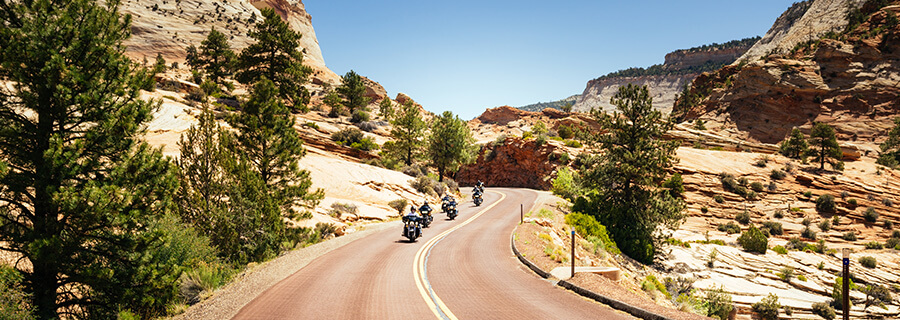
Renting a motorcycle is becoming easier as we and other motorcycle rental companies offer a variety of makes and model at numerous riding destinations. Rental gives you the freedom to keep a pretty open daily riding schedule and riding your own bike is the cheapest option.
You can absolutely ship your bike across the ocean if you live overseas, but it’s not going to pencil out financially in most cases.
Creating your own custom route can take a lot of time and is also a fun experience. You get to learn about new places, get insights from other riders, and pick the pace of travel that works for you. At EagleRider, we have a team of tour architects that can assist with route planning for your rental or custom tour.
3. Best time to ride – early summer, early fall
We get asked every day about the best time to ride a certain route, such as ROUTE 66 and our WILD WEST tours. Your trip can be anywhere in the world and most likely you will face a variety of weather and riding conditions. But for riding in America, there are definitely several windows of perfect weather: early summer and early fall.
In winter you can enjoy Florida and the Southwest, or even do a tour down to Cabo San Lucas in Mexico . Our guide to winter riding offers all the best routes and trip suggestions. Summer offers a must consistent level of temperatures and in the desert areas, you’re very likely to face extreme heat. Not everyone is ready for that, so some riders opt-in to ride in months that are a bit cooler.

There is no single answer to this, especially if your trip is 3-6 months long across multiple continents. But for most 2-week trips, early summer and early fall offer a really nice mix of temperatures. If you want to save a buck, Shawn offers some great tips for this in his Q&A Q&A about navigating EagleRider products .
4. Motorcycle with ample storage that fits your riding experience and preference
How to pick a motorcycle is one of those questions that we can spend hours contemplating. It’s very difficult to recommend something because we all have different riding preferences and levels of experience. Some bikes are great for touring but can be too heavy especially with a passenger and full touring packs with clothes.
The best suggestion you can get is to look at motorcycles that fit your riding experience and have enough storage for the trip you are planning. We put together a detailed guide on choosing the right bike for your trips, which will be a great reference point for your upcoming adventures. On a guided tour our van carries all the luggage, but on a camping trip, you’ll need to carry everything in your saddlebags and attached to a sissy bar.
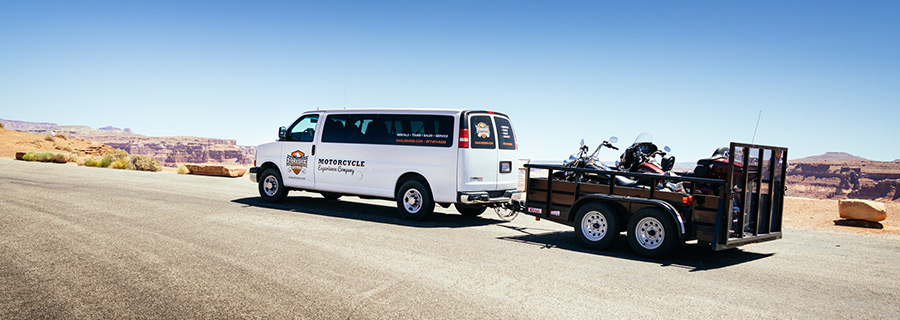
In general, most riders prefer bigger touring bikes for 7+ day trips, but you should only ride a bike that you are comfortable handling. For off-road riding, there is a completely different set of features you’ll be considering compared to perfectly maintained roads and highways of the USA.
You can always contact us and explain what trip you want to do and your preferences for a motorcycle and our team of seasoned riders will assist with recommending a few models that we think will work well for you.
5. Route 66 is not the only way to cross the country
There are thousands of ways you can cross America, from Route 66 to Pacific Coast Highway to Highway 50 - the Loneliest Road in America, and more. The best part for many trips is not reaching your destination but rather meeting the people along the way and getting lost in places with incredible scenery.

We offer 100+ pre-defined routes, all of which can be further adjusted based on your wishes. Some of our most popular routes besides the best selling Route 66 full tour , include:
- Blue Ridge Blues and BBQ - Motorcycle Tour (New Orleans to Washington DC)
- Coast 2 Coast Guided Motorcycle Tour (Los Angeles to Orlando)
- Pacific Coast Highway Self-guided Motorcycle Tour (Seattle to Los Angeles)
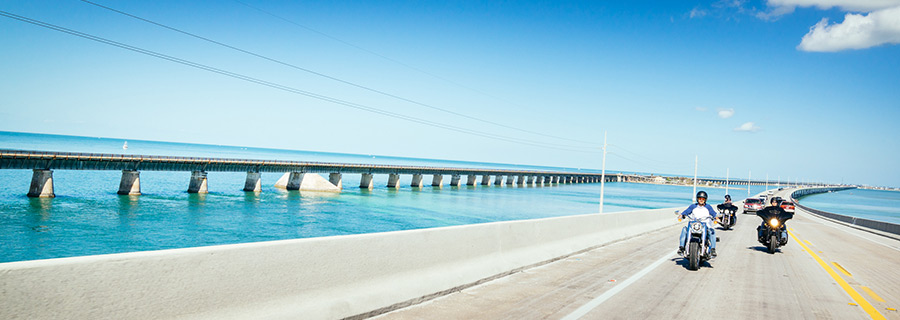
Many of our riders extend their trips to Sturgis and begin riding on either coast to then spend a week in South Dakota and after continue riding across the country. If the time allows, adding a few days at one of the iconic motorcycle rallies is a great way to spice up your trip and celebrate the life on two wheels with fellow riders.
6. Share your ride with others - take photos and videos along the way
Did you know that the most watched motorcycle videos on YouTube often are of the long cross country and cross-continent rides?
Following someone’s adventure through the lens of the camera or smartphone is better than not seeing it at all. Let your family and friends enjoy the road with you, share your ride on social media and your site if you have one.
There is a variety of apps and websites that allow for route sharing and you can also post images and videos along your favorite stops and moments on the road. The main thing is to share what you see with others. During or after the trip - your choice, but capturing moments on the road will make for a nice souvenir many years later.

Don't forget to tag #eaglerider when you share your photos and videos on social media. Every month we pick a random lucky winner and award $300 gift card towards future reservations on eaglerider.com.
CLOTHING/GEAR TIPS
7. pack small.
We can be very different in how much packing we want to do for a trip. Some of us carry suitcases with three sets of clothes for every day. Some of us pack the side case bags that fit inside Electra Glides that what’s all the clothing for 2-3 weeks.
Mostly everyone always recommends packing small. Everything you may want on the road can be purchased with cash or credit card. In many cases, too many things to carry become a burden. Even if you’re packing for a month-long camping trip, you need to pack down to the minimum essentials to have room for everything. See our packing checklist and guide for more info.
Generally, bring twice as much cash and half the clothes you think you’ll need. Riding cross-country will take you through dramatic shifts in elevation and temperature. Mountain passes can have freezing temps and snow, even in summer. If you come from an area where there are no significant changes in elevation, it’s hard to wrap your head around entire climate zones existing at certain elevations. It’s simple—be prepared for everything.
8. In desert areas, keep long sleeves on
It’s a common misconception that you can ride through a desert in just short sleeves. We always recommend keeping long sleeves on, for a few important reasons:
- You don’t want to have your body having direct contact with the sun
- If you do, you get dehydrated quickly and can compromise your ability to control and balance the motorcycle safely
- Common symptoms after that (aside from sunburn) can include nausea, dizziness, muscle weakness and cramping, and many others leading up to a heat stroke
- Protect your body from the sun, don’t open yourself up to harmful UV rays

It’s something we see very often, especially in our Southwestern locations. The riders drop off the bike with the happy sunburned faces tell us all about their adventures. Even though the effects of the extensive sun exposure seem to disappear fast enough, it’s the long-term effects that you should also consider.
9. Weatherproof bags and rain gear will save you in most unexpected situations
If you have a support vehicle following you (e.g on our guided tours), you can skip this one. But if not, chances are you’ll be carrying some kind of a bag on a sissy bar. The best way to protect your packed gear is to have weatherproof bags. Weather changes, sometimes within hours. When you get to your overnight stay, the worst thing is to have not only yourself soaking wet, but also all your fresh clothing for the trip as well. It may seem like an exaggeration right now, but one piece of advice we always have for riders is to pack a quality set of rain gear and think through the carry options ahead of time.
10. Wear Coolmax or other moisture wicking materials instead of cotton shirts
There are mixed opinions about whether cotton is a proper way to dress is in the extreme heat conditions. Mostly coming from hikers and adventure travel enthusiasts, there is a popular belief (with scientific reasoning) that cotton traps the heat close to your body while moisture-wicking materials don’t stop the heat from releasing helping you to keep the body temperatures at an optimum level.
Polyester holds on to only about 0.4% of moisture while cotton holds around 7%. That’s a big difference. Newer technologies, what’s commonly called base layers, force the moisture out of the garments through the special weaves of the fabric. Your body stays dry and maintains its temperature balance while your clothes protect from the elements and release the heat and sweat.
A variety of brands make motorcycle-specific base layers, you can shop for these options online ahead of your ride.

11. Layering is the best way to dress/pack
The secret to packing and surviving any weather is layering. Not only this is the easiest way to adjust in rapid temperature changes, but also to save space when packing. For most motorcycle trips, you really need a few sets of warmer sweatshirts and base layers. One jacket, especially with multiple air flow zippers and vents will be sufficient for most rides.
12. Don’t bring expensive glasses
Eye protection is essential for any motorcycle ride. Shatterproof glasses or a helmet with a built-in sun visor are the two best ways to stay protected and ride comfortably in all hours of the day. Expensive glasses will be a shame to lose or scratch. They’re also not the safest option as rider’s head/helmet is often the first area of impact in accidents.
13. Rolled up clothes take less space
We all probably have this one friend who’s always packing with compression cubes, individual pouches for shoes, and everything in very neatly rolled tubes. Most of us are not line this. But… it’s been proven over and over that rolled up clothing takes less space and has very few wrinkles when unpacked. From military duffle bags to modern hikers and motorcycle riders, everyone finds this way of packing to be very efficient. Give it a try.
14. Small camera or phone are better that a DSLR
Everyone is a photographer these days. The trap that most people fall into is buying big bulky camera (“best on the market”) and then struggling to take photos with it during moto adventures. In general, mirrorless cameras are much more compact and offer amazing image quality for half-the-size.
The best camera for motorcycle touring, just as it is for any other activity, is the one that you have quickly available. That can be your phone or a small camera on a sling hanging across your body as you ride your motorcycle through the mountain twisty roads or the vast deserts.

If you’re opting to shoot on your phone, make sure you have ample storage available in your phone. It will be very unfortunate to run out of space just as you approach the edge of Grand Canyon for the sunset after a full day of riding.
TO BUY/PACK/PLAN BEFORE THE TRIP
15. ride planner – tour guide, gps, printed map, mobile app.
The purest adventure possible is to take off with no plans and no definite direction in mind. Most people, however, can’t manage that degree of spontaneity. For everyone else, you’ll want to pick a destination or two and get an idea of the things you want to see and do.

Planning the route and having your notes handy as you ride each day is one of the best things you can do ahead and during the trip. Some riders prefer to carry printed maps, which have been the main go-to way of navigation for many years before digital devices started to take over.
When it comes to points of interest, historical sites, local attractions, gas, food, lodging, events and activities along the way and even road conditions, closures, and construction, research is your friend. Not very long ago, calls to your motor club and each state’s tourism bureaus were a must for any chance at practical planning. Published city and state guides and sometimes travel agencies could also be helpful, especially if you wanted to do a lot of sightseeing.

Mobile apps that allow you to plan and navigate the route, such as Rever or Harley-Davidson Ride Planner, are a great tool to have. Apps that let you import GPX files are another solution. Having rest stops, gas stations, overnight stays, and points of interest in your map files will save you a lot of time and mental energy, especially during the longer touring trips.
Having a personal tour guide , someone who knows the route and the locals, can take your trip to a whole another level. Our EagleRider guided tours, we have bi-lingual guides who have years of experience guiding our tour guests through all corners of the country. Often it is the guide who can make your trip absolutely unforgettable. We get this feedback from tour guests every season.

Whichever ride planning tool you pick, leave some room for spontaneous decisions. Buffer enough time to enjoy the local scenery, add stops, and deal with emergencies. Most of us ride motorcycles to break free from the daily routine and this can easily be the only time where we don’t have to be boxed in. Explore, plan, but don’t feel the pressure to stick to the route 100% of the way.
16. Find overnight stay with walking distance to good food and drinks
Meandering across the country, riding mostly blue highways and stopping at mom and pop motels/hotels and eateries will provide a more intimate look at America. Once you’re done riding for the day, a cold beer and a good steak will be on top of your mind. Find hotels with walking distance to local bars and restaurants. Your motorcycle will be safely parked for the night and you can relax and enjoy the evening.
17. Location sharing apps / I.C.E. / share the route with at least a few people
Safety on the road is essential. You want to make sure both you and your motorcycle are road ready. On top of that, your loved ones should have a way of locating you throughout your trip, even if just for safety reasons. For solo cross-country trips a location sharing app is an absolute must-have. Share the route with at least a few people.
Code your I.C.E. (In Case of Emergency) number into your phone book. Both Android and Apple have this option in the settings as well. Emergency staff can access this information quickly and communicate with your family about any situations that require their immediate assistance.
18. Have a kit with a few small essentials
Pack a small pouch with a few items that always come handy. Some of these take up much space but can be very needed during the ride, for you or for other riders in your group.
- Bungee cords – so you can securely strap additional items or bags to your motorcycle
- Duct tape – can have a variety of uses and there are travel size duck tapes that take very little space
- Kickstand puck – when parking on the uneven or hot surfaces, this little accessory can save you from finding your motorcycle laying on its side
- Multitool/knife – a well-built multitool that always travels with you is handy for most days on the road
- Flash light – handy for dusk hours and when you need to inspect your motorcycle
- USB power pack / charger – available in a variety of power capacities, USB juice packs or portable chargers are helpful if your motorcycle doesn’t have a power plug. Motorcycles that are equipped with a power outlet, a USB charger is all you’ll need for most rides
- First Aid kit – always carry a small first aid kit. On our guided tours, we always have these in the support van
For more information on packing, take a look at our packing checklist .
19. Communication systems and group riding signals
With so many options on the market for communication devices inside helmets, it’s extremely easy to stay connected with your passenger, a friend on another bike, or simply enjoy the music as you ride through the country. We recommend bringing your own helmets with mounted Bluetooth headsets for your trips if you wish to stay connected through your ride.
If you don’t have much experience riding in large groups of 15+ motorcycles, always do a quick refresh on hand signals for group riding. Your visibility on the road is one of the most fundamental aspects of safe riding.

20. Make sure your bike is road ready
If you’re planning to ride your own bike , always make sure the mechanical condition of your ride is optimal and all essential scheduled service items are taken care of. Consider how long your ride is and plan ahead.
Follow the usual safety inspections—tire tread and pressure, lights, signals, brakes, horn. For a cross-country ride of some 3,000 miles, give or take, it’s a good idea to start with fresh oil. Change the fluids and filters. If your bike is anywhere near due for a tune-up or valve adjustment, get it done before you need it done. There is plenty of challenges that may come up on the road; worrying about your bike’s performance should not be one of them.

If your tire tread looks a little iffy, or the tread wear looks uneven, err on the side of sanity and get new rubber. It hurts to plunk down $200-$300 or more per end for fresh rubber, but not as much if you get a flat in the middle of nowhere, or worse. The bike will handle better with new tires and you’ll feel more confident in your ride. Some shops have sales on tires and/or labor and, of course, there is plenty online or warehouse outlets, but check with your shop first; some won’t install customer supplied parts, including tires.
Join an auto club. If you don’t have motorcycle roadside assistance that provides towing and other services there are a few to choose from, including Harley-Davidson, Geico, AAA, and Allstate Motor Club. The peace of mind is well worth the annual fee. Some roadside assistance program, if given some notice, will plan a route based on your preferences, including roadside stops.

If you’re planning to travel on an EagleRider bike , our technicians make sure each bike is road ready. Scheduled maintenance and inspections before and after each ride is complete are essential for us to ensure you have a great time on the road. We offer several levels of insurance coverage and 24/7 roadside assistance. All of the extras you can add to the reservation before you complete the checkout process.
21. Buy a motorcycle seat cushion
For any trips that’s longer than 5-7 days, some riders find it very useful to buy a seat cushion. Putting 250-300 miles daily on any motorcycle is not the same as riding to a local coffee shop for a breakfast meetup with your friends. Sure, you need to be in good health and physical shape to prepare yourself for longer motorcycle tours and rides. A seat cushion can be a welcome addition if you’re not used to multi-day touring adventures.
22. Plan your music playlists ahead of time,bring earplugs if no music
Good tunes for the road will not only set the mood for your ride, but also provide the variety or entertainment for those longer stretches of the road that may not be as exciting and fun as mountain curves. Build several playlists and download them to your device so you don’t burn through your mobile data usage limits.
DURING THE RIDE:
23. daily check of the motorcycle to be road ready.
For most riders this goes without saying – having a well maintained and inspected motorcycle can prevent many situations that can be avoided by this simple 5-minute route process. Make sure you’re road ready and your motorcycle is too.

24. Drink enough water
Whether it’s a day ride or a cross-country motorcycle trip, how you feel physically and mentally impacts every aspect of the trip. The freedom of being out on the road on a motorcycle is beyond compare. The incredible scenery is all around you, not just in that little rectangle of your windshield. You smell the smells and feel the warmth or the coolness of the countryside you’re passing through. It’s very easy to get distracted and forget to drink enough fluids to stay hydrated.
Dehydration affects reaction time, balance, and can lead to heat strokes and other serious injuries. Drinking lots of coffee during the day and alcohol at night can affect how well you’re hydrated. Stop often, carry water, wear moisture-absorbing clothing (see tip #10), and keep yourself in check.
25. Keep your passenger happy, check in with other riders
You’ve come this far! Your partner agreed to do this trip you’ve been planning for months. You pack your bags, arrive to pick up your motorcycle, and the ride is about to start. You may think that the hard part is done but keeping your passenger happy throughout the duration of the ride is a sure way to guarantee a good time on the road.
You’re the one who will be having fun riding the motorcycle while your passenger won’t have much to do. Most riders choose the bikes with the primary concern being the comfort of the passenger. See our guide to choosing the right motorcycle for your trip for more details.

Thorough pre-trip discussions of where you want to go, how fast you want to get there and how much time you want to spend on stops are important if you want a pleasant ride where everyone feels included.
26. Keep your days under 300 miles, avoid riding in the dark
We’re often get asked how far should a motorcyclist ride in one day. The answer varies greatly by the rider’s skill, experience, and endurance, road conditions if they are appropriately dressed, and of course, their bike. Machines with full fairings or windshields can make more miles because the rider is not getting as fatigued fighting the wind.
Then there is that ever-present intangible: desire. How many miles do you want to ride per day? There is no right answer. In fact, the whole spirit of motorcycling is to get away from rules.
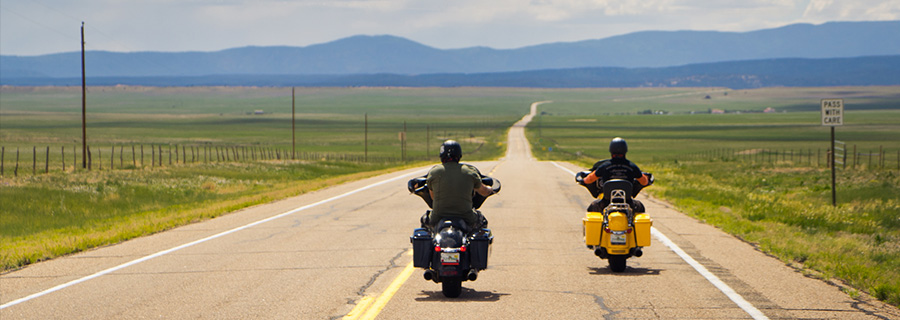
Know your limits and don’t be a tough guy. If you haven’t done any long-haul rides before, don’t plan on pushing 500 or more miles per day. Give yourself adequate time to complete your trip without attempting dangerous days of extreme miles. It’s no fun and can be costly.
Every rider finds his or her level—whether that’s 150 miles per day or 400—after which point riding becomes work. Like fuel, leave a little energy in reserve when planning your day’s ride. There may be times you’ll need to push out a few more miles to get to the next bed.

On our guided tours, we keep most days between 200 and 260 miles. With plenty of rest breaks, this allows everyone to get enough rest at the end of the day and start early the following morning.
Think about avoiding night riding, when less visibility and fatigue are more of a factor, and because deer have become the most dangerous animal in the world. Wildlife gets more active at dawn and you’d want to have no encounters with large animals on any of your motorcycle trips.
27. Take a 20-minute break for every 1.5 hours of riding, know your limit
Veteran distance riders suggest getting into a rhythm. For example, some stop for rest and refreshment every tank of gas, depending on mpg and fuel capacity. Some studies have shown you will actually get their faster (and safer) with regular break intervals. Eat light, stay hydrated, and it should go without saying don’t drink alcohol. We recommend stopping for a break every 60-90 minutes. Pace yourself on longer multi-day rides. How you feel today will affect how you ride tomorrow. A fatigued rider is not as alert and doesn’t react as fast as a rested rider.
28. Take a day off for every 7 days of riding
On EagleRider’s 16-day guided tours, we always buffer a day for rest. On Route 66 tours, it’s in Santa Fe where you can spend the day bargaining with local jewelry shops, horseback riding, or enjoying the day at the hotel spa. On Wild West tours, we take a break in Las Vegas, which leaves plenty of room for ideas on local things to do, from Cirque du Soleil to Bellagio Fountains, Freemont Street experience, and much more.
Set yourself up for success by buffering a longer rest stop or a day off. Of course, all of us love spending time on the bike, but local attractions can be just as fun to explore.

29. Keep your eye on how much fuel you have left, find a mobile app for this
It’s a big country, with occasional long, empty gaps between anything resembling a town or the sweet oases of gasoline and coffee we have grown to take for granted. Don’t run it dry, obviously, but start looking for gas stations some 20 or 25 miles before you’re running on fumes.
No one wants to see the dreaded signpost up ahead that reads, “No Services Next 100 Miles.” You need to be prepared for stretches like this, which may involve packing non-perishable foods, water, and bungeeing a full gas can to your bike. Better to have it and not need it, then need it and not have it.
Find an app that can track your mileage on each full gas tank and can alert you ahead of time if you’re running low with no gas stations ahead.
30. Don’t lose your keys, always lock your bike
We saved the best for last! The two of the most unpleasant scenarios on the road are lost keys and lost motorcycle. Nobody wants to be in either situation and both are preventable if you follow a few simple guidelines:
- Keep your bike keys/fob on a lanyard, either hanging on your chest or attached to your pocket
- Have a quality disk lock (we provide one with all our bikes)
- Make sure to lock your bike with both steering/fork and disk locks
- Consider adding an alarm system to your bike
- Build good habits by placing bike keys in the same spot each time you ride or stop for overnight stays
Harley-Davidson touring models have key fobs that you don’t need to insert into the ignition. If it’s your first time on a Harley, keep an eye on the fob. There is a fee for lost keys for our motorcycles.
WHAT’S NEXT?
Now that you have all this information in front of you, picking the riding destination or route is the next step. Here are a few helpful resources to get you started:
Map of EagleRider locations – With over 200 rental locations, it’s easier than ever to conveniently ride out of major cities and nearest hubs to amazing motorcycle roads. Get familiar with our locations and that’ll get your mind thinking about places you’ve always wanted to ride to.
EagleRider routes and tour itineraries – we have 100+ itineraries on our website for both guided and self-drive tours. Browse them to find the destinations you want to visit. We share daily stops for each tour. This can be a great starting point from which you can build on your custom trip if you wish. Or simply book a tour and follow the exact route we suggest.
Rally schedule – planning longer trips around rallies (Sturgis, Daytona Bike Week, Laconia, etc.) is a great way extend your rides and add interesting routes. Many riders love riding into Sturgis from all corners of the country. If you have the time, find a rental location where you want to start and build your route to the rally. We offer one-way rentals, so you can easily drop off the bikes in another city and simply fly home.
Local rides for top travel destinations (Los Angeles, Las Vegas, San Francisco, etc.) - if all you have is a day or two, we made a list of local rides near our locations.

We hope you found this guide helpful. A lot was covered here and surely you may need to come back and reference some tips and suggestions as you continue to plan your trips.

- 309-550-7543

Judy Gordon
- October 25, 2021
- Motorcycle Rides
- Motorcycle Trip , Motorcycle Trip Planner , Planning
Planning a Motorcycle Trip | ULTIMATE Guide to 🏍️ Motorcycle Road Trip Planning [Where to Stay, Packing, Shipping vs Riding & More]
Last Updated on: 14th April 2023, 03:37 pm
Ready to plan a motorcycle trip to a far-off destination with beautiful scenery? Are you up for the challenge of a cross country motorcycle trip, planning to attend a big rally, or do you want to cross a dream motorcycle route off your bucket list?
Planning a motorcycle trip comes with unique challenges. Space is limited, you’ll be exposed to the elements, and the vibration, road noise, balance, and tight position can be exhausting without the right preparation. How do you plan a long-distance motorcycle trip? Here’s what you need to know about how to plan a motorcycle trip with a helpful checklist, tips, and mistakes to avoid.
Table of Contents
Planning a Motorcycle Road Trip Route
Ready to get started? Here’s what to do when planning a motorcycle trip for an exciting and successful adventure, step by step.

#1. Decide How Much Time You Have & Set a Daily Mileage
Before choosing a destination, consider how much time you have for your ride and a reasonable number of miles you will ride each day. You can multiply the number of miles you’ll ride per day by the number of travel days to give you a general range you can travel to choose a destination, but don’t forget to consider whether you’ll want to take a day off from riding at your destination – or a stop along the way!
Keep your daily mileage reasonable. 250-300 miles per day is reasonable for most riders, assuming good road conditions and fairly straight roads. However, in scenic areas, you may want a slower day with more stops. If you have more experience, you may have days where you can manage 320 to 400 miles but that will probably only leave you time for breaks without stops to take in the scenery.
If you’re new to long-distance rides, you may want to assume just 120 to 200 miles per day.
It’s also smart to consider the season and climate to decide how long you’ll want to be on the road and the types of roads. Narrow country roads and winding mountain highways will take longer (and wear you out faster) than flat, open stretches of highway.
Remember: the goal is to enjoy the trip itself, not feel like you’re rushing or leave yourself exhausted and sore. When planning a cross country motorcycle trip, or any multi-day haul, mix the long riding days with easier low mileage or rest days . This will make the trip more enjoyable and comfortable.
As a general guideline, aim to check into accommodations or stop to camp between 6 and 7 pm, or earlier if it’s winter. You’ll want to budget about an hour for each meal and 15-minute breaks for every hour of riding.
#2. Choose a Destination
Once you know how your range, you can settle on a destination. Maybe you already have a dream trip in mind. If not, here are some resources to give you inspiration.
- Best Motorcycle Rides in Florida
- Cross-Country Motorcycle Trips
- Best Colorado Motorcycle Rides
- Recreation.gov is a GREAT resource for choosing beautiful destinations, routes, and activities. Explore thousands of destinations whether you’re looking for camping, national parks, mountain passes, fall colors, historic sites, and more. You can also find places to rent camping and hiking gear at your destination.
- Turn to Facebook motorcycle groups to ask for recommendations in a state, region, or within your range.
- Roadtrippers is a good resource for finding not only destinations but stops along your route.
Not up for a roundtrip ride?
Do you have a dream destination or route that’s a bit too far for you to ride roundtrip? Motorcycle vacation shipping is a great option! Shipping a motorcycle for a ride lets you enjoy routes around your destination or a one-way cross country motorcycle trip.
#2. Map Out Your Route
With your destination in mind, you’re ready for the best part of motorcycle road trip planning: deciding the route you will take! There are many motorcycle trip planner apps and websites you can use. Here are some of the best.
- Rever is arguably the most popular motorcycle road trip planner with tons of community features. It has robust features for motorcycle trip planning and tracking.
- Harley Davidson’s Ride Planner . Create routes easily, explore points of interest along the way, and get quick results when searching an area for attractions, food, and lodging.
- Calimoto is a motorcycle trip planning app designed for motorcyclists. This motorcycle trip planner offers trip planning, tracking mode, navigation, and recommendations. Choose routes that are the fastest, shortest, or twistiest!
- Eat Sleep Ride is a community-based riding app that’s great at keeping track of other riders, planning a group ride, and recording your routes. The paid version includes Crashlight to alert contacts if it detects an accident.

Remember to keep your plans realistic. Don’t create a hard itinerary. Instead, give yourself many options for stops and things to do and prioritize the things you want to see the most.
#3. Plan Stops
With your route mostly planned, it’s important to plan out stops. Mark a few places to stop along the way with good campsites or hotels that are reasonably priced for the area. This is a helpful step to take to avoid trying to find a place last-minute – and possibly overpaying. Ideally, you want to have a general idea of where you will stay each night.
Mark where you can stop for gas if you’re riding through rural areas. Depending on your bike, you may be able to travel anywhere from 140 to 350 miles on a tank. In many areas in the Northwest, West, and Great Plains, however, you may drive more than 100 miles between gas stations.
Plan to stop every 90 minutes to 2 hours to stretch, hydrate, and top off the tank. Be aware when you’re going to be riding through a more barren or rural area with few gas stations and amenities.
Traveling west or east?
Plan stops for breakfast or dinner close to sunset and sunrise. Avoid riding into the rising or setting sun when it’s low on the horizon and blinding.
#4. Make a Backup & Emergency Plan
- Plan an alternate route to take if needed.
- Download maps ahead of time in case you run into issues in an area without cell coverage.
- Check in with someone every day if you are riding alone. Let them know your destination and route for the day.
- If you’re going into a remote area or riding alone, bring an emergency beacon.
#5. Take Care of Packing & Preparation
How to stay comfortable on a long motorcycle ride.
- Choose a comfortable full face helmet. You’ll definitely be glad you opted for a full helmet instead of a half helmet on a long ride. Your head and face will be completely protected against road debris, insects, rain, sun, and wind.
- Earplugs are a must. The sound of your exhaust, the road beneath you, and the wind will go from exhilarating to exhausting after hundreds of miles and can damage your hearing.
- Give yourself ways to adjust your feet and position. A long ride in the same position is numbing and painful. An engine guard with highway pegs, floorboards, forward pegs, or a mustache bar are two options to stretch out your legs and change position.
- Update your motorcycle seat. Your seat may not be ideal for a long motorcycle trip. A gel seat pad or a pad with air cushions are affordable solutions, or you can invest in a completely new seat for additional support and comfort.
- A tank bag is a great investment to keep small essentials like your phone, water bottle, and sunglasses handy.
- Adding a power port can be a lifesaver to keep your GPS and phone charged.
- Make sure your windshield is high enough to deflect wind but not too tall to block your vision when it’s raining.
- Heated gloves or heated grips make a world of difference when it’s chilly outside.

Motorcycle Trip Planning for Breakdowns, Flats & Blown Tires | Tips to Prevent and Deal with Breakdowns on the Road
Unpredictability is one of the joys of a motorcycle road trip – unless that unpredictability comes in the form of a costly breakdown in the middle of nowhere!
As we discussed above, it’s important to have a backup plan and prepare for an emergency by notifying loved ones of your plans and checking in every day. However, there are also steps you’ll want to take to reduce the risk of a breakdown and have a way to deal with it.
- Make sure the tires are up for the mileage you’re going to put on them with plenty of tread and good pressure. Replace any worn parts now, check the fluid levels, and change your oil.
- This can help you spot damage in time to perform an external repair before having a proper repair done once you reach a shop.
- A tool roll won’t take up much space and you’ll have what you need on hand to potentially fix minor issues.
- If possible, trade spare keys with one of your traveling companions. You can also hide your spare somewhere on the bike that isn’t in your saddlebags. Make sure you check what size sockets, spanners, or hex keys you’ll need. Your kit should include an adjustable wrench, vice grips, and a quality multi-tool.
- For tubed tires, have tire spoons or tire irons in your kit to raise your bike.
- While Roadside Assistance doesn’t cover everything, it’s an affordable insurance policy in case of a flat or breakdown. You can opt for Roadside Assistance from HOG or AMA or choose coverage that isn’t motorcycle-specific. Be sure to note the policy exclusions and what’s covered, which is usually only breakdowns, flat tires, and dead batteries, not towing after a crash. AAA covers towing for up to 100 miles (for Plus members) while AMA only covers the first 35 miles. HOG only covers tows up to 35 miles to the nearest Harley-Davidson dealership.
What do you do if your motorcycle breaks down?
- Pull off the road safely. Get as far away from the road as possible, and do not risk your safety trying to protect your bike. If you can, get off the shoulder.
- Remain aware of traffic, even if you’re on a back road. Remember: the shoulder is dangerous because drivers sometimes swerve toward a stopped vehicle on the shoulder or get distracted and leave their lane. You can also be hit by debris.
- Once safe, assess the situation. Determine if you can identify and fix the problem with your tool kit and flat repair kit, or if you need to call for assistance.
- Call for help if needed. Turn to your Roadside Assistance or contact a local garage or shop for towing or roadside help.
- If you’re in an isolated area, be prepared to fend for yourself for some time before you can get help. If you are in an area that may be dangerous (either due to wildlife or weather conditions) or you are injured, a personal locator beacon can be used to summon rescuers.

Where to Stay on a Motorcycle Road Trip
You have many options when planning where you will spend the night. To decide where to sleep when riding a motorcycle cross country, consider how much you want to pack and how much comfort you’re looking for.
- Hotels and motels. Tried and true, but the more expensive option when planning a motorcycle trip.
- Hostels, bed and breakfasts, or guesthouses. Like the idea of making friends and meeting locals on your trip? One of these options may be a good choice, and they’re usually cheaper than hotels.
- Camping at an RV park or private campsite. Private campgrounds are a good option if you’re looking for amenities. Space may need to be booked in advance during the peak season in a popular destination. One of the perks is you can find campsites with amenities like laundry facilities and even camping cabins.
- Camping in a state or national park. The perfect way to stay in touch with nature! Park camping is perfectly suited to an adventure motorcycle trip, or a languid trip across the country seeing the sights and hiking.
It’s a good idea to know the general area you’re going to stop to sleep each night and the options for accommodations.
Avoid booking in advance
Don’t book hotels more than one day in advance, or at all if possible. Keeping your plans flexible is even more crucial when planning a motorcycle trip versus a road trip in a car because you may need to change plans due to weather, road fatigue, or even a flat tire.
Make sure you choose a bike-friendly hotel, motel, or bed and breakfast. Call ahead to ask if they have a gated or safe spot to park, or check reviews for recommendations from other motorcyclists.
No matter which option you choose, it’s a good idea to take steps to protect your motorcycle while traveling . Use a packable motorcycle cover to protect your bike from the elements overnight and discourage thieves – or anyone who just wants to sit on your bike. You can also add an affordable alarm and lock for additional security. Make sure you take your bags inside with you!
How to Prepare for a Motorcycle Road Trip | Tips for Getting Ready for a Long Ride
Even if you’re an experienced rider, your first long motorcycle ride is very different than short trips and commuting. You may want to start preparing for a motorcycle road trip months in advance.
Make sure your bike is in peak condition with a tune-up
Your bike should receive a thorough inspection and tune-up before heading out on a long-distance motorcycle ride. The tires should get special attention because it’s better to err on the side of caution and change tires sooner than usual if the tread is getting low rather than risking a dangerous blowout.
Consider replacing the rear shocks if your rear suspension is getting soft and replace your belt if it’s getting too close to the recommended mileage.
Adjust your bike’s suspension as needed
The factory setting is for the weight of an average-sized rider. Adjusting your suspension to account for the extra weight of your luggage (and a passenger if you’ll have one) will give you better handling and a smoother ride.
Plan ahead for tire replacement or maintenance on the road
If you need to, set up maintenance and tire replacement with a shop beforehand for a very long ride. If you’re going to need maintenance or new tires sometime during the ride, schedule it in advance and make sure the shop will have the tires you want in stock when you arrive.
Work on your endurance if you’re not used to long rides
If you have never attempted a long ride before, you’ll be surprised just how exhausting it is! You’ll need a lot of stamina, core strength, and flexibility so consider an exercise routine. Take several shorter rides with all the gear you’re going to bring and work your way up to longer rides.
Test your gear in advance of your trip
Make sure you test all your gear before your trip! This is particularly important if you have new items you aren’t quite sure how to use.
Motorcycle Trip Checklist | Packing for a Motorcycle Trip
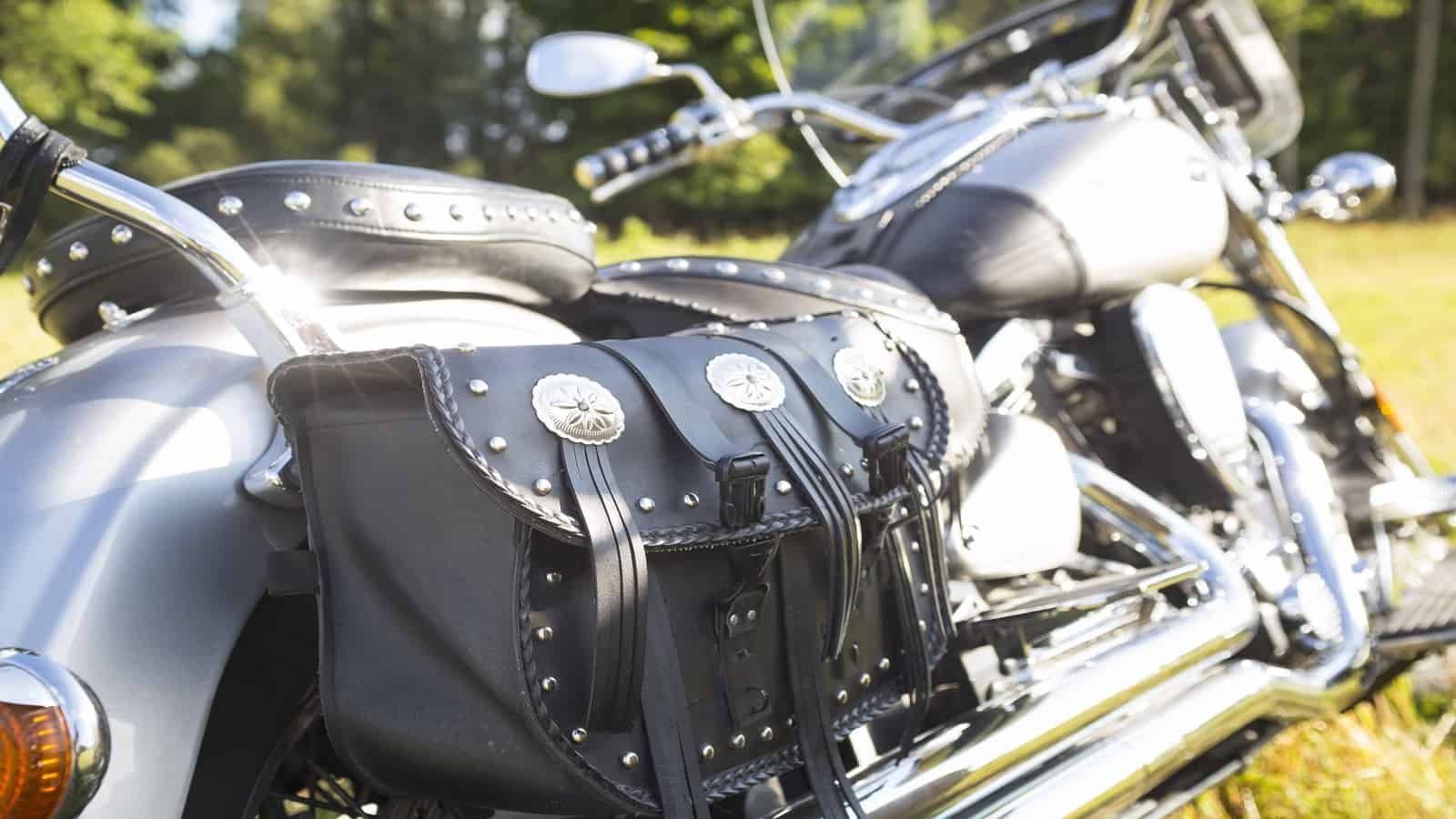
- First aid kit. This should include an emergency blanket, sterile gauze, burn gel, antibiotic ointment, band-aids in several sizes and butterfly bandages, hand sanitizer, tweezers, trauma shears, and Dermabond. You’ll also want to have anti-allergy and anti-inflammatory pain medication to help with swelling and aches during your ride. Pack sunscreen lotion and lip balm too.
- Motorcycle tool roll.
- Tire repair kit.
- Cleaning supplies. Pack a travel-sized spray solution and microfiber cloth to clean your windscreen and visor.
- Waterproof gear.
- Clothing for all weather: hot, cold, and/or wet. Dress in cool clothing when the weather is hot, but be ready to add layers or change protective gear.
- Earplugs. The wind and road noise can be annoying and damaging to your hearing.
- Packable motorcycle cover. It’ll keep your bike dry and clean while deterring thieves.
- Standalone GPS. Download maps in advance to plan for remote areas without cell service.
- Hydration pack.
- Personal locator beacon and/or satellite communication device if traveling alone in a remote area.
- Toiletries.
If you’re planning to camp, Rever , the popular motorcycle road trip planner app, offers a good guide to what you should pack. KOA also offers a great guide to motorcycle camping .
Should You Ride the Whole Way or Ship Your Motorcycle?
A final consideration is whether or not you want to ride roundtrip to your destination. Did you know you can ship your motorcycle closer to your destination for a one-way ride? Or even use roundtrip motorcycle shipping to enjoy short or long rides in a different region without the difficulty of getting there and back.
There are many reasons why motorcycle vacation shipping may be a good choice:
- You’re planning an adventure motorcycle trip and your bike isn’t suited for a long road trip.
- You don’t have enough time to complete your route roundtrip.
- You want to plan a motorcycle trip one-way to a rally or event.
- You’re not up for a cross-country motorcycle trip but want to explore the country.
- You have motorcycle rides planned throughout an area and don’t want to spend days getting there and back.
Motorcycle Trip Planning: Shipping Your Bike
When planning a motorcycle trip that involves shipping your bike, there are a few things to keep in mind.
Remember that the last-minute delivery is the most unpredictable and challenging. If you decide to have your motorcycle shipped directly to your destination, you will have less control over when it gets there. There will also be a fairly large delivery window during which you will need to be available to receive your bike.
The best way to ship a motorcycle is using the motorcycle transport company’s warehouse or distribution center closest to your destination. Along with cost savings, you’ll be better able to predict when your bike will arrive and you can pick it up at your convenience then hit the open road!
You can learn more about motorcycle transport for a road trip or rally with our complete guide covering how to ship a motorcycle . We also offer an in-depth guide to motorcycle shipping costs with real averages based on what our customers pay.
Motorcycle Trip Planning FAQ
How do i use google maps for motorcycles.
Tap the “Search here” bar in Google Maps (browser or app), enter a destination, and begin navigation. You will see route options by car, motorcycle, walking, public transportation, and bicycle.
How long is too long on a motorcycle ride?
It depends on your experience. 150 miles is a comfortable amount for a relaxed day exploring the scenery and attractions. 300-400 miles in a day may only leave time for breaks, but most experienced riders can handle this amount. Consider how many days of long riding you can endure and how much you want to do to decide how long is too long.
How far should you ride a motorcycle in a day?
The answer depends on your experience, weather conditions, and the type of road and terrain. Aim for 250 to 300 miles in good conditions and on mostly straight roads. Reduce the distance if you want time to explore. You can manage 400-500 miles if you only stop for breaks and meals.
What is the best motorcycle for road trips?
The best motorcycle for long trips is a touring bike or cruiser. Touring bikes are designed specifically for long road trips which means they’re much more comfortable with protection from the elements. Cruisers have better performance and they’re easy to customize, but they have less comfort and storage.
Ready to get started planning a motorcycle road trip of your dreams? If you need reliable motorcycle transport to or from your destination, count on Federal Motorcycle Transport. We have convenient warehouse locations throughout the country and more than 30 years of experience with 70% of our business coming from referrals and repeat customers. Call us today or request a free quick quote online to get started!
Search by Category
Search For more helpful Resources
Check Out Our Related posts


New Jersey Motorcycle Rides 🛣️ – 8 Best Motorcycle Rides in NJ
Last Updated on: 2nd July 2024, 10:29 pm Whether you’ve finally got your New Jersey motorcycle license, bought a used motorcycle you’re ready to take

Indiana Motorcycle Shipping – Federal Motorcycle Transport – IN Motorcycle Transport
Last Updated on: 29th June 2024, 05:38 pm With over 200,000 registered motorcycles, Indiana is a great state to explore on the back of a

Motorcycle Helmet Laws by State 🛣 | The Helmet Law in Each State
Last Updated on: 28th June 2024, 12:16 pm Wear a helmet before you ride! The National Highway Traffic Safety Administration has found that wearing motorcycle

Connecticut Motorcycle Shipping | Federal Motorcycle Transport | CT Motorcycle Transport
Last Updated on: 24th May 2024, 09:03 pm From winding country roads past farms and rolling hills to thrilling rides through the Appalachian Mountains and
Our Clients' Feedback
Our reviews, federal motorcycle transport.
4.91 stars based on 313 reviews

Member Discounts

We are an agent for

Our Locations
East Peoria Federal Motorcycle Transport – East Peoria
200 National St East Peoria, IL 61611
Lindenhurst Federal Motorcycle Transport – Lindenhurst
3093 Falling Waters Blvd Lindenhurst, IL 60046
Colorado Motorcycle Shipping
Arizona Motorcycle Shipping
Connecticut Motorcycle Shipping
Illinois Motorcycle Shipping
Florida Motorcycle Shipping
Monday thru Friday 8:0am to 5:00pm CST Email: [email protected] Phone: 309-550-7543
© 2024 Federal Motorcycle Transport | Privacy Policy | Shipping Terms and Conditions

- Latest Tips
- Australia & So. Pacific
- Latin America
- Middle East
- North America
- Scandinavia & Russia
- Adventure Vacations
- Family Vacations
- Food & Wine
- Golf & Spa
- Money Saving Travel
- Romantic Vacations
- Traveling With Pets
- Unique Vacations
- Wellness Vacations
- Write for us
Tips For Preparing For A Long Motorcycle Road Trip
Tips for preparing for a long motorcycle road trip.
Long motorcycle trips are a pleasure, but beware, before starting your motorcycle trip it is necessary to take into account some tips that will help you plan the itinerary without complications or undue risks.
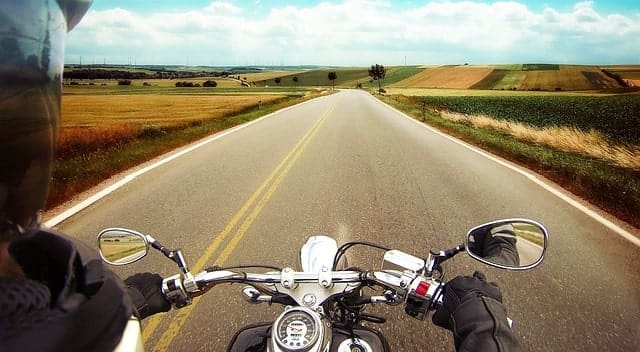
Summer and vacation days that many motorists enjoy, are a perfect opportunity to take your motorcycle, plan a trip and get lost for several days while enjoying the landscapes on the back of one of our best travel companions, motorcycles. Those who are going to make this type of getaway should know a series of vital tips before getting on the motorcycle to travel thousands of kilometers on a long motorcycle trip.
Equip Yourself Well
It is surprising how many accessories we are able to install on our motorcycles and how little we sometimes take care of our own safety. When we ride a motorcycle, and whenever we can afford it, we must choose to wear the best possible equipment: helmet, gloves, boots, jacket and pants. Cheap is expensive, it is said, and in the case of motorcycles “expensive” can be very expensive to your safety. We must avoid falling into those dangerous topics of “it is too hot to put on my motorcycle jacket and gloves” or that widely used expression of “total, I am going to the side here”. The protection of your body and the equipment that you must carry for any motorcycle trip is vital to avoid any unnecessary fright. Use safe cruiser motorcycle helmets and other equipment.
First, Plan the Destination of your Trip.
If you have not traveled on any long-distance motorcycle route, the logical thing is to make your first long trip within your country and relatively close to your home base. This will allow you to communicate in a language that you know perfectly, to know how our driving habits work and to be better connected with your family or friends at home so that you have some mishap with your motorcycle
Once you decide on the itinerary and routing of your long trip, it is important that you follow these tips that we detail below:
Before Going on the Road
Long motorcycle trips require careful preparation. A good check-up in the workshop is essential to avoid unforeseen breakdowns. Get your motorcycle ready in time so that during the trip you don’t have any mishaps that spoil that much-needed getaway. No biker likes to call the tow truck and a pre-trip checkup should help you avoid this mishap.
It is important to organize your luggage in advance, thinking in detail about everything you may need. We recommend that your bags be light and well secured to avoid losing them or causing accidents. Do not forget to bring personal and motorcycle documents, in addition to hotel tickets, credit cards, etc. In addition, in Formula Moto we have already given you some advice on how to equip your motorcycle for a medium or long trip.
Plan the entire trip as carefully as possible: routes, distances to travel each day, road conditions and tolls. Ideally, stop at least five minutes every 150 or 200 kilometers traveled. When it comes to fuel, remember to indicate on the map the service stations through which you will pass. Try to always maintain a minimum level of safety and always carry enough gasoline. Use useful apps like Gas Buddy and iExit to plan your routes and stops.
The cleaning of your bike is key before starting any journey. Wash the vehicle well and the elements that are involved in the visibility of the driver, such as the helmet visor. Make sure you know safety standards. There are various organizations, such as the Snell Foundation, that assign safety ratings to helmets. Choose a helmet those scores highly.
There is a great deal of debate about the benefits of full-face helmets versus cruiser open face helmets . While the full face does offer more protection from the environment, a quality open face helmet that meets the above criteria will offer excellent protection as well.
During Long Motorcycle Trips
Once you have embarked on your trip, mix up the landscapes and you will have a fascinating view of the road. Maintain permanent communication with friends and family, who should know your route to easily locate you if necessary. You might consider using a private tracking device so they can see just where you are on the road.
Always respect the traffic signals and travel at the appropriate speed on the road you are traveling on. If you are tired, stop to stretch your legs, eat and regain strength.
Eye to the weather: A biker, apart from motorcycle enthusiasts, must also be a “meteorologist.” Trying to anticipate the changes of weather and take into account the weather will mark the step in the journey of our trip. Therefore, it is important that you know how to calculate the thermal sensation of your motorcycle trip.
Rest well. We travel to enjoy, not suffer and endure. If you have to make a service stop, you are thirsty, you feel sleepy, your fingers are seized by the cold or your back hurts, stop. Do not think that “there is little left for the hotel and I better hold on”. We are not competing. No one is going to penalize us for stopping the account more times. A five-minute stop at a viewpoint, a cup of hot coffee or flipping through a magazine at the first service station, can revive you and make your journey more enjoyable.
Share This Story, Choose Your Platform!
Related posts.
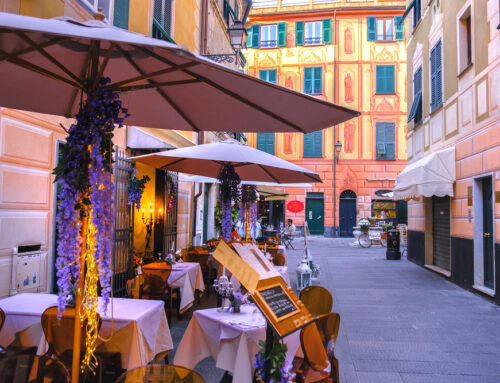
A Culinary Adventure in Rome: What To Know Before You Go

Fall Foliage Splendor at Top Public Golf Courses in USA
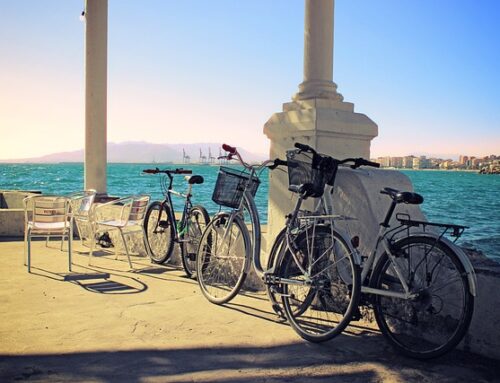
Explore The Best of Malaga in 24 Hours: A Step-by-Step Guide
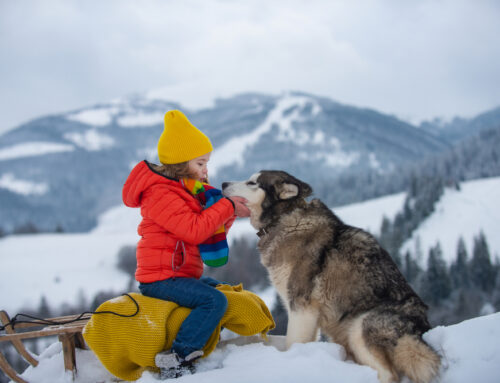
Top Family-Friendly Resorts in Alaska for an Unforgettable Family Vacation
Our latest travel tips, tricks and hacks are here to help you navigate the world. Whether you’re looking for a romantic vacation, traveling with kids, a solo adventurer, or looking for unique travel experiences, great suggestions are just a quick search away!
Contact us by email at [email protected]
© Copyright 2008 - 2024 | All Rights Reserved | Website designed by Beverley Designs | Privacy Policy | Terms & Conditions
Wicked Good Travel Tips is committed to ensuring digital accessibility for people with disabilities. We are continually improving the user experience for everyone, and applying the relevant accessibility standards. We welcome your feedback on the accessibility of the website. Please let us know if you encounter accessibility barriers here by emailing us at [email protected] . We will try to respond to feedback within 5 business days.
Read our most awesome article " 5 Tips for Motorcycle Road Trips "
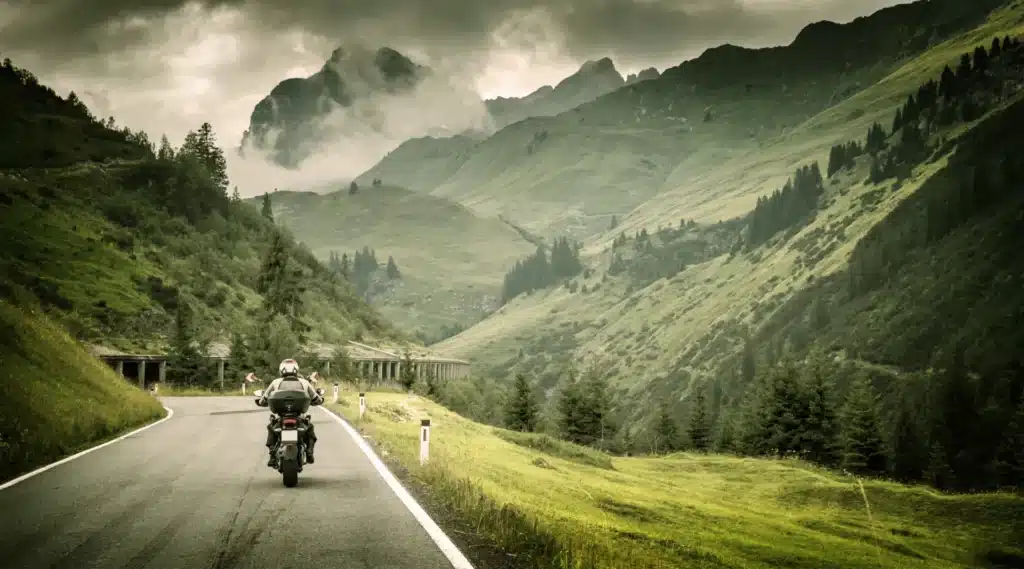
Your Guide for Motorcycle Road Trips in USA
Exploring the vast and diverse terrain of the United States on a motorcycle road trip is an exhilarating experience that every rider should have. With endless highways and byways crisscrossing the country, there’s no shortage of stunning scenery, unique cultures, and hidden gems to discover. However, planning a motorcycle road trip can be daunting, especially if you’re new to the adventure. To help you plan the ultimate motorcycle road trip in the USA, we’ve created a comprehensive guide that covers everything from route planning to packing essentials.
In this guide, we’ve compiled a list of essential points to consider before setting out on a motorcycle road trip in the USA, allowing you to focus on the thrill of the ride and experience the ultimate freedom of the open road.
Preparation
Before embarking on your motorcycle road trip, you should conduct a thorough check of your bike to ensure that it’s in good working condition. This includes checking the tires, brakes, chain, and engine.
Plan your route carefully, take into consideration the weather conditions and the distance you can comfortably ride in a day. It is also important to factor in rest stops, fuel stops, and accommodation options along the way.
Pack strategically. Motorcycles have limited space, so only bring the essentials. Pack light, breathable clothing, and rain gear for unpredictable weather conditions. Bring a map, a GPS device, and a phone charger for navigation. It is also important to bring snacks and water for energy and hydration during long rides. Here are 8 essential tips for planning a long motorcycle road trip .
Consider safety gear. Wearing a helmet, gloves, boots, and a protective jacket can greatly reduce the risk of injuries in case of an accident. Know the traffic rules and laws in the states you’ll be visiting because different states may have different traffic laws. And you must have a backup plan in case of emergencies, such as alternate routes or nearby repair shops.
Safety Gear
Riding a motorcycle can be risky and dangerous, especially if proper safety gear is not worn. The right safety gear can significantly reduce the risk of injury in the event of an accident, making it essential for all riders to have a safety gear guide for their motorcycle road trips in the USA.
The most critical safety gear for any motorcycle rider is a helmet. A high-quality helmet that meets safety standards can protect the rider’s head and brain in the event of an accident. When purchasing a helmet, riders should look for one that fits properly and has a hard outer shell, an impact-absorbing liner, and a secure chin strap. Riders should wear protective clothing, including jackets, pants, and gloves. These items can help to protect the rider’s skin from abrasion in the event of a crash.
Riders should wear proper footwear, such as boots or shoes with non-slip soles. Proper footwear can help to protect the rider’s feet and ankles in the event of an accident. It’s essential to choose footwear that is comfortable and offers good support, as well as being suitable for the conditions of the road. Riders should wear eye protection, such as goggles or a full-face helmet with a visor. Eye protection can prevent dust, debris, and insects from getting into the rider’s eyes, reducing the risk of distraction or injury.
Riders should consider adding reflective gear to their safety gear kit. Reflective gear can increase visibility, making it easier for other drivers to see the rider on the road. Read our Best Motorcycle Gear and Apparel article.
Fuel Efficiency
If you’re planning a motorcycle road trip in the USA, it’s important to consider fuel efficiency to save money and ensure a more sustainable journey. Make sure your motorcycle is well-maintained. Regular maintenance checks and tune-ups can help ensure that your motorcycle is running as efficiently as possible. This includes things like changing the oil and air filter, keeping your tires properly inflated, and checking your spark plugs.
Consider the type of motorcycle you’re riding. Some motorcycles are more fuel-efficient than others, so it’s important to choose one that is designed with fuel efficiency in mind. Planning your route is also important when it comes to fuel efficiency. Avoiding routes with a lot of hills or steep inclines can help you save on gas, as your motorcycle will use more fuel to climb hills.
When it comes to riding, there are a few things you can do to increase fuel efficiency. One of the most effective strategies is to maintain a steady speed and avoid sudden acceleration or braking, as this can cause your motorcycle to use more fuel. Consider your packing list. Bringing along heavy or unnecessary items can add extra weight to your motorcycle, which can decrease fuel efficiency.
Route Planning
Motorcycle road trips are a thrilling way to explore the scenic beauty of the United States. With its vast network of roads, highways, and byways, the country offers an abundance of routes for motorcycle enthusiasts to choose from. However, planning a motorcycle road trip requires careful consideration of various factors, such as road conditions, weather, fuel stations, and accommodations. In this guide, we will provide a comprehensive route planning guide for motorcycle road trips in the USA.
The first step in planning a motorcycle road trip is to choose the destination and the route. Once the route is chosen, it is essential to research the road conditions and weather forecasts. Motorcyclists should avoid routes with poor road conditions, such as unpaved roads or those prone to flooding. It is also important to plan for fuel stops and accommodations along the route. Motorcyclists should map out the location of gas stations and plan to refuel at regular intervals.
Accommodation
When planning a motorcycle road trip in the USA, finding the right accommodation can be a crucial part of the experience. With so many options available, it can be overwhelming to decide where to stay.
One of the most popular options for motorcycle road trips is camping. Many campsites offer motorcycle-friendly sites with easy access, so you can park your bike right next to your tent. Camping can be a budget-friendly option, but keep in mind that you’ll need to bring your own gear, such as a tent and sleeping bag. Another popular option for motorcyclists is staying in motels or hotels. Many hotels and motels have parking lots or garages where you can park your bike, and some even offer motorcycle-specific parking spaces.
When choosing accommodation for your motorcycle road trip, it’s important to consider factors such as location, price, and amenities. Look for accommodations that are located close to your planned route, so you can easily access them without having to travel too far out of your way. Consider your budget and look for amenities such as secure parking, laundry facilities, and free Wi-Fi to make your stay more comfortable.
Food and Water
When planning a long journey on a motorcycle, it’s important to keep in mind that you will need to make several stops to refuel, rest, and eat. This food and water guide for motorcycle road trips in the USA will help you plan your trip and ensure that you stay safe and nourished throughout your journey. It’s important to carry enough water with you. Dehydration is a common problem for motorcyclists, especially during the hot summer months. Make sure to carry enough water to last you throughout the day and refill your bottle whenever you get the chance. It’s also a good idea to bring electrolyte tablets or sports drinks to help replenish any fluids and salts lost through sweating.
When it comes to food, there are several options for motorcyclists on the road. One of the most convenient options is to pack your own food in a cooler or saddlebag. This allows you to control what you’re eating and can save you money on restaurant meals. Some good options include sandwiches, wraps, fruit, and granola bars.
Another important factor to consider is timing. It’s important to eat small meals and snacks throughout the day to keep your energy levels up, rather than waiting until you’re starving to stop and eat a large meal. This will help keep your blood sugar levels stable and prevent crashes. Remember to listen to your body, eat small meals and snacks regularly, and stay hydrated to ensure a safe and enjoyable trip.
Camera equipment and music
A motorcycle road trip in the USA can be a thrilling experience. To make the most of your motorcycle road trip, it is essential to have the right camera equipment and music guide.
Camera Equipment
When it comes to capturing stunning landscapes and memorable moments, a good camera can make all the difference. For a motorcycle road trip, it is important to have a camera that is compact, durable, and easy to carry. Example: Action Cameras, Mirrorless Cameras, and Point-and-Shoot Cameras etc.
Music Guide
Music can be a great way to enhance your road trip experience, whether you are cruising along scenic routes or taking a break at a roadside cafe. Here are some tips to create the perfect music guide for your motorcycle road trip like Choose a Theme, Create Playlists and Use Music Apps etc.
Motorcycle road trips are an adventure like no other, allowing you to experience the beauty and diversity of the United States from a unique perspective. With careful planning and preparation, you can make your next road trip an unforgettable experience. Remember to pack light, dress appropriately, and always prioritize safety.
Take the time to research your route, check road conditions, and plan for unexpected situations. By doing so, you can minimize the risk of mishaps and focus on the excitement and freedom of the open road. So, whether you’re a seasoned rider or a novice, a motorcycle road trip is an opportunity not to be missed. Get ready to embark on an adventure of a lifetime, create unforgettable memories, and experience the thrill of the ride on your next motorcycle road trip in the USA.
Use our motorcycle shipping calculator.
Related Posts
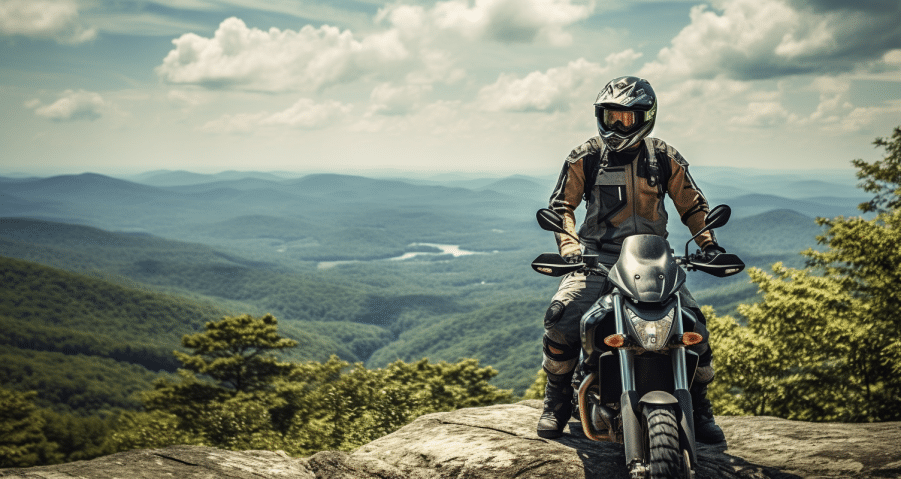
Motorcycle Trip in Virginia: Tracing Adrenaline-Pumping Routes
Located within the heart of the American Southeast, Virginia emerges as a haven for motorcycle enthusiasts seeking to rev up their adrenaline and immerse themselves…
Read More »
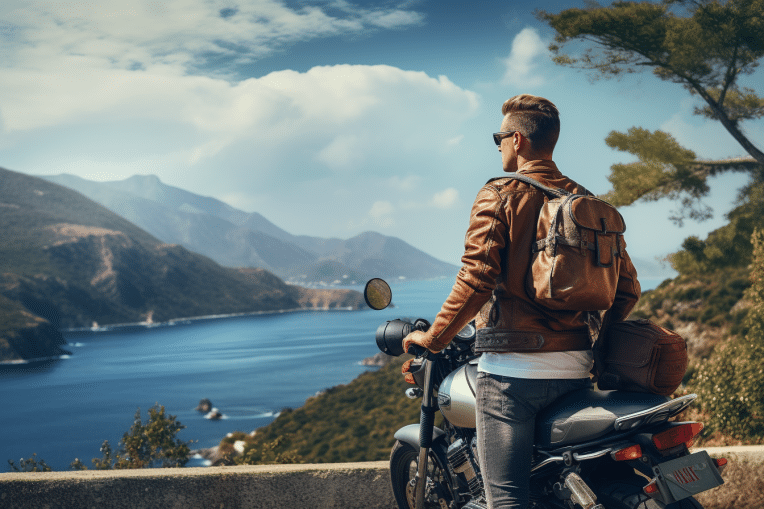
Salt Lake City, UT: Desert Rides and Motorcycle Shipping
AA Motorcycle Shipping Company welcomes you to the heart of the desert, Salt Lake City, UT, where the expansive landscapes and winding roads invite motorcycle…
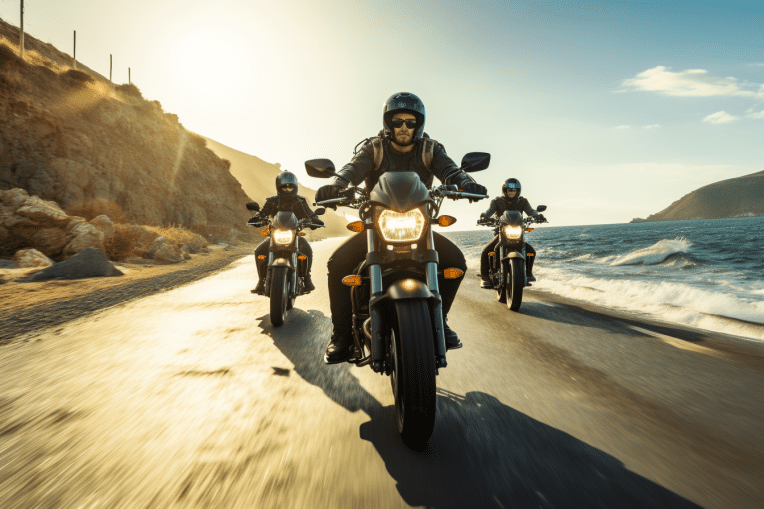
Eugene, OR: Pacific Northwest Motorcycle Paradise
Exploring the Views of Eugene on a Motorcycle From lush forests to rolling hills, riders can explore scenic routes like the McKenzie Pass-Santiam Pass Scenic…
Leave a Comment Cancel Reply
You must be logged in to post a comment.
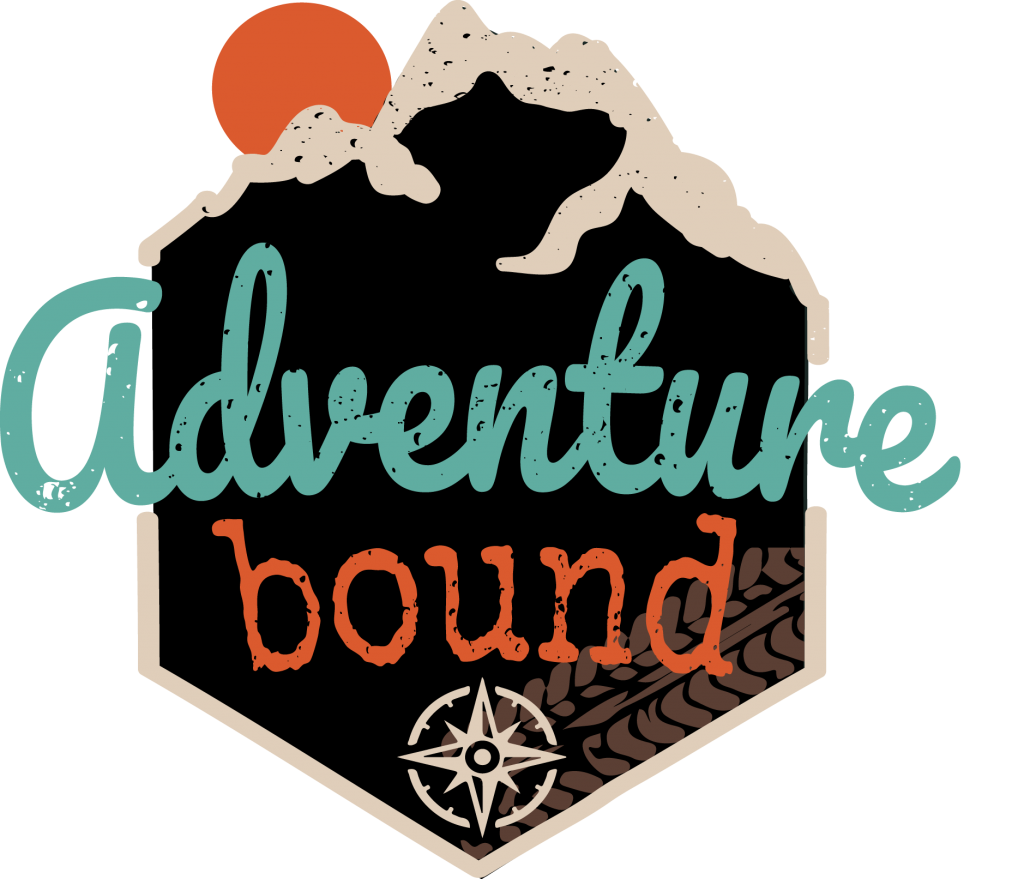
Motorcycle Route Planning: Tools and Tips for Scenic Rides
- February 20, 2022
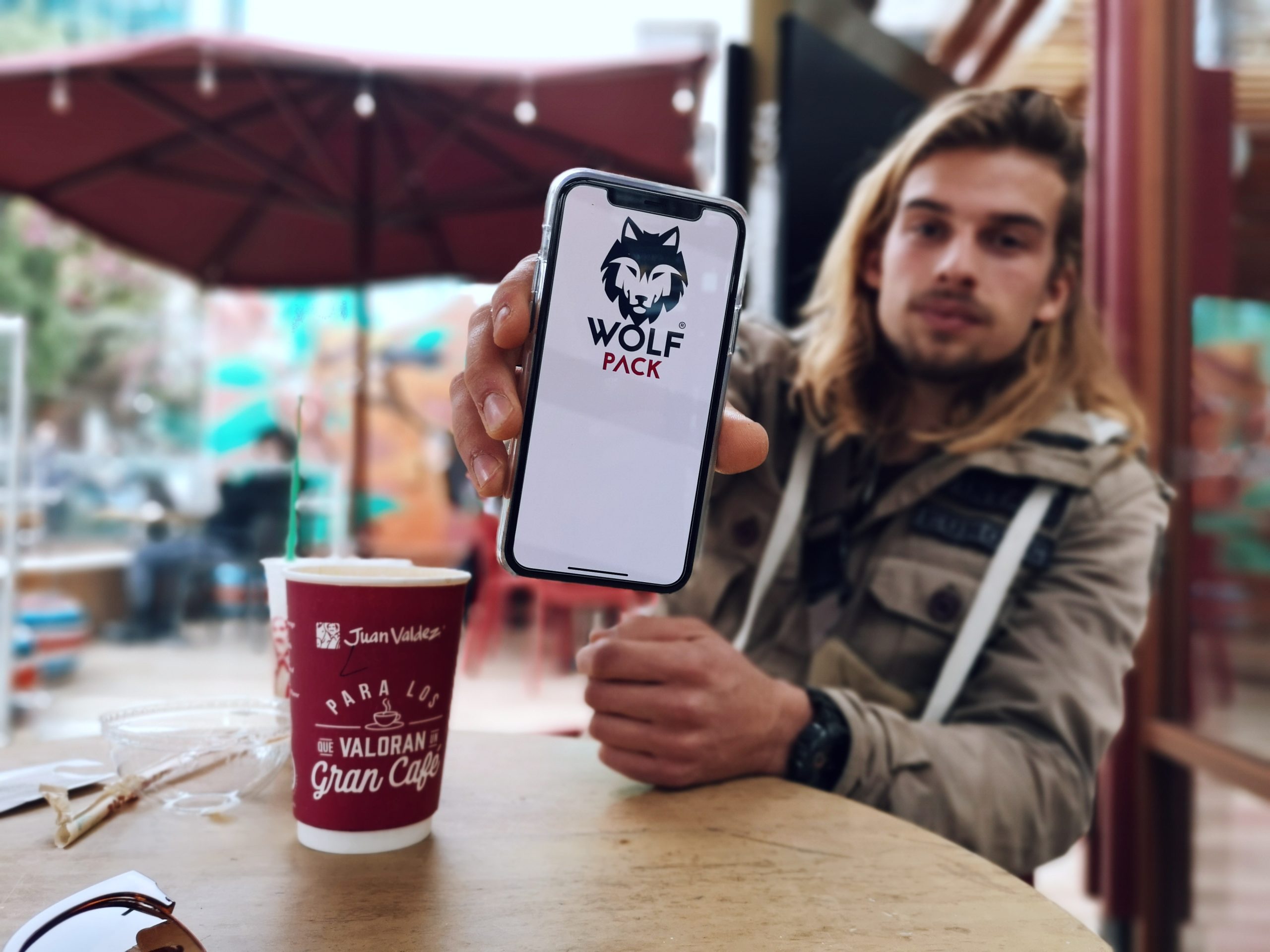
Table of Contents
Whether you’re going around the world or thinking of a weekend ride, motorcycle route planning is one of the most fun parts of trip prep. Oh, the places you’ll go!
There’s nothing like tracing imaginary routes on a paper map or designing your very own dirt trails across mountains or deserts on Google Earth.
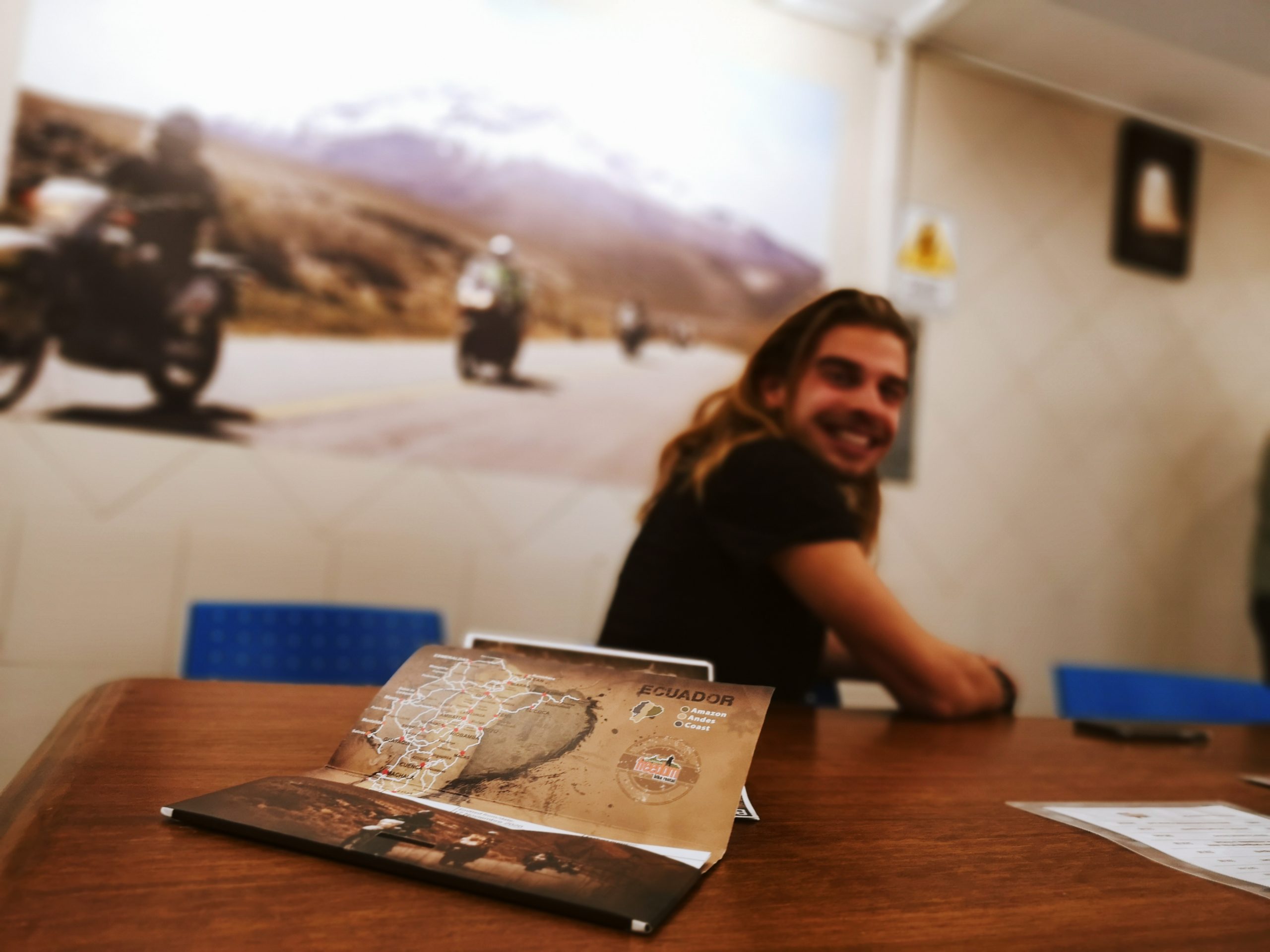
But while motorcycle route planning is fun, it’s also easy to fall into some of the most common rookie traps – like not factoring in terrain, aiming for an overly ambitious daily mileage, or miscalculating your fuel range.
Then, there are variations in travel infrastructure. If you’re venturing into South America, Asia, or Africa, your route planning will need to be a tad different. You may have to deal with unexpected detours due to landslides, floods, border closures, or other unpredictable factors.
Winging it may sound tempting, and you can certainly improvise as much as you like. Still, having a rough idea of where you’re going and what’s your plan B policy can be helpful, especially if you’re in a limited time frame. Equally, overplanning may leave you rushing from destination to destination and not really enjoying the journey itself… To help you find that sweet balance spot, we’re sharing or ultimate motorcycle route planning guide – but feel free to use it as a suggestion rather than a rule! Everyone is different, and in the end, you’ll plan out your own trip – on your own terms.
In this post, you’ll find:
- Motorcycle route planning basics to get you started
- Our own experiences (and mishaps!) planning bike routes in Europe, the US, and Central and South America
- Recommendations for motorcycle route planners, tools, and apps
- Ideas for fuel, rest, and accommodation stops along the way
Maps at the ready? Let’s dig right in.
How to Plan a Motorcycle Route
To begin creating your motorcycle route, first think about the way you like to travel.
Do you prefer winging it or planning everything out with Swiss precision? Neither way is right or wrong, and most travelers are somewhere in between – a little planning, a little improvisation, and a little see-what-happens is a healthy mix.
Lennart and I usually lean heavily toward the “let’s ride and see” method: we love exploring and finding places off the beaten path. Often, this means taking random trails on a whim or listening to the suggestions of the locals.
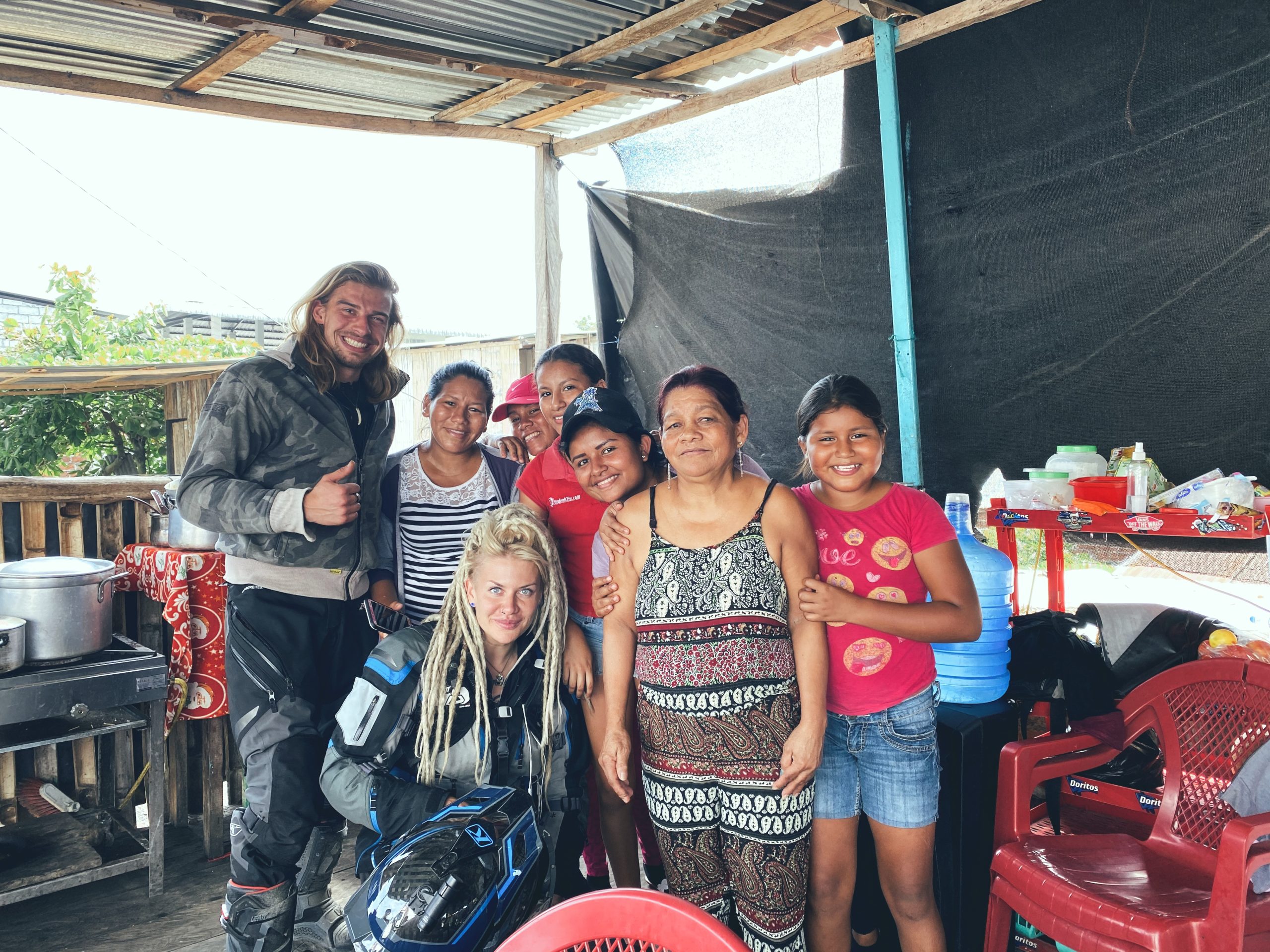
However, we’re on the road indefinitely, which means we can take our time to get places (and don’t mind the dead ends). When leading a tour with a limited time frame, on the other hand, we always have carefully planned out routes stored in GPX files on multiple navigation devices.
Next, think about how long is your trip, and how much time do you have.
The longer your trip and the more time you have, the less you need to plan upfront.
When you’re flexible with your routes and your time on the road, you can allow yourself plenty of scenic detours, leisurely exploration, delays, and changes of direction.
If you’re pressed for time, on the other hand, planning matters. When you only have two weeks or two months, mapping out a route for your motorcycle journey will help you hit the destinations you’re dreaming of while still sticking to a schedule and enjoying the ride.
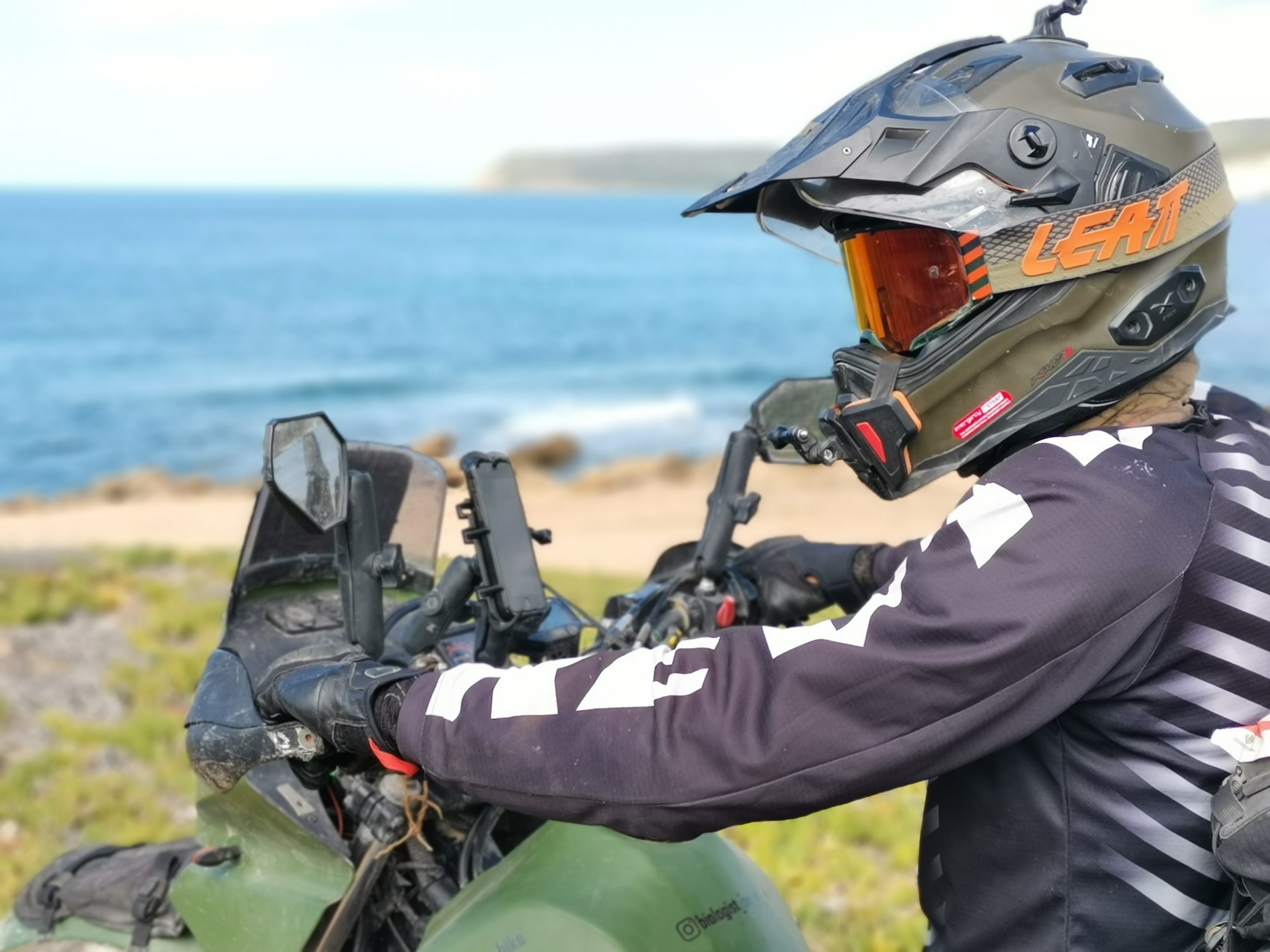
Planning a Route for a Long Motorcycle Journey
For long (think 6 months+) motorcycle expeditions, having a rough direction of where you want to go is usually enough: say, you’re riding from Nordkap to Cape Town or doing a trip around Europe.
Since you’re going to be on the road for more than half a year, you don’t need an exact route just yet. As you travel, your priorities may change – you may find you prefer shorter (or longer) days in the saddle. You may discover you want to ditch tarmac altogether and stick to dirt all the way; perhaps you’ll decide to take more time to complete the trip. Somewhere along the way, you might want to stay and explore one country more than the other, or rush through if you only get a short visa or entry permit.

In other words, as you travel, your MO may change. You’ll modify your route as you go along, so instead of trying to meticulously plan the entire journey, just have a rough route and only plan a week or two ahead.
But what’s a “rough route”, and how do you design one?
A simple way to go about it is reverse engineering your motorcycle route using the highlights you want to see along the way.
For example, if you’re doing the Alaska-Ushuaia route, jot down what’s most important to you. Sticking to the Pan American Highway? Hitting the dirt on Andean trails? Spending more time in Bolivia, Argentina, and Chile?
Once you’ve selected a handful of places that are an absolute must-see to you, connect them on the map and see what you come up with. That, in essence, is your rough motorcycle route to start with. Now, plan out the first couple of weeks in more detail – and leave the rest of it open-ended.
Planning a Short Trip
For a short trip, a more detailed route plan can be handy, especially if you only have a weekend, ten days, or a couple of weeks. Your plans and the way you travel aren’t likely to change dramatically in a short period of time, so for a week-long trip, more meticulous motorcycle route planning can be helpful.
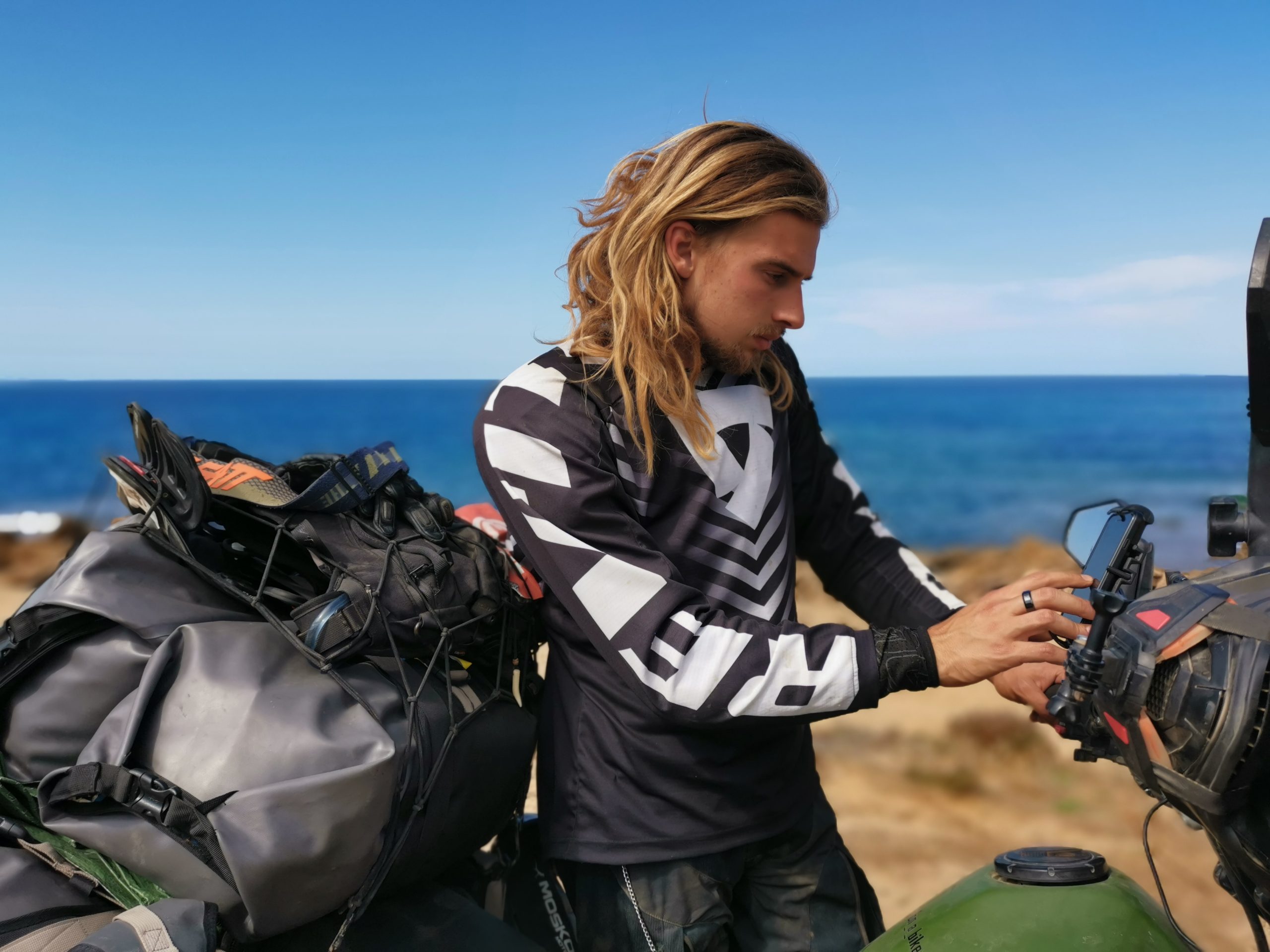
To start designing your route, use the same principle as with the long journeys. First, make a list of places you want to see or roads you want to ride. Then, see how you can connect the dots on the map in the most creative way imaginable. Look for smaller backcountry roads for those generous curves and little traffic; utilize the TET or TAT routes for off-road expeditions; do a little research to find out what lies in between.
Then, estimate your daily distances to figure out how far you can get before you need to turn back. When planning the return journey, see if you can take different roads so you’re not doubling back; if you can’t, at least plan out your distances differently so the experience will not be the same.
Finally, when planning your motorcycle route for a short journey, leave a little wiggle room for improvisation. Even on short rides, unexpected things – bad weather, flat tires, roadworks, closed mountain passes, and the like – may happen, and it’s good to have some flexibility planned in to deal with them as they come.
Daily Miles: How Far Is Too Far
Now that you have a rough idea of your motorcycle route, it’s time to decide on the daily mileage. How far do you want to ride each day?
A lot of first-time travelers tend to overestimate the distances and cram as many miles as they can in a day. If you’re on a big, powerful bike and you’re mostly riding on-road, you may very well be able to cover 400+ miles a day comfortably.
If you own a mid-sized or small motorcycle and you plan to ride both on and off the road or stick to backcountry routes, shorter distances are your best bet. 200-250 miles a day is plenty, especially if you like to stop often, enjoy the scenery, or take a detour or two to explore.
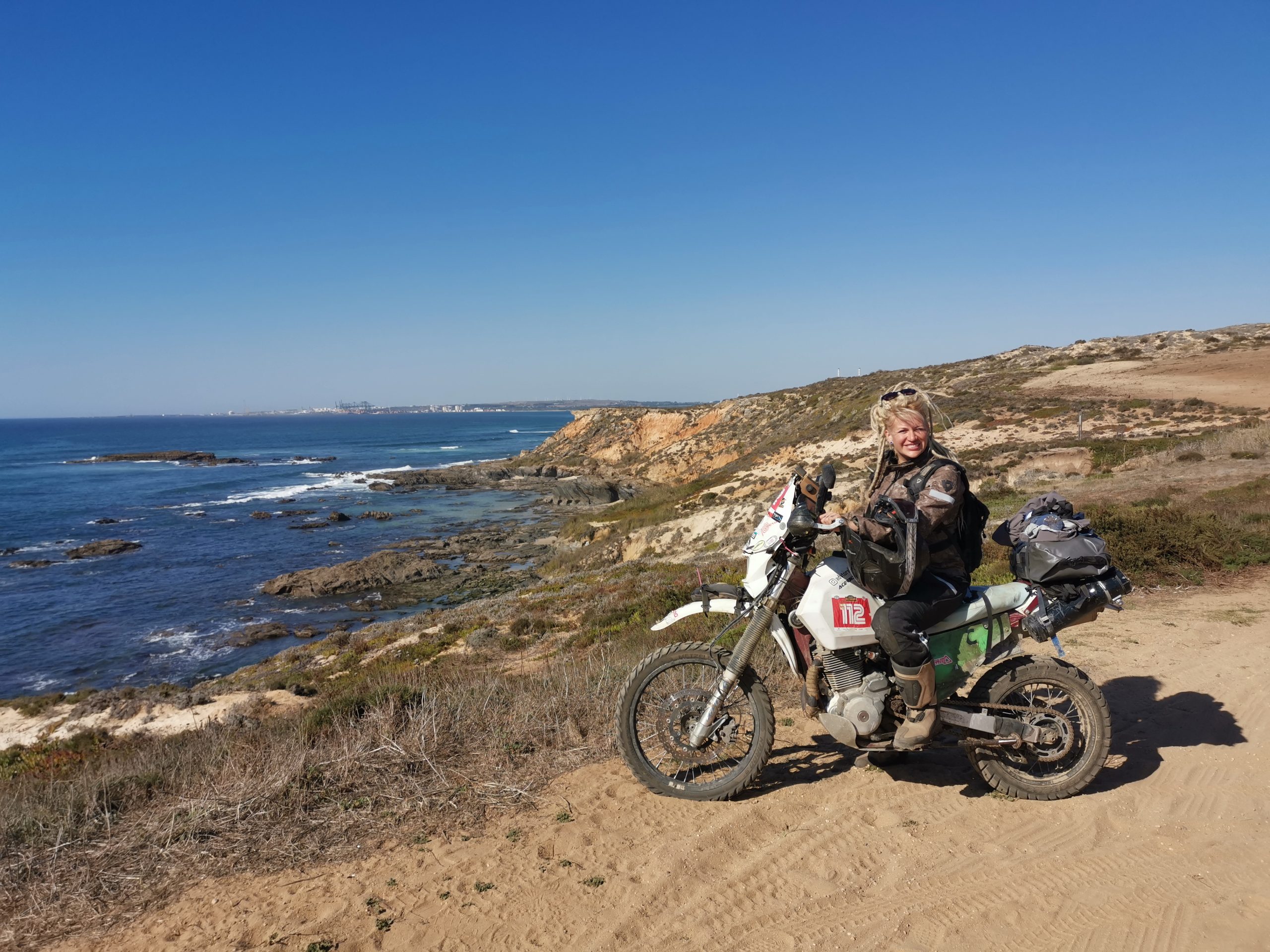
We prefer to do 100-150 miles a day at the most. We’re on 650 CC dual sport bikes, we try to ride as much dirt as we can, and we prefer having enough time to enjoy the ride, stop often, jump in a lake or a river for a swim mid-ride, or cut the distance shorter if we happen to find a good camping spot early in the day. If pressed, we can do 500–600-mile days, but neither of us enjoy them in the slightest: our goal is slow travel, lots of dirt, and little rush.
Every rider is different, however, so you’ll need to figure out what distances are the most comfortable for you. To start off with, stick to 250-mile days and see how it feels: you can always change this as you go along. Equally, you can have a few short-distance days when riding through a scenic area, then put in a few long-haul days to cover the miles through a less interesting region.
Not All Terrain is Created Equal
In addition to overestimating distances, it’s easy to forget the terrain. Back in 2013 while riding Peru, I made a classic rookie mistake: I planned to ride a 250-mile distance from the Pacific Coast into the highlands. 250 miles seemed like a doable distance, even on my little 150cc bike. And it would have been a fairly easy day’s ride had I been on a highway running across flatlands…except I was headed straight for the heart of the Andes Mountains.
The altitude changed from zero to 13,000 feet above sea level, the roads were potholed and crumbling, climbing ever higher in steep switchbacks. The distance wasn’t huge, but because of the Andes, the roads were so twisty and narrow it took me twice as long. The result? I barely made it to my destination in the dead of night, freezing at high altitude with low visibility and unpredictable road conditions.
When planning a motorcycle route, on or off the road, always factor in the terrain. 300 miles on a German Autobahn is a very different story from the same 300 miles on some remote backcountry road in the Balkans, and what looks like a decent distance on a map may take you much longer in the real world if you’re crossing mountains.

Don’t just trust Google – look at the topography, too, and if you’re not sure what the road conditions may be, plan shorter distances: you can always make up for it on straight roads.
Planning a Dirt Bike Route
When it comes to off-road riding, long daily distances just don’t work – unless you’re racing a rally. Even when you stick to hard-packed dirt or gravel roads, more than 200 dirt miles a day are rarely a good idea. If you know you’ll be hitting single track or more technical sections, 100-150 miles a day is plenty.
You may be an exceptionally skilled and fast rider aboard a powerful off-road beast, but the reality is, riding dirt is more fatiguing than tarmac, and being completely exhausted at the end of each day adds up quickly. In addition, dropping your bike on dirt tends to happen more often than on pavement; if you have to pick up your bike several times a day, the fatigue will set in faster, and those long miles will stop being fun pretty soon.
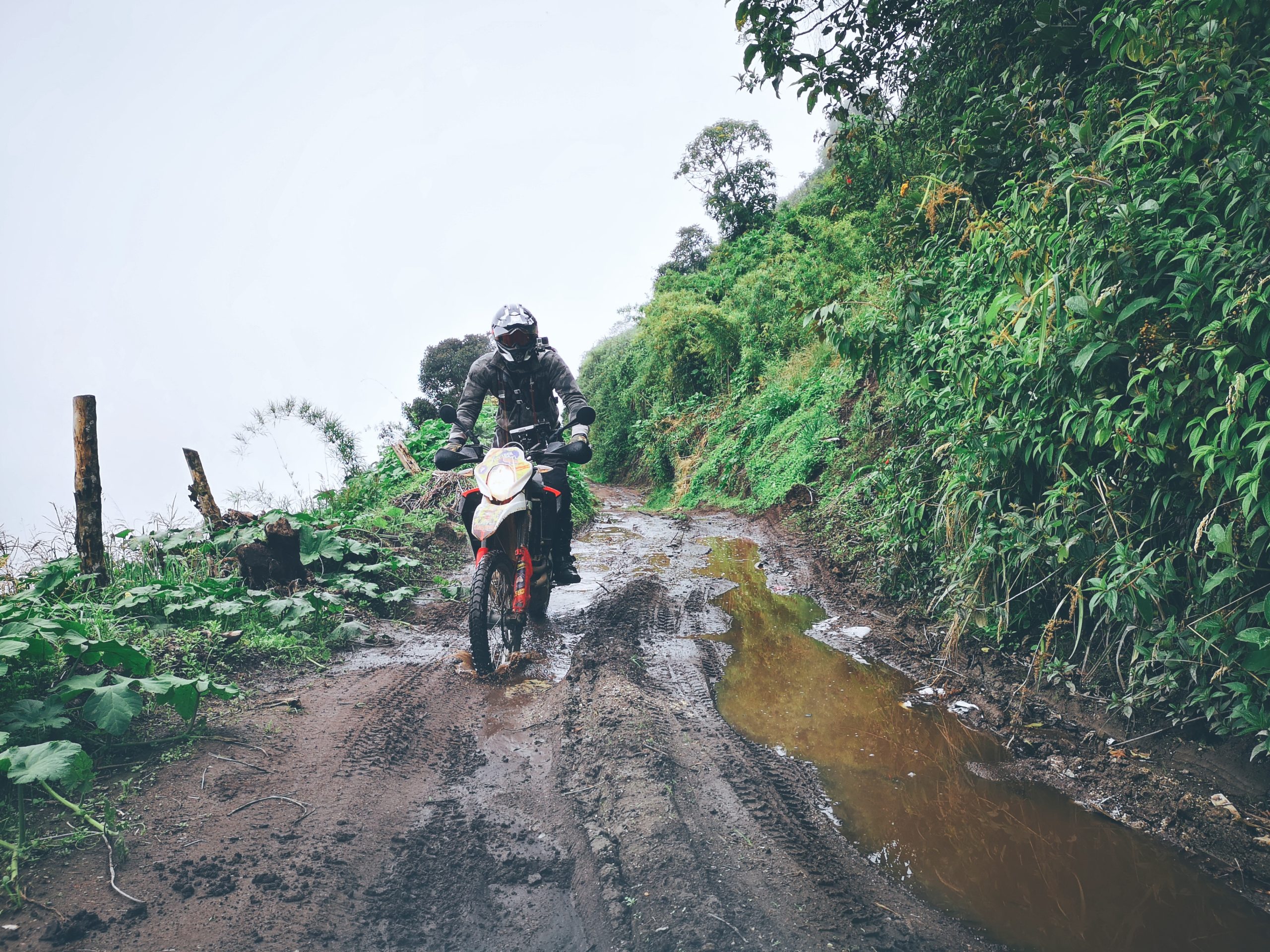
Finally, off-road routes are less predictable than tarmac ones. Heavy rain during the night may completely change the tracks offering up a selection of washouts, mud, and monster ruts slowing you down. What looks like a decent enough gravel road on Google Earth may turn out to be a tricky section of loose rocks and baby head boulders; if there has been a flash flood recently, a small creek may become a full-on river crossing, and a dry riverbed may have turned into a muddy clay soup.
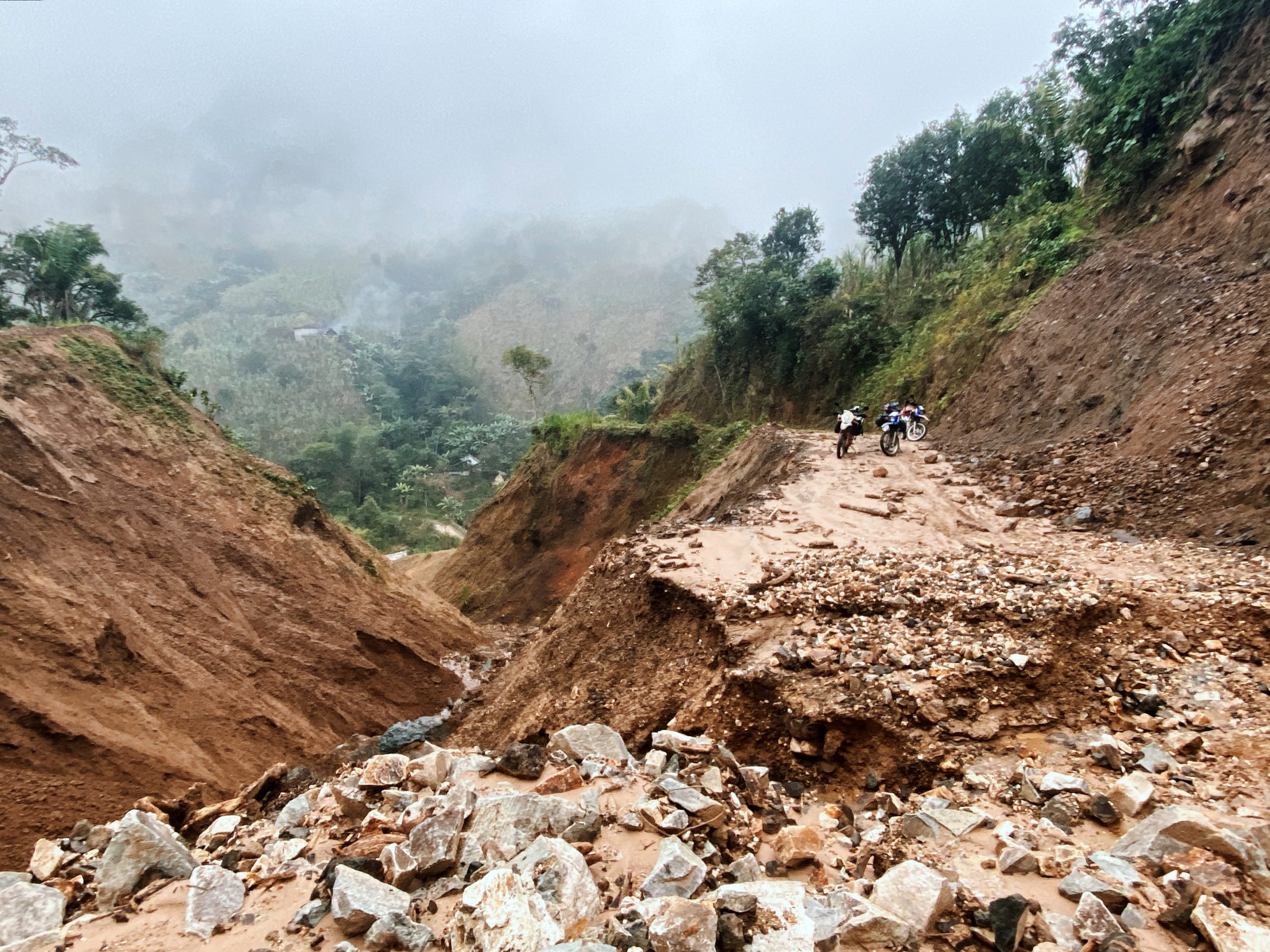
Once again, everyone’s different, and if Dakar-style traveling is your thing, by all means, do those long distances. If you’re not sure about your comfort spot just yet, start off with shorter distances first, see how you feel after a few days, and then add or take off those miles as you see fit – there is no one-fits-all formula when it comes to traveling off-road.
Planning a Motorcycle Route on Tarmac
Planning a motorcycle route on paved roads is easier than on dirt since it’s more predictable. Unless there’s an earthquake, a freak flood, or a zombie apocalypse, you can pretty much expect the tarmac routes to be intact regardless of weather, and while some roads are bumpier than others, potholes won’t slow you down that much.
Still, there are a few things to watch out for when you’re designing your paved routes:
- Population density. Roads that cross lots of towns and villages will have strict speed limits, roundabouts, intersections, and traffic – all of which can slow you down.
- Tourism hotspots. Most bucket list roads tend to get pretty crowded, especially during peak season. To avoid slow-moving tourist traffic, either skip the must-see places altogether or hit them early in the day or on weekdays when there are fewer crowds.
- Road quality. What constitutes good-quality tarmac is very different in Switzerland, Cuba, Bolivia, and Arizona. If you’re not sure what sort of roads await ahead, plan shorter distances just to be on the safe side.
- Roadworks. Avoid them wherever you can – Google Maps are usually pretty good at warning riders of roadworks.
Motorcycle Route Planner Tools
When planning a motorcycle route, what’s the best map or app out there?
It all depends on your preferred method of navigation and your GPS unit. I still have my ancient Garmin Montana on the handlebars, and it does come in handy here and there, but for the most part, Lennart and I use phone navigation to ride, plan routes, and find wild camping spots.
Here’s what we like:
- Google Maps . Simple but effective – and the Google Earth feature is helpful when looking for camping places for the night.
- Osmand : this app is great if you want to use GPX files. Upload them to your phone, open them with Osmand, and go. Osmand works both on and offline.
- Maps.Me is a good app to have for backup: Maps.Me offers offline navigation (provided you’d downloaded the area or country map beforehand), which comes in handy when you’re riding somewhere remote with no phone signal.
- Wikiloc is great for finding off-road trails: we used lots of Wikiloc trails in Ecuador and Andalucia recently, and it’s a great way to discover local dirt tracks on the go.
- iOverlander is a super helpful app for finding wild camping spots, bike-friendly stays, and route information.
The WolfPack App
If you’re looking for more than just a map, take a look at the WolfPack app . We used WolfPack during the Ecuador expedition , and what’s really nifty about the app is that it’s not just a route designer tool.
You can create your motorcycle routes within the app and share them instantly with other riders (your “pack”), as well as add in stops, modify routes to avoid highways, and stay in touch while riding. The app has a simple but elegant comms system – as you ride, you can tap the comms icon on your screen and select pre-recorded messages such as “stop”, “fuel”, “coffee”, and the like, and the message will appear on other riders’ screens.
In other words, you don’t need an intercom or that weird half-dance with your hands and feet to indicate to others that you want to stop or need gas. Finally, WolfPack is a little like a social network for riders – you can share routes, discover and connect with local riders in the area, share photos of the ride, and so on. Especially handy for road rides, WolfPack is a fantastic motorcycle route planner and social app for two-wheeled travel.
Fuel and Rest Stops
As you’re planning your motorcycle route, factoring in fuel and rest stops is part of the deal. What’s your fuel range and how frequent are fuel stations on your route? What mileage are you covering, and how often do you want to stop?

Even if you have a 450+ fuel range, stopping for gas at least once a day isn’t a bad idea, especially in more remote places. Think of it this way – it’s better to stop, top off your tank, and not need it than to realize you’re running on fumes with no gas station in sight, wishing you’d fueled up earlier. We try to always start the day with full tanks, even if we’re only planning a short distance – it’s just less hassle this way.
When it comes to rest stops, it’s entirely up to you how often you want to take a break and for how long. We tend to stop every hour or so for a five-minute break, or every two hours if we’re in a rush or have a long distance to cover. Lunch breaks are sacred – never ride hangry! – and if we have the time, we’ll improvise a scenic stop along the way to gawk at a waterfall, make use of a swimming hole, or just sit under a tree in the shade for a little while.

Planning Accommodation
Now for the last piece of the puzzle: accommodation en route.
Some riders like to plan and book hotels or guest houses ahead, others leave it to chance. We tend to do both depending on where we’re headed: if it’s somewhere sunny and with lots of wild camping options, we may have a quick look on Google Earth, find a body of water near our destination – a lake, a river, a stream – and vaguely aim for that direction to wild camp for the night.
If we know we’ll need to stay in a town or city, we try to book a place ahead to avoid traipsing all over town at the end of the day, tired and hungry, trying to find cheaper places on the go – it’s never a good combination.
If we’re in cheaper countries, we may improvise; every once in a while, we may find a really good AirBnB or a wild camping spot and make a basecamp out of it for a few days or a week. This allows us to leave the luggage behind and explore local trails with unloaded bikes.
If you’re on a short trip and your daily distances and routes are more or less planned out, booking accommodation in advance saves hassle and money. If you’re on an open-ended journey, booking places ahead doesn’t always work out – you might not make it in time, or decide to skip the area altogether.
And sometimes, accommodation just isn’t available: once deep in the Ecuadorian Andes, we were riding dirt roads with so many washouts and landslides we took a lot longer than expected and ended up in a tiny village with no hotels or guesthouses at all.
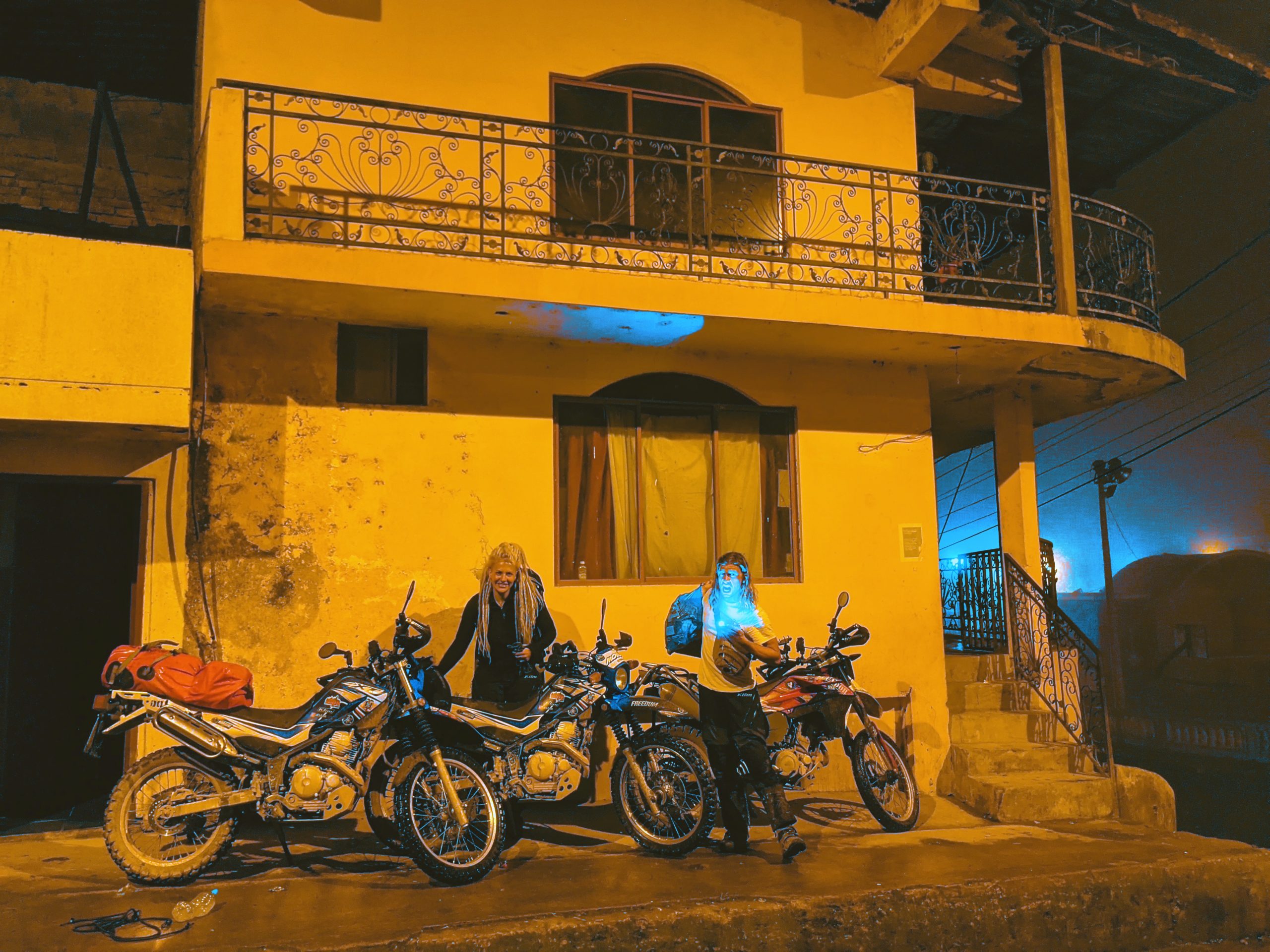
Carrying a tent and a sleeping bag just in case is usually a good idea if you’re venturing to places off the beaten path – even if you don’t use your camping gear often, it gives you a little peace of mind knowing you can set up camp anywhere if need be.
If you found this post on motorcycle route planning helpful, check out some of our other travel resources:
What Nobody Tells You About Adventure Motorcycle Travel
How Much Does It Cost to Travel the World?
Adventure Motorcycle Travel Ideas for 2022
Stay adventure-bound,
Egle & Lennart

Share post on:
Where there is a will, there is a way.
- Pingback: Motorcycle Camping: Stop Overthinking It // Adventure Bound
- Pingback: How to Find Motorcycle Tours for Beginners // Adventure Bound
Leave a Reply Cancel reply
Your email address will not be published. Required fields are marked *
Save my name, email, and website in this browser for the next time I comment.

The Complete Motorcycle Trip Packing List
Welcome to the Motorcycle Trip Packing List. This article provides a complete checklist of all the essentials you may need on your bike travels.
Motorcycle Clothing
Personal clothing, electronics.
- Food and Water
Miscellaneous
This is a no-nonsense motorcycle trip pack list. The article lists everything you need to take on your motorcycle travels with links to more in-depth guides if you fancy diving deeper. All adventures are unique, to different parts of the world, climates and conditions, so adapt the list according to your personal needs. Consider this a base line. Each item links to one of our gear test reviews or somewhere to buy online.
- To see what we use: Our Round the World Motorcycle Packing List
- For what you do and don’t need: How to Pack for a Motorcycle Adventure
- For all our packing lists: Motorcycle Packing Guides
- Jacket and trousers
- Gloves x 2 (summer and winter)
- Riding socks
- Throw-over waterproofs
- Lightweight down jacket (doubles up as bike thermal)
- Thin trousers
- Light and small trainers
- Mobile phone
- DSLR or point and shoot camera
- Travel tripod
- GoPro / Sena / Drift
- GoPro stick
- Set of memory cards
- Chargers and USB battery pack
- Laptop or tablet
- Removable hard drive
- GPS tracker
- USB with backups of important info
- Emergency Satellite Communicator
Choosing Your Adv Riding Gear
How to pack for travel, photography gear list.
- Sleeping bag and silk liner
- Tent (Check out our 10 BEST Tents article)
- Cooking equipment including washbowl , cutlery , spices, chopping board , utensils, fire starter etc.
- Motorcycle soft panniers
- Motorcycle hard panniers
- Crash bar panniers
- Tool box or tube
- Roll up rucksack for when you’re off the bike
- Electronics bag
- Packing cubes
- Rok Straps
- Toothbrush and paste
- Soap / shower gel/ shampoo
- Shaving kit
- First aid kit
- Hand sanitiser
- Mosquito repellent
Camping Gear Checklist
The motorcycle luggage guide, 6 best soft panniers.
- Passport and copies
- Driver’s licence and copies
- International Driver’s Permit
- Vehicle registration document
- Vaccination book
- Carnet de Passage (if needed).
- Travel insurance
- Passport photographs (can’t have enough of these)
- Emergency USD
- Easily accessible paper with all important contact info on.
- Spare bike key
- Wrench and socket set
- Hex head set
- Puncture repair kit
- Air compressor and Gauge . (Rocky Creek Tyre Pump Review)
- Tyre levers and wheel removal tools
- Ratchet strap
- Screw driver
- Spanners/ Allen keys
- Tool roll ( Kriega Tool Roll Review )
- Cable ties and Gaffa tape
- Oils, lubes, epoxy , Loctite and copper grease
- Spare parts, levers, cables and consumables like filters, O-rings, pads etc.
- Check out our SBV Adventure Bike Tool Kit Review
- Chain or lightweight bicycle lock
- PacSafe net or cable
- Motorcycle cover
The UK Travel Insurance Guide
The ultimate tool kit, how to keep safe on the road.
- Owner’s manual downloaded onto your phone
- Crash protection
- Motorcycle modifications for comfort, off-roading and travel
Food and water
- Hydration bladder pack
- Water purification stick/straw or tablets (we don’t carry these)
- Food / snacks / water
- Emergency dry food and snacks
- Fuel canisters: Rotopax / fuel bladder / Overland Fuel Cannisters
- Navigation device: Sat Nav / Phone / Paper maps
- Mounts for phone case and video camera
Adventure Bike Guides
How to adventure proof, travel apps for adventure riders.
We may receive a commission, at no cost to you, if you purchase a product using the affiliate links on this page. We’re not sponsored, are completely impartial and don’t run ads. So this helps us keep the site running. Thank you for your support.
Read more on motorcycle packing, kit, equipment and travel gear
Thanks for checking out the Complete Motorcycle Trip Packing List. We hope you found it useful in what to take on a motorcycle trip! Here’s a few of our Guide pages that we recommend you read next. You’ll find all the articles related to a specific subject in one easy to find and read place and plenty more guides on gear and packing for a motorcycle trip.
- Motorcycle Packing Guides
- Electronics Guides
- Adventure Bike Guides
- Riding Gear Guides
- Round the World Travel Guides
- Motorcycle Luggage Guides
- Motorcycle Camping Guides
Liked that? Try these next...
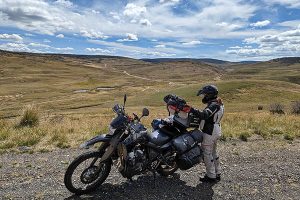
Things You Didn’t Realise You Needed on a Motorcycle Trip
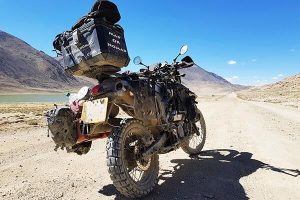
How to Motorcycle Round the World
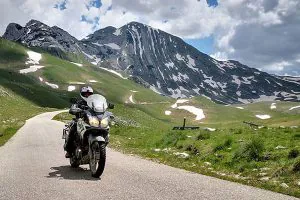
Motorcycle Touring for Beginners
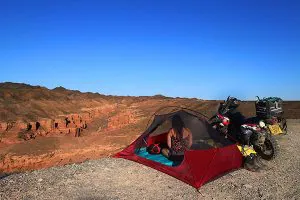
The 10 BEST Motorcycle Camping Tents
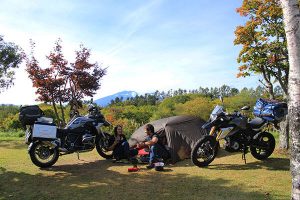
The Ultimate Motorcycle Camping Gear Checklist

How to Choose Your Adventure Bike Riding Gear
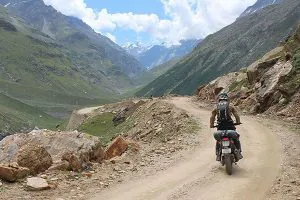
How to Go on a Motorcycle Adventure
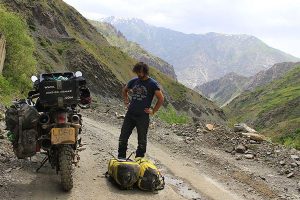
How to Pack for a Motorcycle Adventure
We’d love to hear from you! Please post your comments below.
29 thoughts on “the ultimate motorcycle trip packing list”.
Fantastic guide right here. Many many thanks for putting this together. It’s going to come in very handy once we can all finally travel again. Cheers
Hi Graham, thanks very much for your comment, glad you found it helpful! Are you planning a big trip? Feel free to shoot us any questions if you need anything here in the comments, via email or in the Forum anytime! More than happy to help fellow travellers. Cheers 🙂
I am indeed, I was planning a big trip to Turkey and maybe the Caucasus time permitting for middle of next year. That’s brilliant, thank you for that. It’d be a huge help in planning. I’m still sifting through your site and have been looking at the camping gear lists today. Fantastic stuff
That’s great! We actually have loads of motorcycle guides on the Caucasus, Georgia, Armenia, Azerbaijan and also on Turkey that might help you plan your tours there. You can find them under the Europe Destination Guides here https://www.madornomad.com/guides/europe/ . If you need anything specific, shout anytime!
Very useful. Just had a read of your European packing list one too. It’s obviously a lot more minimal than this one but it’s good to know all these extras in case I do decide to go further afield. Thanks guys
Hey David, thanks very much! Glad you found it useful. You’re right, the European pack list is a lot more minimal as it’s for touring so you won’t need to carry everything on this list. Best of luck with your packing! I’m assuming you’re thinking of riding into Europe? If you need a hand with anything just shout! Cheers 🙂
Hi I never rode motorbike on mountain road but I drove car from Chiangmai to Bangkok, and 3-4 time from Chiangmai to Doisuthep, so am I suitable for this ride or not. I am an Indian and wan to wnjog that trip. Please provide me ideas about motorbike because I wan to ride Royal Enfield Mateor.
Hi Ranjan, thanks for your comment! This sort of question would be better asked in the Forum. If you just make an account and ask in the Thailand forum, it’ll be easier to answer there. Also, could you please provide a bit more information when you ask in the forum…. for example, you ask “am I suitable for this ride or not?” What ride? Where? and you ask to “provide ideas about motorbikes”, but for what journey, where etc? Cheers
This an excellent guide and although I’ve done many tours I’ve found new things to consider and learn.
Thanks Steve! Much appreciated, really glad you found it helpful 🙂 Cheers, Andy
Its Helped me soo much.. thank you Mad or Nomad.. I’m from INDIA.. and I’m planning to 22days long ride in my beautiful country.. Luv u Bro..
Great list.I made lots of copies.Thanks for saving me lots of time.
Hi Bruce, Glad you found it helpful! All the best with your travels. Cheers, Andy
Awesome Motorcycle Trip Packing List. Thanks for saving lot of time.
Once again bundle of Thanks from Pakistan.
Hi Najeeb, thanks for your comment! Andy
Your list put many smiles on my face, being on the road for 38 years the right way (2 wheels, based in Holland). There are many tips newbies would never think of. And probably will not follow. Silly they are. All your tips are worth following.
Hi Chiel, Thanks for your comment, and that’s incredible to hear you’ve been on the road for 38 years! 38 years of travelling or riding? Cheers! Andy
38 yrs travel on 2 wheels. Somewhat longer by bicycle and kayak/canoe/yaght.
Brilliant! You must have had some great adventures 🙂 Cheers and all the best, Andy
This is my go-to resource for planning a motorcycle trip anywhere! Legends.
Hey James, thanks very much for your kind words! Much appreciated mate. Andy
YES!!! Exactly what i needed. Thank you Mad or Nomad!!!
Hi Bill, thanks for your comment, glad you found this article helpful! Cheers, Andy
Hi guys, so glad to have found your resource, my wife and I are planning a round trip to India, and back via Central Asia, 2 up on the one bike, clearly Azerbaijan is putting this on hold for now. I wonder as I don’t know how long we’ll be away, how the return visas work, I’m under the impression that it’s not easy to get them whilst away from your home country, and a printer! Weapon of choice: Super Tenere 1200ZE Thanks for such a super resource, I’ve been researching for over a year and this is the one resource that brings it all together. THANK YOU SO MUCH.
Hi Julian! Thanks very much for your message, I’m sat here in Guatemala working on a guide and saw your comment pop up and it put a smile on my face, so thank you! It’s good to know the website is of use 🙂 Awesome to hear you and your wife are planning a ride to India, that’s fantastic! And you are going to love Central Asia. CA is literally our absolute favourite riding region out of everywhere we’ve ever been – nothing compares, so make sure you put plenty of time aside for it.
Yes, Azerbaijan is a pain and it has been since covid. There has been no news on when the borders will be open to travellers. The way around it most people are going for is to get a Russian visa and enter Russia from Georgia. However, Russian visas are expensive and can only be sourced in your home country.
On return visas… do you mean how do you get a visa while on the road for the countries you have already ridden through? Are you riding back through the same countries? Only a few countries in the world require you to get a visa to enter from your home country – for example, Pakistan. 99% of countries can be done online or at the border. Printers are never a problem either (if you need them) and are easy to find anywhere in the world. Personally, we arrange our visas as we go. We didn’t arrange any visas before we left home on our trip and we’ve been on the road for nearly 7 years now. We only had to return back to the UK once to get a visa and that was for Pakistan and was a couple of years into the trip. In nearly 90 countries, this has never been an issue apart from that one time.
I hope this helps, feel free to reply with any questions! Always happy to help fellow motorcycle travellers.
Cheers, Andy
Hi Andy, many thanks for a full and rapid reply. Yes, I meant visas for countries already ridden through. My original plan was to ride through Iran and Pakistan into India, but due to restrictions Iran is off the menu, besides, CA is infiniteley more interesting the more I read of peoples’ travels there. We wanted not just to get to India, but do a sort of circular tour around inner india, avoiding tourist hotspots, though the Pakistan/India border display is a must for us. So clearly we won’t know how long we’ll be in India. The other concern is how to get into India, I’ve heard of ‘fixers’ who’ll get you through Kashmir into India, but nothing concrete, and there’s the issue about Visa for Pakistan being only sought in UK. The other route is Western Province of China, and this as you know involves a guide at a cost approx of £8000-£10000 if my research is correct, and yes, it can be shared with other travellers at the border, but how would we know if there’ll be any there when we get there? Maybe there always are people there, I don’t know. After a tour of India, the plan is to return the same way, we could ship the bike back, but deffo for me, the journey is the destination. One last thing, I’m always curious to see that The Super Tenere is not on anyone’s list for suitable long distance biking, including yours-reliable and no chain, pedigree too. I wonder why, is there something I don’t know? 🙂
Hi Julian, Yes, unfortunately they’re two difficult countries – Iran won’t let Brits in without an expensive guide (unnless that’s changed very recently) and Pakistan needs a visa from home. Other than that you’re good to get visas as you go! Yes, CA is brilliant – check out our blogs from the rides there and the destination guides on CA. Getting in shouldn’t be too difficult. If you want to visit CA then the most common route to get to India is via China. No, it won’t cost you that much to get through China. Here’s a guide on how to transit China written by Jah who runs a transit company, we have lots of people using Jah’s services. He’s a good guy, send him an email and say Andy from Mad or Nomad sent you. He helps with forming groups etc to bring cost down and will let you know the rough timings other riders are looking to go. Alternatively, there’s plenty of facebook groups where people form groups for crossing china. Shipping the bike back is the easiest option – but why go back the same way? Why not go to Mongolia – you’re close! Or ship to the Middle East and ride back that way. Unlimited possibilities! We do have a review on the Super Ten and I do know of a few folk who have done some serious long distance trips on them. But the reason it’s not a highly recommended bike is because its large, heavy and low to the ground. Still, they’re reliable tanks and comfy long distance. No reason not to go on one if you already have the bike and enjoy it! Cheers and keep in touch! Andy
Many, many thanks again. I’m telling everyone I can about your info and contact details. It’s heartening to know that China is not the obstacle I thought it was, in fact the contrary, now that you’ve recommended Jah’s services (always good to know someone who has experience when in far flung lands). The Super Ten was chosen because of it’s reliability and shaft drive, I’m well used to it now and being a plumber-used to lifting heavy objects and having dropped it a couple of times standing still, it’s weight isn’t that much of an issue whereas its luggage and weight carrying capacity is a plus. I recently completed a 4200 mile round trip with my son, both of us on my Harley Sportster with full camping equipment and know only too well how to conserve space and weight, so the S10 will be a breath of fresh air in comparison. I like the suggestion and will do an off-road course as it’s inevitable we’ll see at least some gravel or dirt roads. I certainly will keep you posted, however there’ll have to be probatory (trial) run across France, then the North of Spain to Galicia to see that my wife will be able to sit for that long on the S10 as we’ve only done short trips together so far. Fortunately, like your partner she enjoys being on the bike, so I’m halfway there..
Hi Julian, sorry for the delayed reply, wifi is intermittent on the road. Thanks! That’s kind of you 🙂 And yeah, China will be an expense and it will take time to sort, but Jah will take away the stress and the China expense is just one of those things that overlanders have to go through when transiting Central to South Asia. Jah runs a professional outfit and is constantly taking riders across there, so he will sort your licence and everything. Plus, it’ll definitely be a very interesting experience for you to say the least! Good reasons for the Super Ten then. And that’s brilliant you did that on a Sportster! Awesome!
Yes, off-road training is highly recommended. People always spend fortunes investing in gear and bags and clothes and fog lights for their bikes but never investing in themselves and their riding skills. There are some brilliant off-road schools in the UK. I’ve attended most of them, here’s a page where I list a selection of the best, and it has a map so you can find the closest to you – The Best Off-Road Schools in the UK
Good idea on doing a dry run, you’re doing everything right! Here’s another article on riding two-up you might find interesting. Hope the dry run goes well, sounds like a brilliant trip in itself!
All the best and catch up soon, Andy
Leave a comment Cancel reply
Save my name, email, and website in this browser for the next time I comment.
Notify me when new comments are added.
How to prepare for a long motorcycle ride (10-Points Checklist)

If you are planning for a long motorcycle Ride then you would probably have some confusion like how to prepare for the ride, how to manage money for the ride and how to get yourself physically prepared. Don’t worry in this post I will cover all your doubts right from Choosing a bike, destination and taking care of your health during long motorcycle rides.
Ops! Did I mention about the Money saving hacks during the long rides?
Yup! Don’t forget to read some of the few tips and tricks I have a shared in this post to save your money on petrol and accommodation during long motorcycle rides.
So let’s go step by step on how to get started and prepare for a long motorcycle rides.
Table of Contents
1. get the documents ready for long motorcycle rides.
Before You start your motorcycle ride make sure you get all the documents ready. For long rides you need to have various documents like Registration Certificate, Licence, permit papers, Bike insurance papers, Aadhaar card etc ( Documents differs according to country rules and regulation)
Planning to travel to another country by motorcycle? – Make sure you carry these documents!
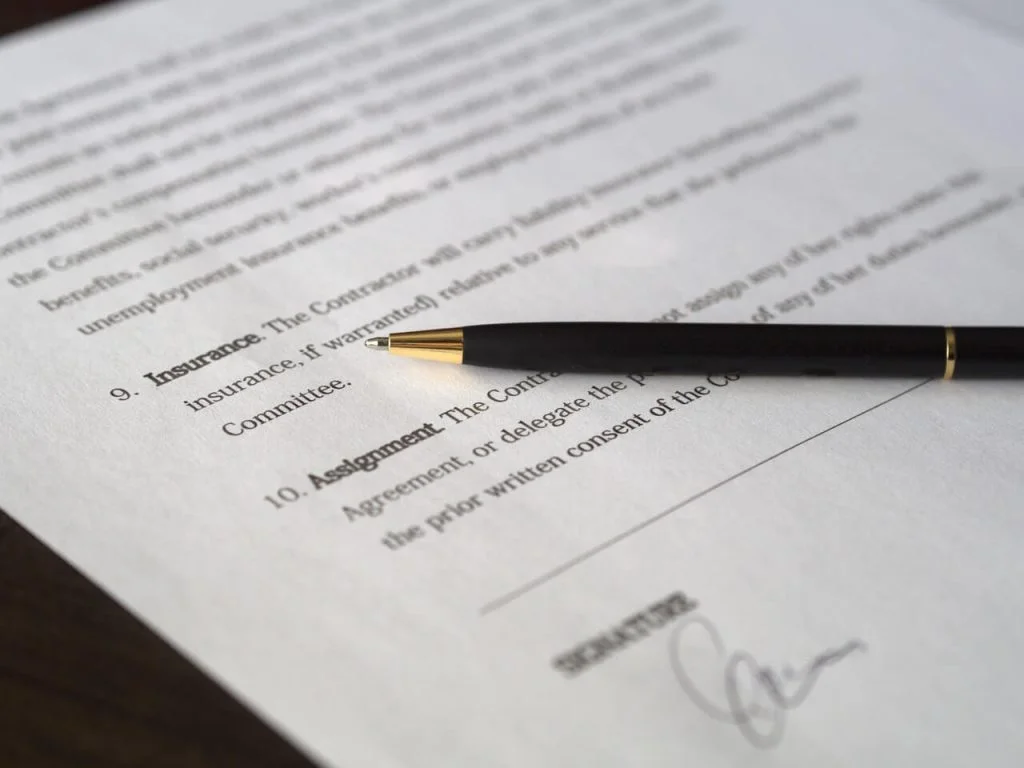
If you are travelling to another country by motorcycle make sure you carry the documents which are required as proof of identity and legal documents of your motorcycle.
For example, While going to Nepal through your own motorcycle you need documents such as Passport, Driving licence, Voter Id card as a proof of nationality and in addition to that you should have Registration Certificate of vehicle, Driving license, Customs permit and Vehicle Permit in order to enter Nepal with your own motorcycle or vehicle.
So, Make sure you do your homework before and carry all the necessary documents required to enter the country where you are going.
2. Choose your destinations for the ride
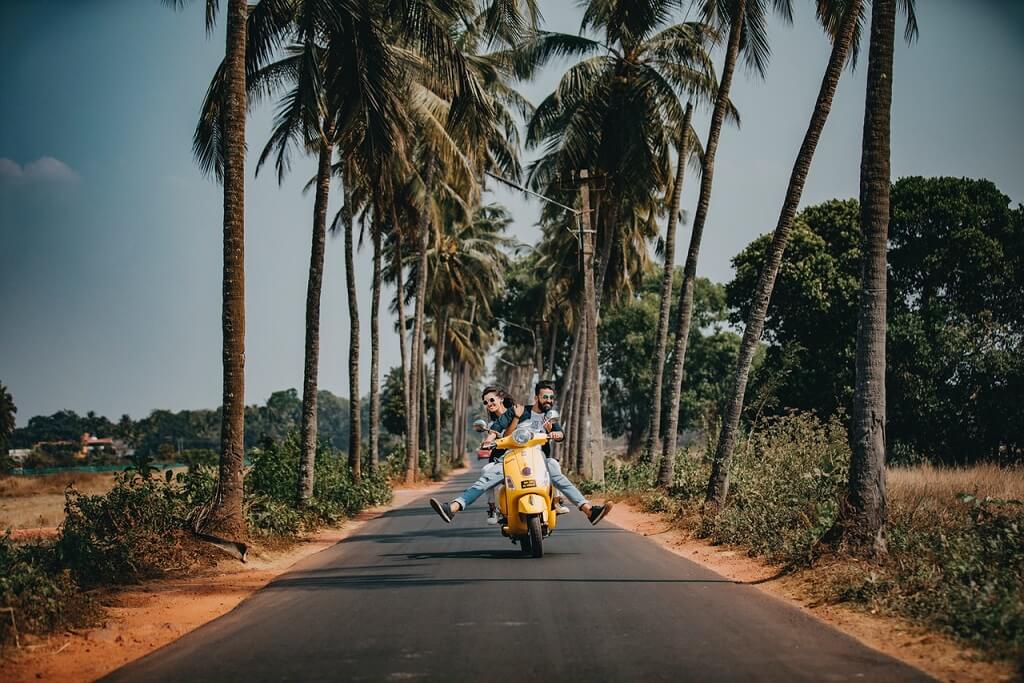
While you choose your destination for the long motorcycle trip, make sure you do your homework before you are heading out for the ride. Know what type of motorcycle tour you want to do and what type of motorcycle will be suitable for that area.
For example, the Motorcycle road trip to places like Ladakh is full of hurdles because of the treacherous roads. So when you choose your destination just make sure you keep in mind a few things such as:
- The climate condition of the place where you are planning to go and the places from where you will cross.
- In some places, you need a special permit to enter so make sure you carry all the documents required.
- While choosing a destination make sure you plan you’re itinerary accordingly.
3. Choose your motorcycle for a long trip
Choosing the right motorcycle is very important. Once you have chosen the perfect destination for the motorcycle ride then you have to choose the perfect bike for the ride. There are various types of bikes according to the uses. You can choose a good bike for your ride according to your destination and preference.
Here is a dedicated post Which will guide you to buy a motorcycle like a Pro even if you are a beginner!
How to buy a Motorcycle? 10 Things to consider – Motorcycle Buyers Guide ?️
When you choose the bike make sure that the motorcycle should be good for the long-distance ride and most importantly it should be comfortable. It is good if you already have a motorcycle but if you haven’t you can hire a motorcycle .
4. Get your motorcycle ready

Before you head out for your long motorcycle trip make sure you get your motorcycle serviced.
There are a lot of things which you have to test in the motorcycle. For example:
- Use the bike for at least 1 week before the ride so that if any problem occurs you can get it fixed.
- Check the wheel and the shape of the rim
- Inspect the tyre and see if it is new and have the proper grip
- lube the chain
- Inspect the engine performance and fuel efficiency
- Test your front and back brakes and if it is loose make get it tight
It is best to give your bike for a detail inspection to a mechanic and you can tell him personally about your long trip, so that mechanic can fine-tune your motorcycle for the long ride.
KTM 390 Adventure – An Adventure Tourer worth your attention!
5. Get physically prepared for a long motorcycle ride

It is very important to take care of your health while a long motorcycle ride. Because you have to drive your motorcycle for so many days continuously. So you must stay healthy and do exercise regularly.
If you are suffering from any type of health issues it is better that you take some rest and postpone your ride. Taking care of your health while long motorcycle ride is so important that I have shared some tips below on how to physically prepare for a long motorcycle ride.
6. Take care of your health during the motorcycle ride

Taking care of your health during a long motorcycle is very important so make sure you follow all these tips.
- Drink water frequently
- Do some exercise for your back and shoulder
- Take a break during transition time (During sunset)
- Don’t stretch just be calm take rest and go slowly and just enjoy the ride.
- Take Stretch Breaks During Long Rides
- Take it easy!
Use complete motorcycle gears
- Wear proper riding gear, which will keep you safe from changing climate.
- Always wear a good ISI marked comfortable helmet.
7. Must-have accessories for a long motorcycle trip

While going for a long motorcycle trip always make sure that you carry all the accessories which are needed.
Here some of the useful accessories you have to carry while going for a long motorcycle ride.
Sena Bluetooth device
The Sena Motorcycle Bluetooth Intercom device is designed to keep you connected to your riding squad over longer ranges for conversation and music sharing which is up to 900 meters.
This is very important in riding since it will keep you connected throughout the ride and make your motorcycle trip even more interesting
Keep a small portable toolkit with you, if you are going in a squad then make sure your group carry only one tool kit which is enough
Bungee cord
Bungee cord comes in hand to pack your loads and to mount it to the bike it can be used for other stuff also so make sure you carry one.
Other Useful items
While going on a long motorcycle trip you have to carry some important things like your clothes, toiletries, rain cover and mobile etc.
8. Pack Right and Light
When you are going for a long motorcycle ride make sure you pack your luggage smartly. Don’t overload your motorcycle with too much unnecessary luggage which you don’t need.
Make sure you carry only the things which you need. If you are going with your bike squad make sure you split the luggage with your companions so that one does not have to carry so much of heavy luggage. Here is a cool video I found which will help you to pack your bag smartly! And this Guy has really explained it in detail.
9. Save your money and time where possible during long motorcycle trips
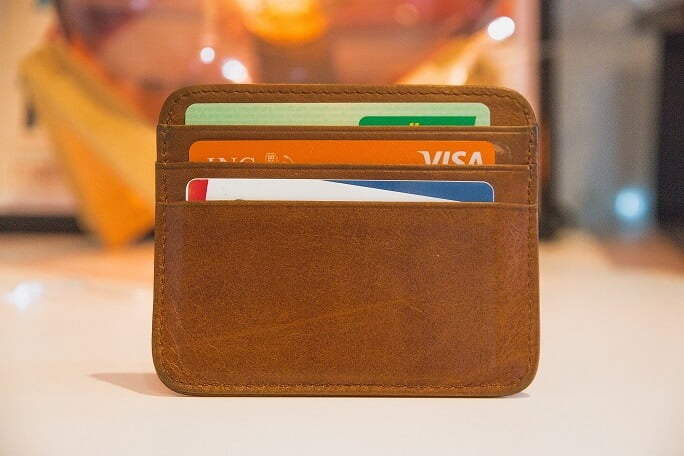
I know Long motorcycle rides cost a lot of money.
Right from petrol bills and food bills to Accommodation you have to get ready to pay so many bills. But wait! Here are some of the best tips and tricks to save your money while long motorcycle trips .
Save money on Petrol
Make sure you use some good credit card which gives cashback or offers on petrol bunks.
Since you have to refill your petrol so many times it is the best way to save your money on petrol by using credit cards and trust me you can save a lot!!
For this, you have to find some good Bank in your country which provides offers and cashback or some incentives in petrol bunks.
Save money on accommodation
Save 100% on your accommodation! There is a great hack to save 100% on your accommodation!
Woo Super Excited to know how?
Do camping! Yes, nowadays there are a lot of small portable tents available which you can carry with you and if you find some good place to rest just put your tent there and enjoy a bonfire with your friends.
This is the best way to save your money while enjoying your bike trip to the fullest! Trust me, This will be an ultimate experience.
Now, what if you do not find some good place to put your tent?
Don’t worry here are some of the tips and tricks by which you can get a room in a hotel at a very cheap price. make sure you read this article by Curly Tales .
10. Precautions to be taken while a long motorcycle trip
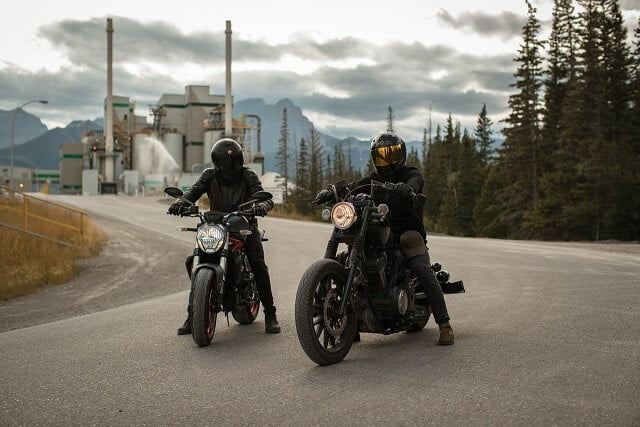
Don’t rush!
Don’t rush! you are not doing any race you just have to feel the breeze and the beauty of the surrounding. Go slowly and enjoy your ride.
Know your bike squad
Don’t just rush and leave everyone behind, watch and keep a track of all your team members or Squad.
Make sure you do your planning before the ride about who will lead and who will stay at last so by doing this everyone will stay in touch and no one will be left behind.
If possible make sure you carry some Bluetooth device like Sena, So that all the members will be connected and can talk directly with everyone.
Use earplug
Sometime you will be riding inside the city area where the noise will be very loud so make sure you use earplug to avoid more stress and headache.
Stay Hydrated
When you ride in sunlight you sweat a lot so Always keep yourself hydrated while riding. Drink plenty of water, this will keep you active and you won’t get dehydrated.
Follow Traffic rules and regulations
It is very important that you should follow traffic rules and regulation and ride safely.
Keep track of fuel
keeping a track of fuel is very important! Make sure you keep a track of the petrol and if possible carry some with you for an emergency.
FAQ on How to prepare for long motorcycle rides (trips)
Q. what are the best bikes for long-distance motorcycle touring.
Here are some of the best touring motorcycles 1. KTM 1290 Super Adventure 2. Suzuki V-Strom 3. Triumph Tiger 800 4. Ducati Multistrada 5. BMW R1200 RT 6. Yamaha FJR1300 7. KTM 390 Adventure
Q. How should I pack my motorcycle for a long-distance trip?
Here is a detailed video on how to pack and mount your bags in a motorcycle for long-distance trips.
Q. What are the best places for a long motorcycle ride in India?
Here are some of the famous long motorcycle tours which you can do in India. 1. Manali to Leh Motorcycle Tour 2. Mumbai to Goa 3. Bangalore to Goa 4. East Cost Road Motorcycle Tour: Chennai to Pondicherry 5. Srinagar – Leh – Manali 6. Jaipur-Jodhpur-Jaisalmer 7. Manali to Spiti Valley 6. Sikkim Darjeeling Biking Tour
Q. What are the best places for a long motorcycle ride in US?
Here are some of the famous long motorcycle tours which you can do in United States. 1.Peak to Peak Highway: Colorado 2.North Carolina and Tennessee 3.Beartooth Highway: Montana and Wyoming 4.River Road: Texas 5.Natchez Trace Parkway: Tennessee, Alabama, and Mississippi 6.Going-to-the-Sun Road: Montana 7.Beartooth Highway: Montana and Wyoming For full article visit here . Read this complete guide on how to prepare for a long motorcycle ride !
Q. How to physically prepare for a long motorcycle ride?
Here are some few tips on how to physically prepare for a long motorcycle ride. 1. Do some exercise for your back and shoulder 2. Wear proper riding gear 3. Avoid riding during heavy rain 4. Drink water frequently during the ride 5. Don’t stretch just be calm take rest and go slowly and just enjoy the ride. Here is an ultimate guide on how to physically prepare for long motorcycle rides
Q. How do you prepare for a long motorcycle ride?
Here is an ultimate guide on how to prepare for a long motorcycle ride (trip) (10 – Point Checklist) #1 Get the documents ready #2 Choose your Long motorcycle ride destinations #3 Choose your motorcycle for a long trip #4 Get your motorcycle ready #5 Get physically prepared for a long motorcycle ride #6 Take care of your health during the motorcycle ride #7 Must-have accessories for a long motorcycle trip #8 Pack Right and Light #9 Save your money and time where possible during long motorcycle trips #10 Precautions to be taken while a long motorcycle trip Read this ultimate guide here on Bike Squadron
Final Thoughts
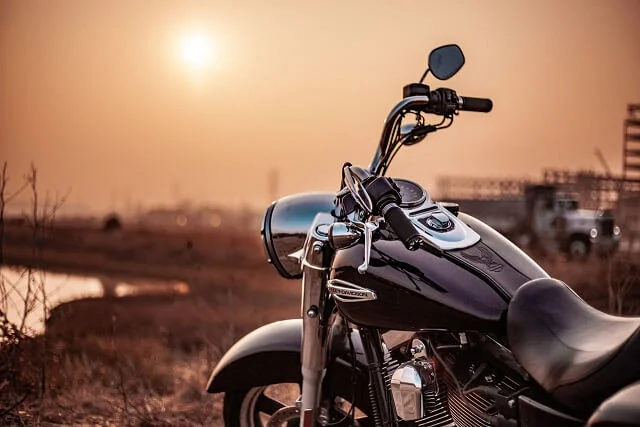
When you are on a long motorcycle trip , it is your choice whether you want to ride during day time or night time. Offcourse Bikers usually ride in the night to avoid traffic and to ride at pleasant weather, but still, it’s your choice.
But as a personal note. If you ride in the morning it will be a different experience. Watching a sunrise while riding will not only give you hope but also motivates you in staying ahead in life.
Always make sure that if it is too hot and you are not comfortable Riding then just STOP and continue when the temperature is low. Motorcycle long trips will be a life experience so make sure you enjoy it as much as possible.
We the Bike Squadron team wish you a very happy and safe ride! Let me know your thoughts in the comment section below!
10 thoughts on “How to prepare for a long motorcycle ride (10-Points Checklist)”
I was actually searching for such stuff for a really long time. Thanks for sharing such valuable information.
Really! Glad you like it!
Amazing Must read article before going for a long ride
Thank You, Ramkumar!
Thanks pertaining to delivering these sort of superb info.
Nice to know that such group exists to help other bike riders. I have plan to travel South of India – starting from Visakhapatnam to Kanyakumari and returning via Trivendram, Cochin, Ooty, Hyderabad, Bhadrachalam to Visakhapatnam. I am by myself travelling alone. I plan to give about a month to month and half for the trip. Planning to buy Bajaj Avenger 220, hope it can serve the purpose. Grateful for any suggestions regarding accommodation, type of vehicle and anything else I missed. Thank you ?
Thank you for joining us through this platform. As your ride is going to be a solo ride, so you have a wide range of bikes to choose from because you’ll get enough space for your luggage, which becomes a slight issue while having a pillion. Since you are planning to buy Bajaj Avenger 220, it has decent mileage, good luggage carrying capacity, superb wind-screen, and of course comfortable ergonomics. It is a good option if you least bother about its performance on highways since many people complain regarding its vibration factor which they witness while pushing hard on this bike(on highways). If you are going to ride at <100KMPH, this is going to serve the purpose. Else, I would suggest you go with (1)TVS Apache RTR 200 (2)Bajaj NS 200 (3)Yamaha FZ-25. All these 3 motorcycles are slightly costly than an Avenger 220 but worth every bit of money. Now you can choose any of these bikes according to your preference. Also, do read the article on "10 Best Places for Bike Trip in South India you must take!". It will help you out further: https://bikesquadron.com/bike-trip-in-south-india/ ? We also have our Facebook group to connect with riders across India, you can be a part of it at: Indian Bikers Squad https://www.facebook.com/groups/IndianBikersSquad
Thank you for this informative article !
Thank you so much! Glad you liked it 🙂
Leave a comment Cancel reply
Save my name, email, and website in this browser for the next time I comment.
Motorcycle Tourer
Our Top Motorcycle Route Planning App Comparison
Motorcycle Tourer | 15 April 2023 22 May 2022 | GPS & Route Apps , Route Planning
Table of Contents
Best isn’t always best, some tools i use:, 1. my-route app, 7. eat sleep ride, 9. aa route finder, 10. how do i plan a motorcycle route on google maps, planning a motorcycle roadtrip: conclusion.
I know it’s trendy right now to tour without a pre-planned route. And I get it. It’s spontaneous, adventurous, and exciting.
But the enthusiasm wears off pretty quickly when you get to your intended location and end up spending your time on boring roads/trails or wasting most of your time turning around.
I know this from experience!
If you’re one of the lucky few who gets paid to travel on bikes, it works fine. But for the majority of us who have to save up all year to go touring once in the summer, a pre-planned route gives you the best bang for your buck.
A pre-planned route gives you time to find and plot the best roads before leaving. You can decide how long you want to ride and book accommodation in advance. And you can even pre-plan fuel stops (like me) to remove yet another concern whilst on the road.
If you only tour once or twice a year, emphasis needs to be on enjoyment. And if you can remove the stresses of touring beforehand , then this leaves you free to actually enjoy your time on the road.
In this post, we’ll go through 10 of the best touring apps available. So grab a coffee, grab a notepad, and join us as we compare some of the top route planning apps on the market.
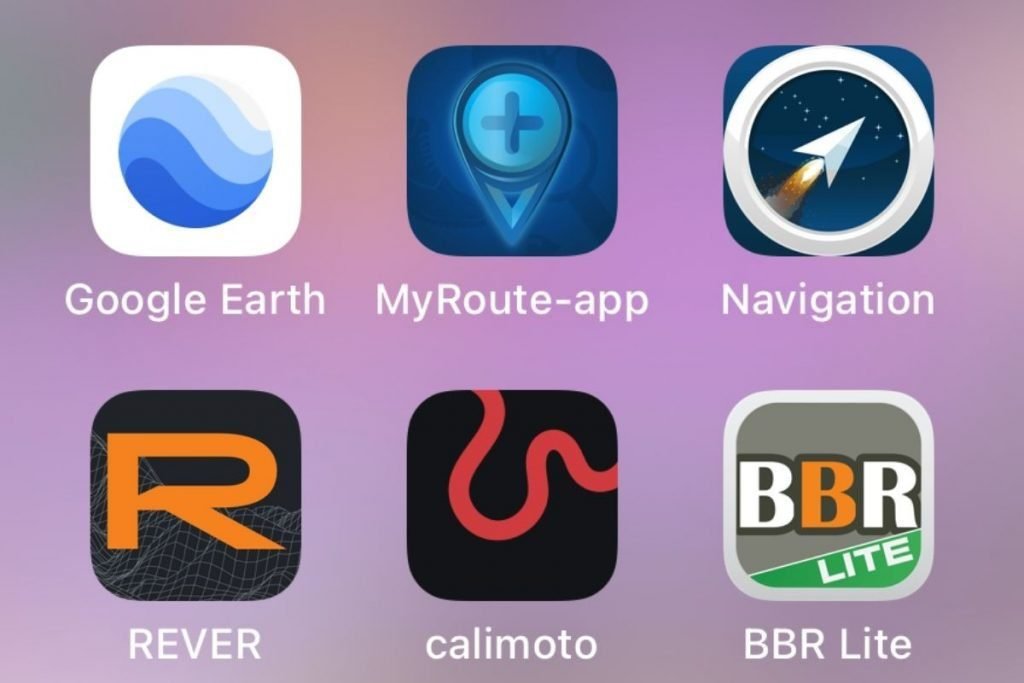
How Do I Find The Best Motorcycle Route?
Let me start by saying that there is no such thing as the ‘best motorcycle route.’ Nor is there a single ‘ best app for bikers .’ And the reason for this is that everybody is different.
I like to incorporate scenic routes when I plan a motorcycle road trip so I can enjoy the world and spend an hour or two taking photographs .
Of course, I include the best riding roads I can, too. But I usually have to compromise to get the best from both worlds.
But as well as including the things I like , I also incorporate a list of avoidances .
For me, this includes motorways and toll roads where possible. And dirt tracks – depending on the sort of bike I’m riding at the time.
For more route planning tips, check out our Route Planning category

And it will be the same for you. My version of the best motorcycle route through the Alps might differ from yours. And that’s because mine accounts for my priorities and not yours.
I always suggest making a list of the points of interest (POIs) you want to see and the roads you want to ride in the areas you intend to visit. And then construct your riding route around these points of interest and roads.
I like to plot these POIs on a map so they’re visible all in one go. Google Maps is a good way to do this. But there are loads of other apps that have this function – many of which are discussed in this comparison.
When you have your POIs plotted, it’s time to join them together. Once this has been done, you have your fully personalised route.
Using the tools in the apps listed, you can even personalise your route between points by including/avoiding motorways, toll roads, and dirt tracks.
And on a few of them, you can customise them further by allowing the motorcycle route planning app to find the twistiest or highest roads.
So now, you have a bunch of roads you want to ride, a bunch of things you want to see, and a customised way of travelling between them.
Once you get to this point, you have everything jotted down that makes for a memorable motorcycle tour . And you’re well on your way to finding the best motorcycle route for you .
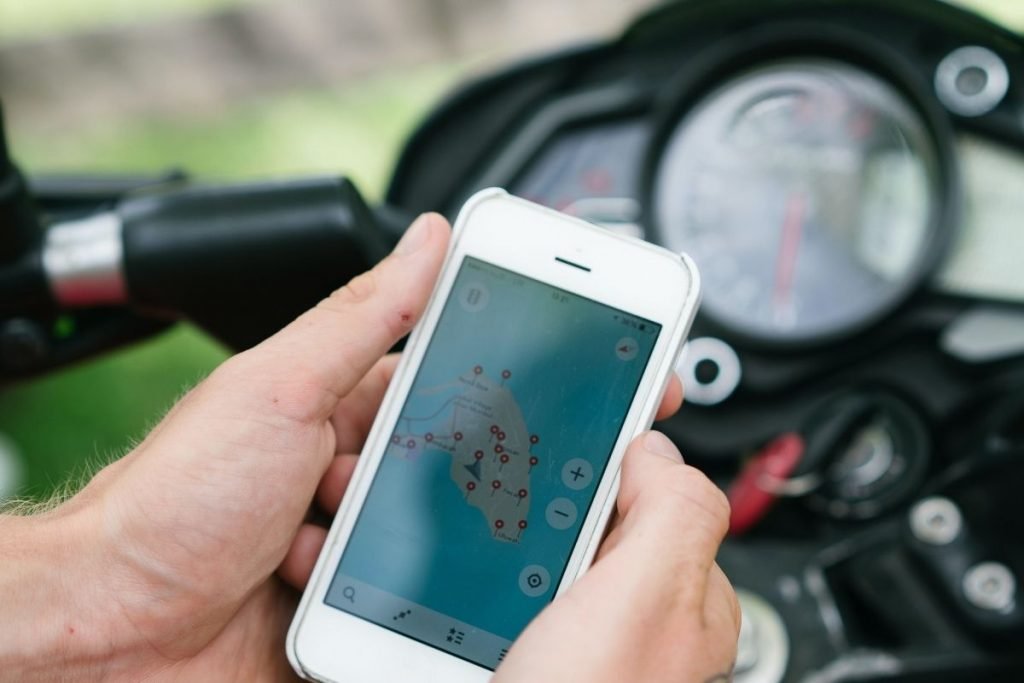
What To Look For In A Motorcycle Route Planning App
Finding a route planning app that works for you is as personal as plotting your route! I like to use MyRoute-App because it encompasses all of the tools and options I need.
The other thing to consider is whether you’re prepared to pay for them.
Most of the apps on this list have both free and paid plans. They’re usually pretty cheap. So if you find one you like, it’s often worth paying for it. As mentioned, I use My-Route App, and it costs me around £30 a year.
The truth is, you won’t know what you want from a motorcycle route planning app until you try a few. Once you start plotting routes, you’ll find tools you find useful, and tools you find irrelevant.
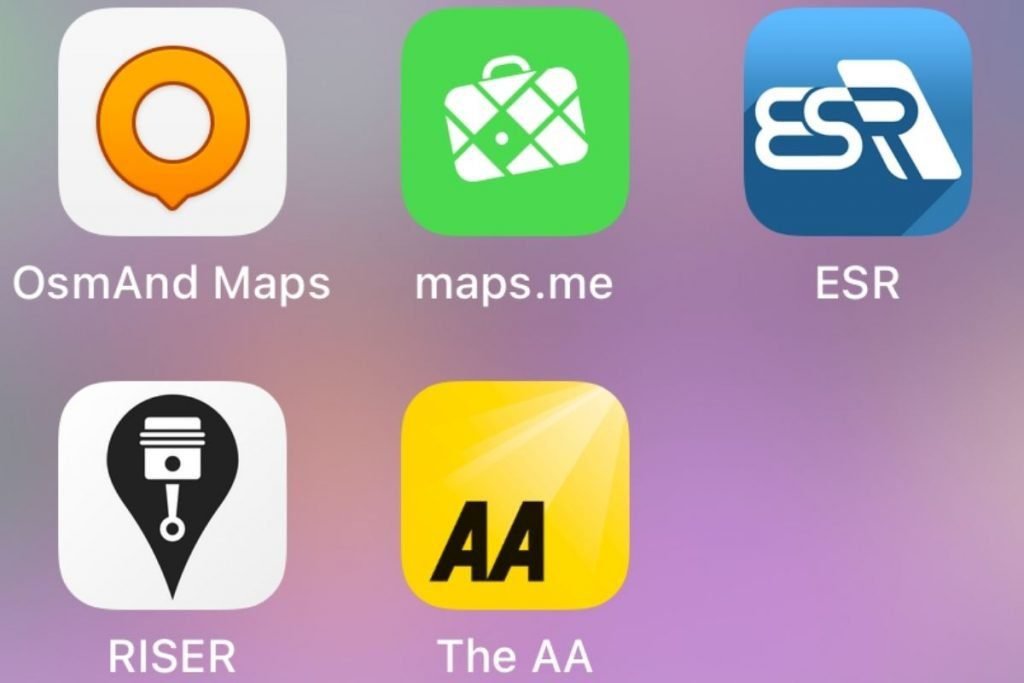
- Being able to reverse routes. It’s only once I’ve finished plotting a 3,000-mile route that I decide I want to do it backwards! Re-plotting it is a nightmare.
- The ability to transfer my route to multiple sat nav units. I ride with a Garmin sat nav, but some people I ride with have TomTom’s. Being able to transfer one route in multiple formats is a huge time-saver.
- Custom avoidances. Usually motorways and/or toll roads.
- Distance calculator. Whilst most apps tell you the overall distance of a route, not all calculate the distance between individual waypoints.
- Splitting routes. This means I can plot a 500-mile route and then split it into 3 smaller routes.
- Hotel finder – MyRoute-App has a partnership with Booking.com. So when you place a point on a map, you can find a hotel in that exact area via Booking. Very useful!
- Street View – in other words, the little blue man that you can drop on a map to see the street. This allows me to ascertain road conditions and potential stop off’s.
- POI finder – some apps allow you to select certain POIs that show up on (or near) your route. I tend to use this to find petrol stations on my route or restaurants for lunch stops.
Of course, there are many other tools I use when plotting a route. And when you start doing it yourself, you’ll find your own little list of options you need.
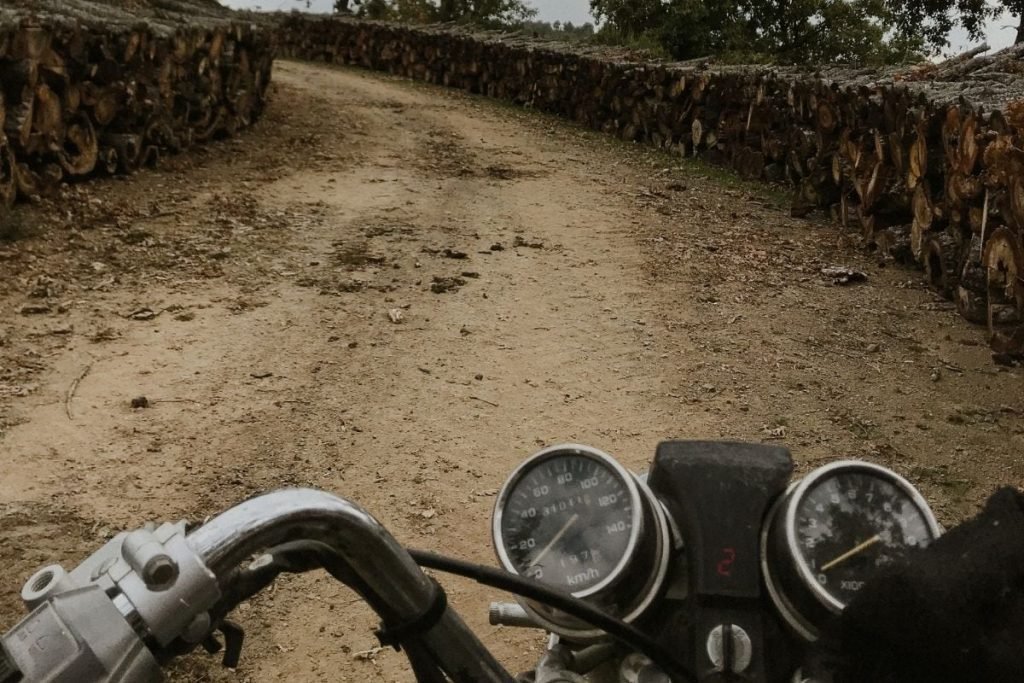
Top 10 Route Planning Apps For Motorcycle Touring
With that said, let’s get into the meat and bones of the apps! As mentioned above, finding a route (and a route planner ) is personal. There is no one-size-fits-all, so these apps aren’t listed in any particular order.
- Available on Apple & Android
- Free version available
- Gold version: €35,10 (usually €39)
- Navigation: €17,10 (usually €19)
- Website: https://www.myrouteapp.com/en
I’ll start with MRA for the simple reason that it’s my route planner app of choice. And it also encompasses many of the tools I like to use.
First and foremost, it’s easy to plot routes due to the various ways MRA allows you to do it. You can either drop a waypoint onto the map or type a place name in the search box. The app will then find it for you.
Once you input subsequent waypoints, this motorcycle route planning app automatically joins them together to form a route based on your chosen waypoints.
For each individual waypoint you create, you also have the option to customise it. So, for example, you can change the name or the colour to make it stand out. I usually turn my petrol stops green, my hotels red, and my viewpoints yellow. This allows me to see them at a glance.
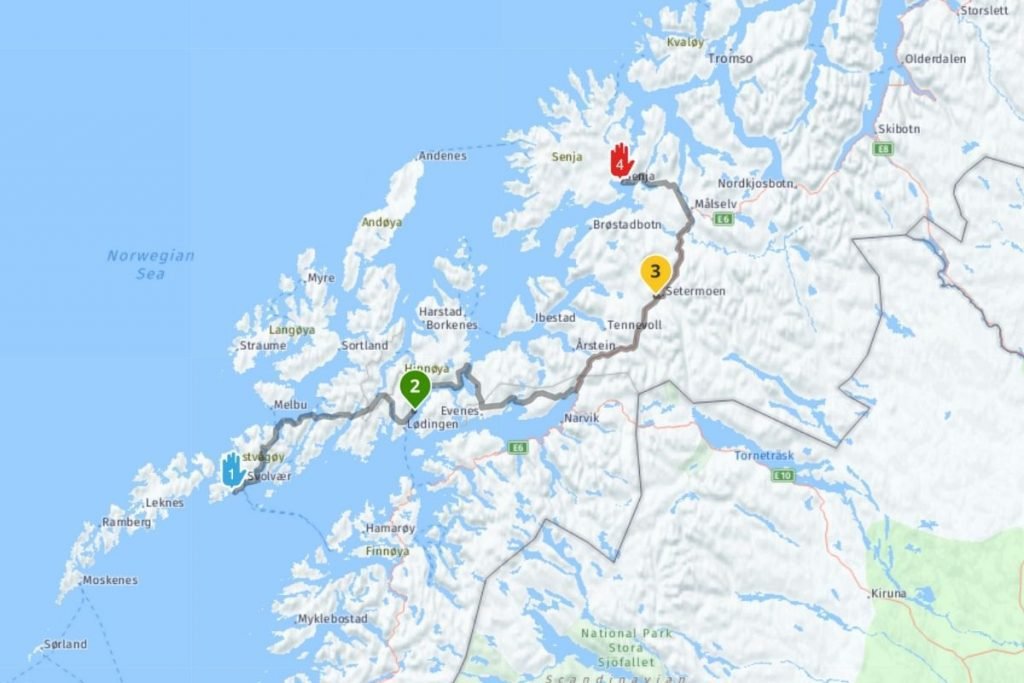
Making Life Easier
As mentioned above, you can also search for a hotel around any given waypoint by accessing Booking.com directly through MRA. You likely don’t always get the best offers. But it’s a super convenient way to find accommodation in your chosen area.
Another feature that makes life easier is the ability to plot routes using the native map of your sat nav. For example, I use a Garmin sat nav. So MRA lets me plot my route using the Here map (the native maps for Garmin.)
If you use a TomTom , then you can plot your route using the native TomTom map.
This is important because if you try importing a route in the wrong format into your sat nav, your unit might change the route to ‘make’ it fit.
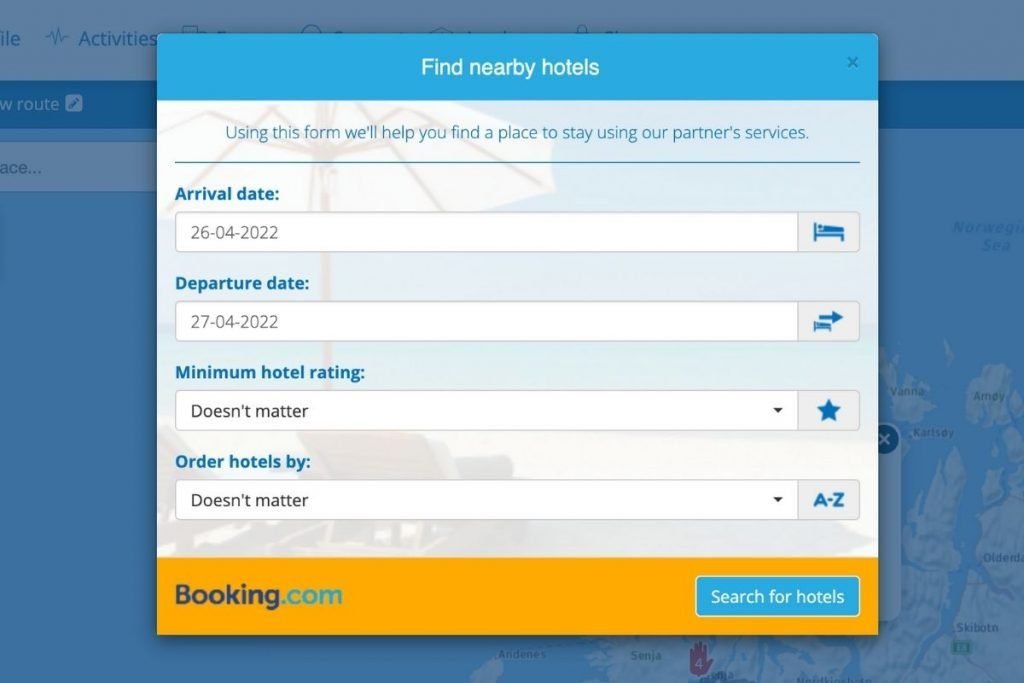
MRA Toolkit
Street View is another function I use a lot. Looking at my route at street level allows me to gauge the road surface and the scenery. And I can also get an idea of what my hotel looks like, which means I can find it easily when I get there!
The ‘Toolkit’ in MRA is incredible. This is where many of your tools live, and they include the option to reverse a route, split a big route into multiple smaller ones, and calculate distances between individual waypoints.
The app is available in free and paid versions on Apple and Android. There is also a web-based version that you can use on your desktop/laptop which makes it a million times easier to plot routes.
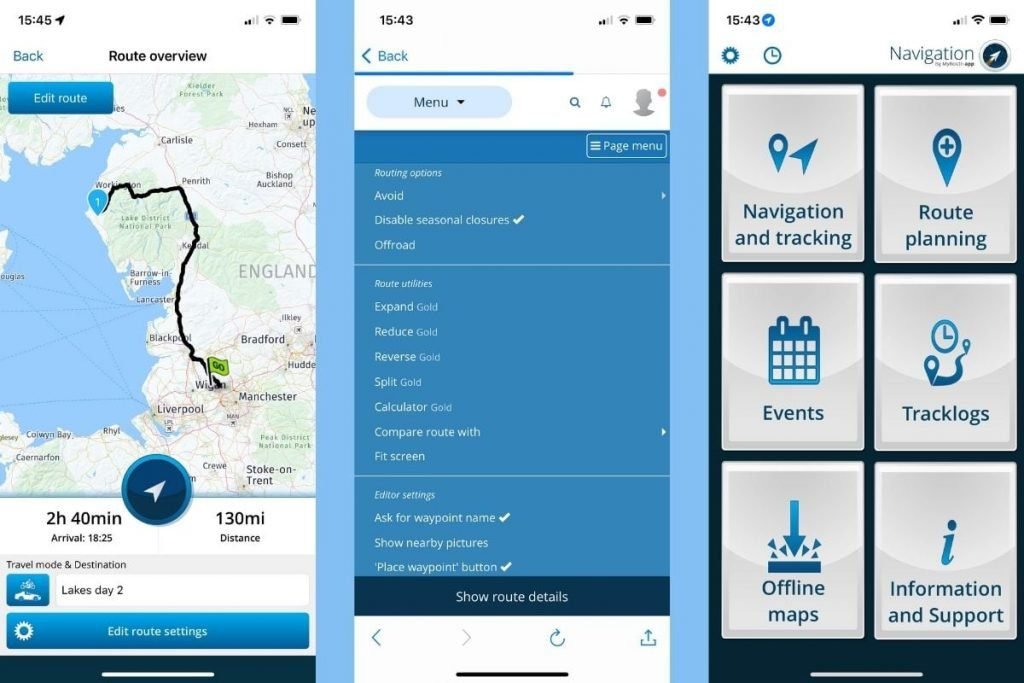
Once saved, your routes are automatically shared across all of your devices.
Finally, MRA now offers their native Navigation app (which you have to pay for separately.) This means you can plot a route in MRA and then immediately run it through the Navigation app, complete with voice-guided navigation.
The Navigation app isn’t quite as sophisticated as Google Maps. But it’s getting better all the time and is certainly sufficient.
For a more in-depth look at the operation of MyRoute-App, check out this post.
- Easy to use
- Useful tools
- Multiple maps
- Multiple download formats
- Voice-guided navigation
- Folders/organisation system
- Separate subscription for Navigation app
- Navigation good but not up to Google standards yet
- Updates & features sometimes slow to arrive
- Pro version: $19.99 (usually $39.99)
- Website: https://www.rever.co/
REVER is one of the most downloaded motorcycle route apps – so that clearly says a lot.
But I hasten to add it’s not for everyone!
See, REVER is one of the new-fangled apps which caters to those who enjoy social media and sharing experiences.
The good thing about this is you can access thousands of pre-planned routes that fellow REVER users have enjoyed and shared – so you can enjoy it too.
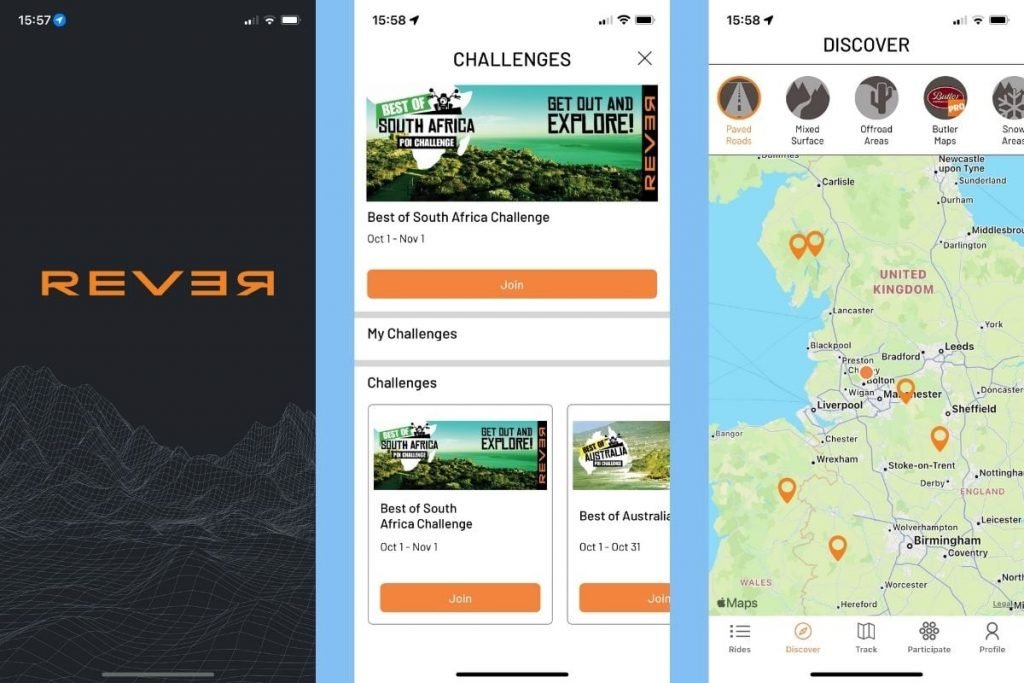
Simply open the map, select the style of ride you want (road, off-road, mixed, or even race tracks), and this motorcycle route planning app will flag up rides in your area.
From here, you can download the route to be used offline or immediately choose to follow it with voice-guided navigation. REVER will even find a way from where you are to the start of the route.
Another nice perk is that you can run your routes through Apple CarPlay.
Once riding, you can choose to record your ride as a track – a track you can share with other people in the community or even download and send to your friends.
REVER 3D Route Viewer
We particularly like the 3D feature, which gives you a sexy 3D overview of your intended route. It doesn’t really provide any real use in the real world, but it’s nice to see and share!
Here is a part of one of our routes in Norway – just by way of example. (Click to view.)
From a safety aspect, REVER is also good if you want to share your location. You can do this within the app so other REVERS can follow along, or you can generate a link and share it with family who can then follow along on your trip.
Similarly, you can turn on safety texts, which automatically send SMS messages to your loved ones with a link to your location.
Personally, I’m a bit of a miserable turd so I don’t have any particular interest in sharing my location or following along on the rides of others. So from this aspect, I find a lot of the features unnecessary.
If you’re the same as me, you’ll likely prefer one of the more traditional route planner apps, such as MyRoute-App or Calimoto.
That said, the premium version of REVER is well-priced and affordable. And it’s a great way to stay social, share your experiences, and gain valuable insights from others.
I can absolutely see why it’s one of the most popular route planning apps.
Currently, you can try the Pro (paid) version of the motorcycle route planning app for 2-weeks with a free trial.
- Social aspect
- Discovery routes
- Route tracking/sharing
- Safety SMS alerts
- Integrated voice-guided navigation
- Works offline
- Integrates with CarPlay
- Awkard to navigate around the app
- Navigation not as good as Google
- Kills your battery
3. Calimoto
- Premium version: €49,99
- Website: https://calimoto.com/en
I must admit, I like Calimoto. It’s been around for a while now without ever competing for attention. Developed for bikers, Calimoto focuses on finding routes that incorporate good riding roads over anything else.
With an emphasis on riding experience, this motorcycle route planning app prioritises twisty routes over the quickest routes. If you’re in a rush, Calimoto isn’t for you. But if you want a nice ride, it’s a good place to start!
That said, many people complained in the past about not having a fastest option. Calimoto has now addressed this issue and the feature is available when route planning.
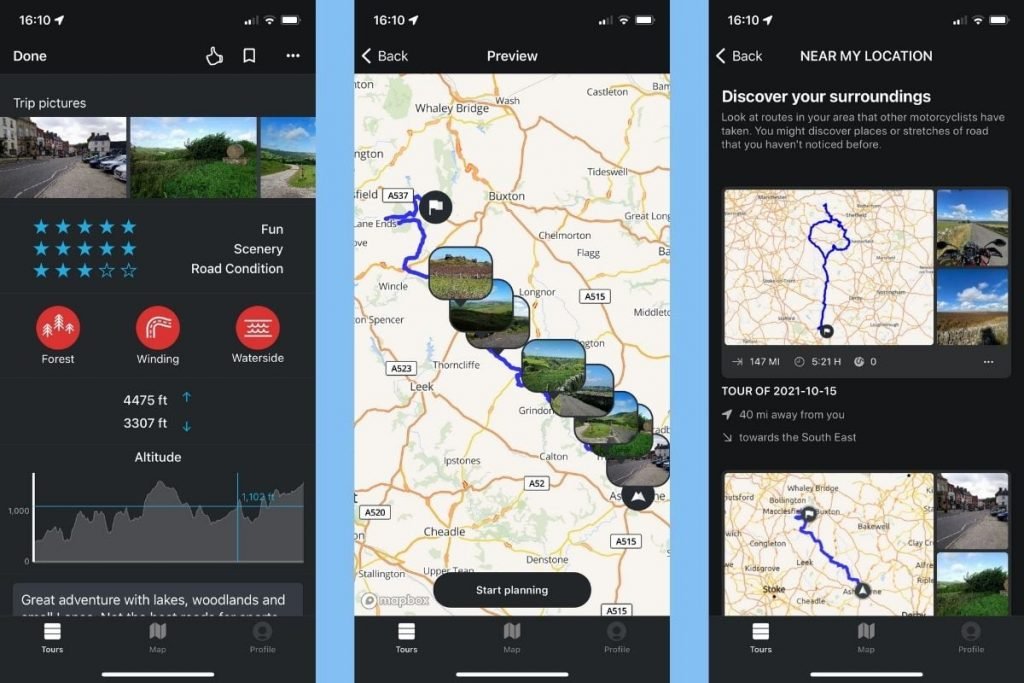
Growing In Community
Over the years, it’s grown more community-based – similar to REVER – with communities you can join within the app.
As mentioned above, this is a great way to find tried-and-tested routes that have been uploaded by fellow members of the Calimoto community.
Simply find a route in your area based on your preferences, click ‘Go’, and Calimoto automatically sets the route up with voice-guided navigation.
Whilst creating a route or roundtrip, you can also view tourist attractions, mountain passes, twisty highlights, biker meets, fuel stations, restaurants, and many others.
As with some other apps on this list, you can record your route as a track and send it to friends.
Another nice touch is the displayed weather forecast on the map.
- Simple interface
- Biker-specific
- Intuitive navigation
- Navigation not as good as Google, but decent enough
- Not great at flagging traffic or roadworks
- Re-routing can be hit-and-miss
4. Best Biking Roads (And BBR Lite)
- Premium version: $3.99
- Website: https://www.bestbikingroads.com/
For years, Best Biking Roads has been one of my go-to route planning apps. Unlike others that have continually updated to keep up with the trends, BBR hasn’t bothered. It just does its thing quietly in the corner.
And whilst it might not be the most up-to-date or modern motorcycle route planning app, it does what it says on the tin – it shows you the best biking roads in any given area. Clear and simple.
It doesn’t offer navigation or social sharing features. But it does offer recommended routes across the planet that, in my experience, have relevant and honest reviews.
BBR works on a star-rating system – not only for the overall route but for individual elements within the route.
For example, each route takes into account the following and applies a star rating to each of them:
- Road surface
- Police presence
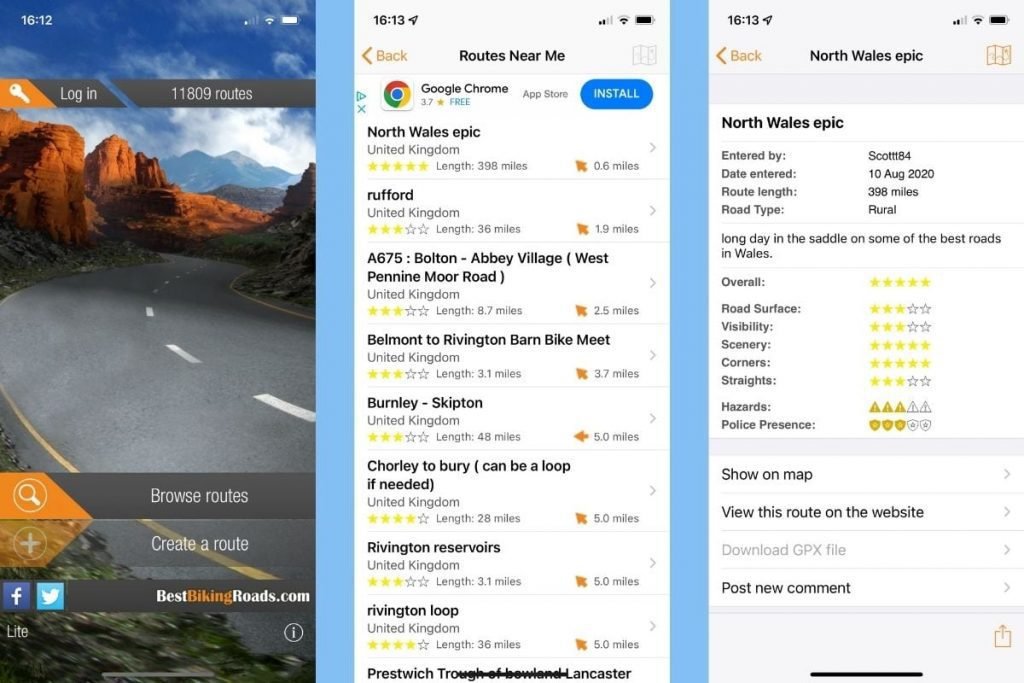
For each route, you can choose to see a map of it. If you have the premium version of BBR Lite, you can then download a GPX version of the route that you can export into your sat nav of choice.
Whilst I use the desktop version of BBR almost every time I plan a tour, I rarely use the app. I just find it easier to see and navigate.
The other thing to remember with Best Biking Roads is that whilst it caters to roundtrip and full tours, it’s more about individual roads.
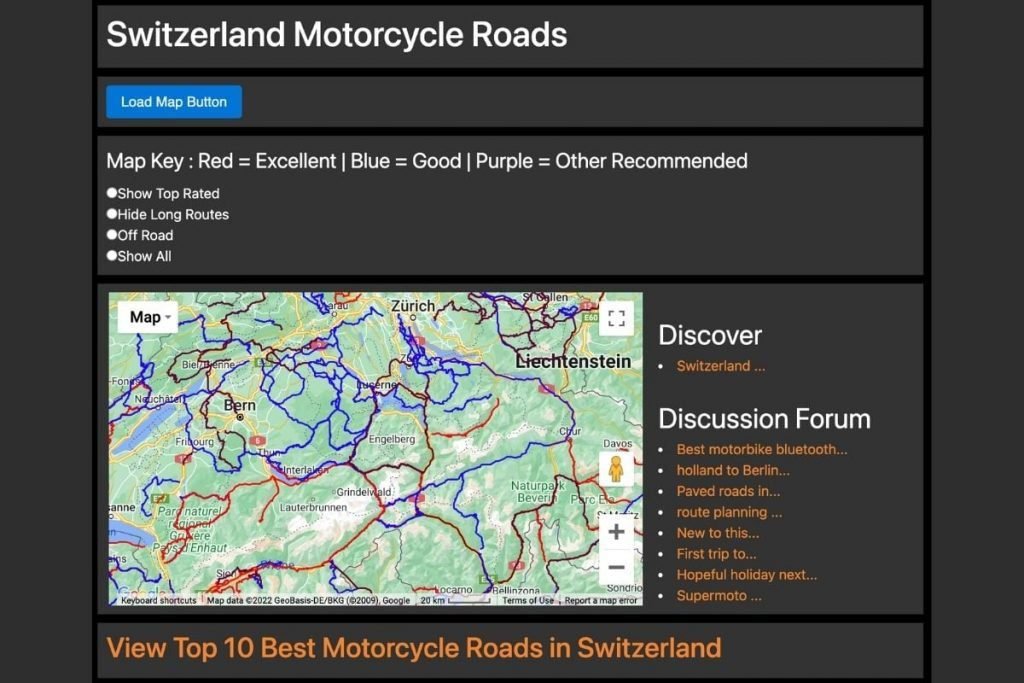
For example, if I pull up a map of the Alps, it shows me roads in three different colours: Red, blue, and purple. The red roads are rated as excellent, the blue as good, and the purple roads as recommended.
I don’t download them or try to import them into my sat nav – I simply take the ones I want and incorporate them into my route on MyRoute-App.
All-in-all, BBR is a salt-of-the-earth website and motorcycle route planning app. It’s an underdog in a world full of bells and whistles. But it’s a diamond in the rough and one of my all-time favourites.
- As simple as it gets
- Great star rating system
- Ratings for individual ride elements
- Good community sharing
- Can’t download roads/routes without Premium
- Can be fiddly when zooming
- Easier to use on desktop
- Premium version: $29.99
- Website: https://osmand.net/
OsmAnd is quite a powerful motorcycle route planning app because it works entirely offline. Upon set-up, the app asks which region you would like to download – but you can download multiple maps depending on where you are going.
For preparing a standard tour on tarmac, OsmAnd probably wouldn’t be my first choice. But if I was going on an off-road adventure where phone signal and internet would be non-existent, I would absolutely have it on my phone.
One of the things that makes OsmAnd so powerful is its partnerships with OpenStreetMaps and Wikipedia: OpenStreetMaps for worldwide mapping and Wiki for points of interest.
The voice-guided navigation is feature-rich and includes lots of data – such as announcements when approaching stop signs or pedestrian crossings, speed limit warnings, and lane guidance.
It also offers street names as part of its navigation – which is a great help.
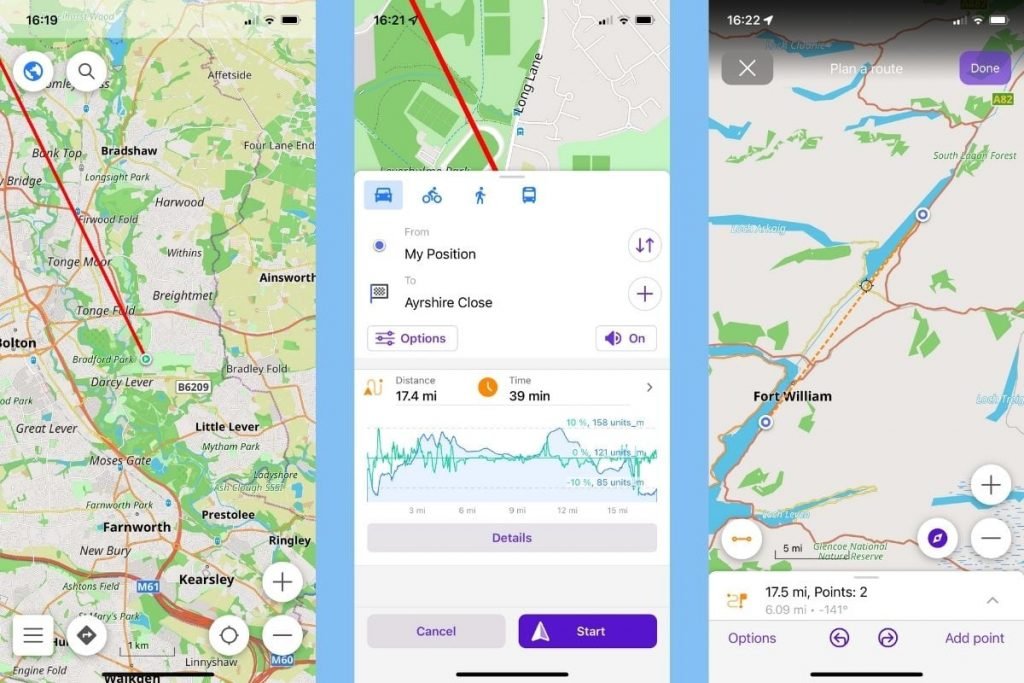
If you plan on partaking in other activities off the bike (such as hiking or cycling), OsmAnd is a great option for you to consider. The detailed offline maps show hiking trails, cycle routes, footpaths, and even public transport stops.
Overall, the app has a proper navigational feel to it (like Ordnance Survey maps or traditional Garmin maps.) As a result, it takes some getting used to.
But learn how to use it properly, and OsmAnd is one of the most powerful apps on this list.
And it’s cheap, too. At £8.49 a year, it’s almost worth having just in case!
- Unlimited map downloads
- Constant updates
- Feature-rich navigation
- Can be used off the bike
- Not beginner-friendly
- Fiddly to use
- Difficult to fine-tune routes
- Website: https://maps.me/
Maps.me is one of the best offline route planners on the market today – even if it isn’t the easiest to get your head around at first.
Upon downloading, the app will download a map of the area you’re in. You can download subsequent maps by zooming in on the area – the app will ask if you want to download it.
You can download as many maps as you wish, and they’re usually pretty small in terms of download size – so won’t take up too much space on your phone.
For me, Maps.me works best when you take the time to set it up before you leave. You’ll need an internet connection or WiFi to download the maps, so doing this in advance pays dividends.
The same goes for putting POIs on the map – such as pre-planned accommodation details or places you want to visit when you get there.

Working Offline
Once it’s all on there, the app works completely offline. And this is great when touring in places where signal and data are hard to come by.
Even though it works offline, you can still search and navigate to various POIs, including hotels, restaurants and fuel stations. You can even see reviews via the app.
As with OsmAnd, Maps.me works really well if you want a day off the bike. Bringing up hiking and walking trails that even Google Maps doesn’t know about, you can navigate to and from your accommodation, knowing you won’t get lost! In that sense, it’s quite similar to the Strava route planner .
One of the biggest negatives I found with Maps.me is its lack of route customisation. For example, in more typical route planning apps, you have the option to avoid toll roads, motorways, or gravel paths.
In Maps.me, you can’t alter such settings – which sometimes leads you onto roads you otherwise wanted to avoid.
- Easy map downloads
- All your POIs in one place
- Reviews/POIs even offline
- Route customisation
- Route timings are never accurate
- Mobile interface is awkward
- CrashLight (optional): $14.99
- Website: https://eatsleepride.com/
As with REVER, Eat Sleep Ride is a social-inspired motorcycle route planning app rather than solely a route planning one per se. The aim is to record (or track) your ride and then upload it as a story for others to read.
Like many of the apps on this list, there is an in-app community. And many of the members record, upload and share their rides so that other people in the community can enjoy them too.
One of the biggest factors of ESR is that it’s a biker-inspired motorcycle route planning app first and foremost – rather than a navigational app that has simply been adapted for bikers.

Whilst I can live without all the story sharing and community-inspired waffle, I like that ESR has a group ride feature.
As long as all riders in the group are on ESR, you can all share your location within the group. This means that you can see where all the other riders are in your group – even if you’ve got split up.
This makes it really easy to keep tabs on everybody – and see when you’ve lost someone!
ESR is also the only motorcycle route planning app on this list which has the optional extra of adding CrashLight . Made for bikers, CrashLight detects accidents and immediately notifies people on your ICE list.
CrashLight is usually £14.99 per year – although I have just downloaded ESR on my new phone and was given CrashLight for free.
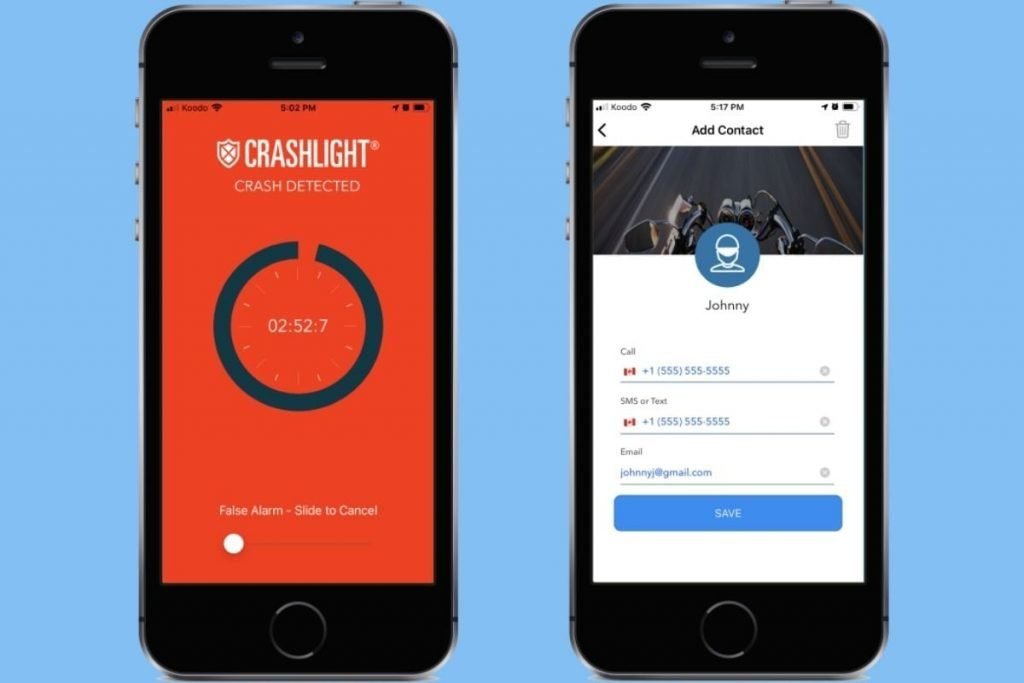
- Group ride feature
- Optional CrashLight
- CrashLight can be buggy
- Tracking often stops mid-ride
- Pro version: $29.99 (usually $59.99)
- Website: https://riserapp.com/en/
RISER is a mixture of route planner, navigation, and social. With integrated voice-guided navigation, you can plan, record and ride your route – all in one go.
And as with the other social-inspired apps, you can upload your route so riders in your community to ride it themselves.
Upon opening this motorcycle route planning app, you’re greeted with your feed – showing recent rides by people in your community and new challenges you can join.
Each of the rides includes details such as total distance, duration, elevation, average speed, top speed (which you can hide), and a little write-up by the author.
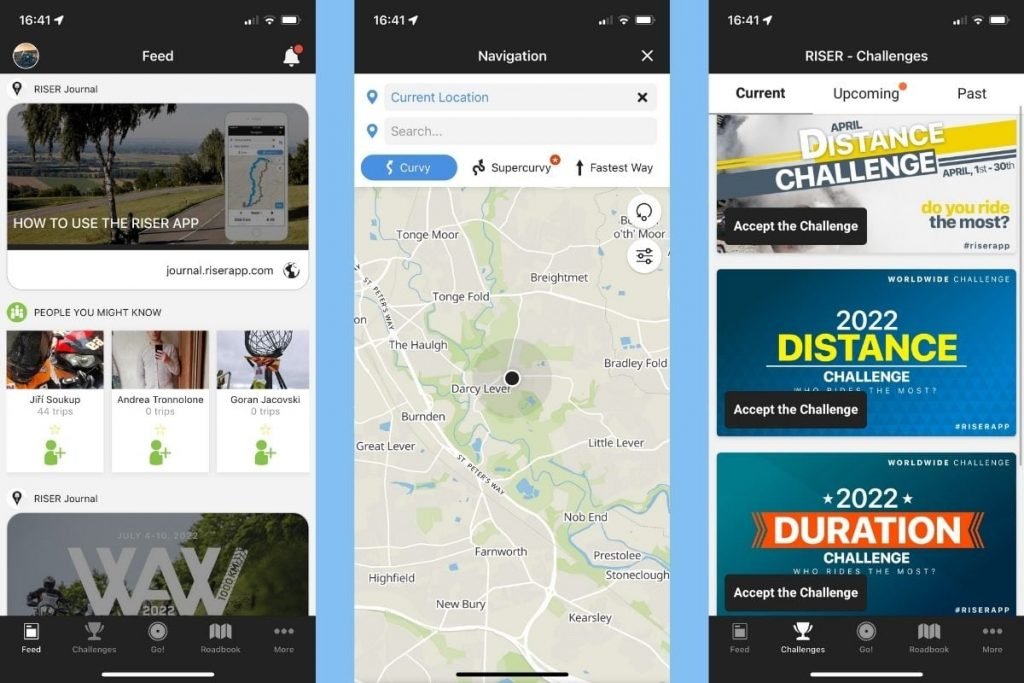
From here, you can save the route into your own Roadbook and ride it in your own time.
When creating your own routes, simply input your start and end details, and the app will let you select a route that is either curvy, super curvy, or fastest.
As with the ESR app above, you have the option in RISER to set up a Pack Ride. People within 150m of you can join the ride, and you can view all riders on the map on your phone.
The group is notified when a fellow rider takes a wrong turn or falls behind.
Taking it a step further, RISER has integrated automated messages within the Pack Rides. So if you need a toilet break or some fuel, simply tap the relevant button, and everybody in the pack is alerted.
Very nifty!
- Ride metrics
- Pack ride feature
- Pack ride alerts
- Limited avoidances
- Not a huge library of rides in the UK
- Can be fiddly to start rides from Roadbook
- Website: https://www.theaa.com/apps
Whilst AA Route Planner isn’t made for motorcycle trips, it’s useful to have on your phone – especially if you have AA breakdown cover.
Not only does it allow the dispatchers to see exactly where you are in the event of a breakdown , but the route planner section offers up some decent information, too.
The app doesn’t have integrated navigation, but once you plot a route, the app gives you the option of running it via one of the other apps on your phone. In my case, Google Maps, Apple Maps, or Waze.
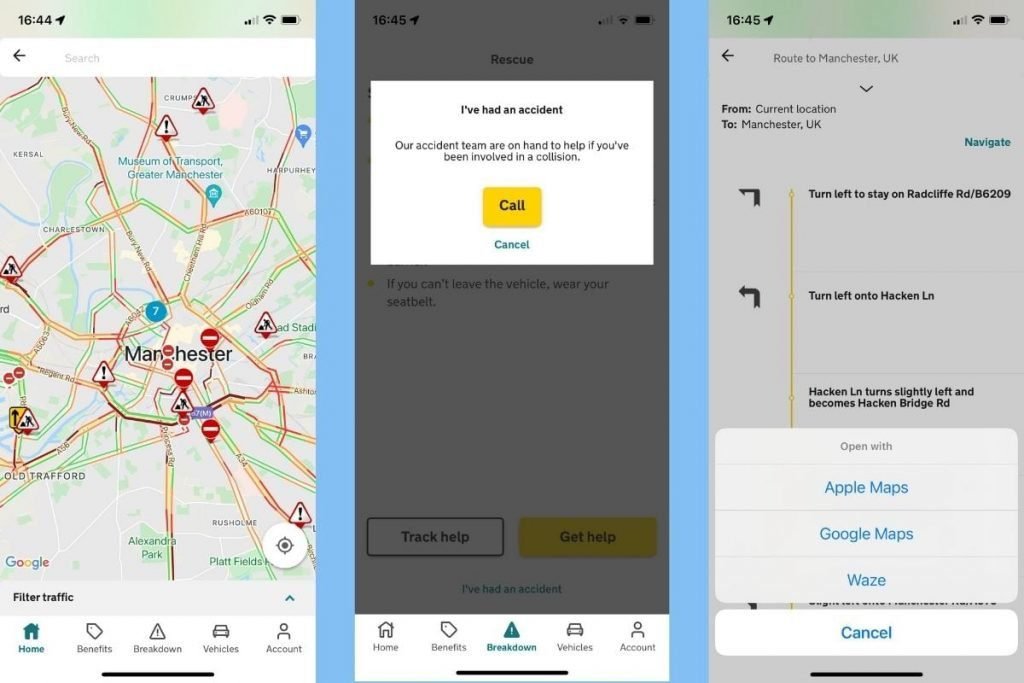
But the thing I like about AA Route Planner is the information it provides. In my experience, the live traffic updates are accurate, and you can see at a glance if there are roadworks on your planned journey.
Once you’ve plotted your route based on traffic and roadwork avoidances, click navigate, and run the route via your desired navigational app.
As mentioned, the AA Route Planner doesn’t compete with the other apps on this list in terms of pure navigation. But for route information – and breakdown cover – it makes perfect sense to have it on your phone!
- Excellent live traffic
- Accurate at identifying roadworks
- Links with your breakdown policy
- No native voice-guided navigation
- No biker-specific options
- Website: https://www.google.co.uk/maps/
Speaking of Google, is it possible to make a motorcycle route on Google Maps?
Yes, it is! Admittedly, it isn’t necessarily made for touring purposes, but it could be used as a route planner if needed.
The good thing about Google Maps route planner is that it’s a staple for most of us these days. We all use it all the time and we’re familiar with it. We know exactly where everything is.
And the level of global coverage offered by Google Maps is unrivalled.
Quite literally, no other company on the planet can offer that much data in one little app that’s natively on your smartphone. And in terms of a free route planner, it’s probably the most comprehensive app you can download.
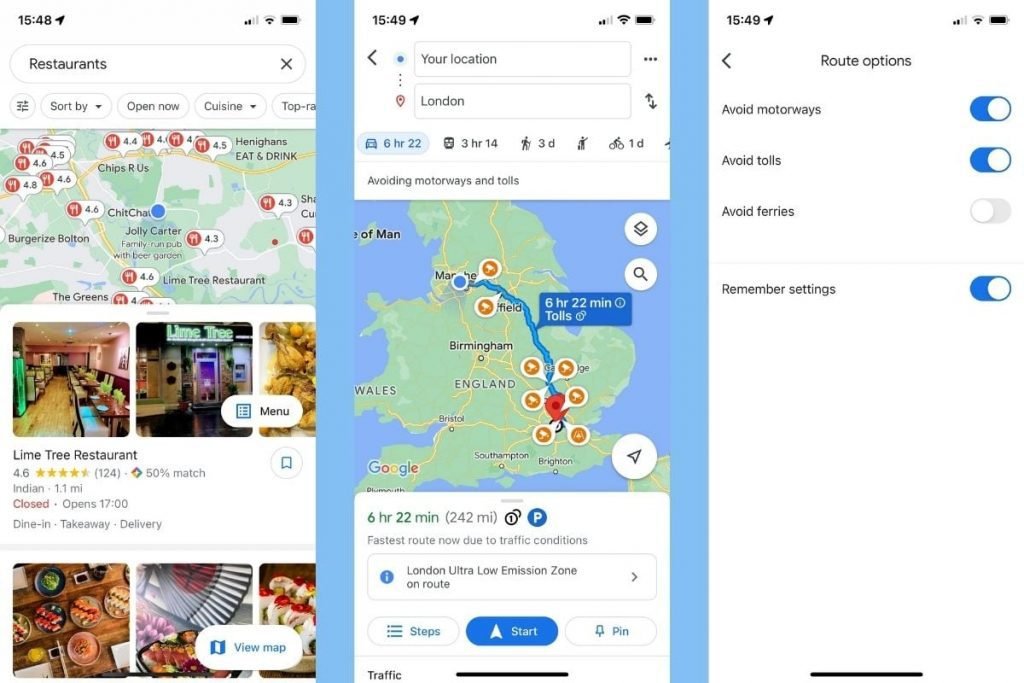
Positives & Negatives Of Google Maps
With many newer bikes such as the Honda NT1100 now employing Apple CarPlay, you can easily plot your route on Google Maps and then use the navigation through CarPlay on your dash. It’s the perfect set-up.
On the positive side, Google Maps is incredibly useful for finding things en route – for example, fuel stations, restaurants, cash machines, and almost anything else you need.
The voice-guided navigation is familiar, clear, and customisable. And you’ll also get speed camera warnings, live traffic updates, and automatic re-routing if you miss a turn.

You can also download maps to use offline. So you could download the map of your intended location and then continue to use it for navigation even if you lose your phone signal.
It’s not all great, though. For example, whilst you can plot a comprehensive route using Google My Maps, you can’t then follow that route in the Google Maps app.
Nobody is too sure why. People have been asking Google to sort it out for years, but, for whatever reason, they won’t do it.
If you want to follow a route with guidance, you need to plot the route directly in the Google Maps app. And the problem with this is that Google will only allow you to plot 9 waypoints per route.
This is fine if for a short trip. But if you’re doing a 350-mile day, 9 waypoints is nowhere enough to keep the route true.
Finally, you have to consider the toll that long-term use takes on your smartphone. It will completely decimate your battery if it isn’t constantly plugged into a power sauce.
And if you intend to use it all day, there will come a point where it gets too hot and shuts down.
- Easy to get (usually native)
- Useful POIs & reviews
- The best navigation available
- Live traffic & re-routing
- Only 9 waypoints per route
- No biker-specific routing options
- Inability to run pre-set routes from Google My Maps
There’s no one-size-fits-all when it comes to planning the perfect motorcycle tour. And there’s no one motorcycle route planning app that will work perfectly for everybody, either.
Over the years, my experiences with route planning have taught me the importance of prioritisation. Take a minute to note down the roads you want to ride along with the POIs you want to visit. Once plotted on a map, these form the basis of your tour.
From here, it’s a case of filling in the gaps between the waypoints.
In my experience, the best way to do this is by finding recommended roads on Best Biking Roads and adding them to my route on MyRoute-App.
The other thing that helped me form better routes was attention to detail. Finding (and plotting) fuel stations in advance meant that I never again had to worry about fuel. Building them into your route from the start makes life a whole lot easier!
Apps that allow you to colour code waypoints are also a great help – allowing you to see what’s up ahead in a glance.
Ultimately, whatever motorcycle route planning app you choose, you will always have to make compromises. Download as many as you can, give them a go using the free trials and make a few test routes.
The one that has the most features you require and puts it all into a package that is intuitive (for you) is the one you’ll likely be happiest with!
Top image: ArtHouse Studio
How To Keep Your Gear Dry On A Motorcycle Tour
Voile straps: a motorcycle touring godsend, 3 thoughts on “our top motorcycle route planning app comparison”.
I really like the comparison of motorcycle route planning apps! It’s helpful to have a variety of options to choose from.
Very informative, thank you! Have you given Scenic a try? What kept it off your list?
Hi Tim, and thanks for your comment! I haven’t tried Scenic actually… I’ll give it a try. Have you had good experiences with it?
Comments are closed.
About - Contact - Editorial Guidelines - Terms and Conditions - Privacy Policy
Enter your email below to receive occasional updates in your inbox.
- < Back to email setting
Motorcycle Road Trip Planning Checklist
There’s no denying motorcycle road trips can be a fun-filled adventure. But for motorcyclists, road tripping is not as simple as gassing up the car and heading off to your destination. There’s also a big difference between motorcycling along a local highway on a Sunday afternoon and traversing hundreds of miles on a cross-state journey.
First-time road trips on a motorcycle can be an initiation into new rigors. In a poll of American Motorcyclist Association staff members, some respondents said learning the best ways to approach a long tour can take years of trial and error. AMA staffers offer a range of insider tips, such as “carry a backpack hydration system so you can drink while you ride” and “a nap can do wonders on a long day.”
Without the luxury of space, packing what you need for a trip on your bike can be even more challenging. We compiled a list of motorcycle trip planning essentials from experienced riders and the Harley Davidson website .
So, before you head on down the highway, here are 26 things you should consider:
1. Watch out for fatigue
Safety is, of course, a big issue, with fatigue a major factor in accidents. According to rider information published by the Alaska Department of Motor Vehicles, “Riding a motorcycle is much more tiring than driving a car. When you plan a long trip, bear in mind that you’ll tire much sooner than you would in a car.”
With enough planning and preparation, while staying mindful of what is potentially in store during your daily rides, your trip can be a safe and enjoyable experience filled with all the reasons you ride in the first place. Make sure to follow motorcycle safety tips so you can stay alert.
2. Take practice rides
The road can seem never-ending when you’re on a long trip. Six hours on a bike may be doable for the experienced road-tripper, but if your previous record is two hours that extra four can seem like a marathon. Get accustomed to longer periods on a bike by taking practice rides beforehand to help you acclimate to long-distance riding.
Practice runs will make you realize the importance of getting comfortable in your seat. Once you’re on the road and moving, you don’t have the luxury of changing positions as you would in a desk chair or car seat. The standard seat that came with your motorcycle may not be the best for long-term sitting. Consider changing your seat before the trip for a more comfortable model. You can also adjust your handlebars and add a back rest and foot pegs, which will help reduce the likelihood of an achy back and stiff limbs.
3. Invest in a good windshield
If you don’t have one already, consider installing a windshield. The feel of the wind may be one of the pleasures of the open road, but riding for several hours at a stretch at 60 to 70 miles per hour can tire you out. With a good windshield, you won’t have to constantly fight the wind, helping you save your strength to keep moving comfortably down the road.
Even with a windshield and helmet, your eyes can dry out and get irritated by all the dust and dirt flying through the air. So carry eye drops and use them liberally.
4. Take breaks
Make sure to take plenty of breaks. Rest your back, stretch your legs and drink water to keep your reaction times sharper. Know your limits, and be proactive by stopping every 60 to 100 miles .
5. Check your bike
First and foremost, make sure everything on your bike is in 100% working order. It’s wise to have it serviced before you leave – fluids changed, valves calibrated, fuel system cleaned, electrical system checked, bulbs changed and tires checked.
6. Stay on the road with a tire plug kit
Carry a tire-plug kit with a CO2 tire-inflation system or a small pump.
7. Stick to your route with a GPS
Bring a portable GPS system or a map so you can stay on your planned motorcycle route.
8. Practice motorcycle safety: Wear a helmet
When riding, always wear protective motorcycle gear and a full-face helmet for accident and weather protection.
9. Protect your ears with earplugs
Custom earplugs can minimize wind noise and protect your ears.
10. Protect your hands by bringing an extra gloves
It’s wise to bring an extra pair of gloves (summer or winter depending on the season and a waterproof pair) in case your primary pair rips or gets lost.
11. Pack the proper footwear
Make sure you have your riding boots, plus overboots or rain gaiters in case of bad weather.
12. Cool down in warm weather with a neck wrap
If you’re going on a summer road trip, a cooling neck wrap can make riding in scorching temperatures much more comfortable.
13. Keep warm with a heated riding suit
For those who enjoy a winter motorcycle ride, a heated riding suit can help you stay warm and toasty on the road.
14. Stay dry with rain gear
Don’t get caught in the elements without the proper gear. From a rain jacket and rain pants, don’t forget to bring your weather-proof gear along.
15. Protect your eyes with sunglasses or goggles
It’s important to have protective eyewear while you’re out on the road, including sunglasses and rain/night goggles.
16. Keep your luggage dry
If you expect to see rain, waterproof gear isn’t the only thing to worry about. Make sure your belongings stay dry with waterproof luggage.
17. Secure your belongings with bungee cords
Loose baggage on the road can be a motorcyclist’s worst nightmare. Bring along bungee cords and nets to secure luggage and loose items.
18. Bring your backpack or travel bag
Backpacks and fanny packs that allow easy access to necessities (cell phone, map, glasses, etc.) can be a lifesaver on the road.
19. Don’t forget your important documents
Keep your necessary documents, including your ID, insurance and roadside assistance information, in a secure place safe from the elements.
20. Keep your belonging dry with waterproof bags
If you aren’t bringing luggage, at least have trash or zip-top bags to keep items dry.
21. Protect your bike with a motorcycle cover
If you’re planning an overnight trip or an extended stop, bring your motorcycle cover to keep your bike pristine.
22. Bring some essential bike tools
If you know your way around a motorcycle, wrenches, sockets and other tools specific to your bike can help out in a pinch.
23. Don’t forget the miscellaneous tools
Tools such as air pumps, flashlights or headlamps, hazard lights, cable ties, duct tape, Swiss Army knife and more can be helpful on a road trip.
24. Bring a first aid kit
It’s always a good idea to carry a basic first aid kit that can help tend to minor injuries.
25. Pack plenty of water
Staying hydrated on the road is important. Bring at least 2 gallons of water so you never get thirsty.
26. Wear winter motorcycle gear for cold weather trips
Wearing the proper clothing can make all the difference in staying warm throughout the winter, and that is particularly true when you’re on a bike. A full-head helmet, warm gloves, riding boots, base layers, and heated gear are some of the things you should have on your list.
These items are important to pack, but completing an approved safety course can prepare you for a long road trip on your bike and could save you money on your motorcycle insurance policy .
Also, make sure you consider the distance. If you find yourself on a scenic two-lane highway, 150 miles may be all you need to accomplish for the day. You don’t want to turn your trip into an endurance test. Part of the point of a road trip is to stop and enjoy the scenery and the people you meet along the way.
- Motorcycles
- motorcycle checklist
- motorcycle road trip
- motorcycle travel
Related articles
8 tailgating safety tips for your pre-game fun.
One of the best parts about fall is the pre-game tailgate party where you can celebrate and cheer on your favorite sports team. It’s a long-standing tradition that keeps growing...
Deck vs. Patio: Which Is Right for You?
Want an outdoor space to entertain friends and family when the nicer weather comes? Before starting construction, you may want to consider whether a deck or patio is best for...
Trailer Towing Tips: How to Prevent Trailer Sway
There are few things more frightening while towing your recreational vehicle than trailer sway. A sudden gust, a passing 18-wheeler or a quick steering correction can start your trailer swaying...
The ultimate guide to riding Route 66 on a motorcycle
There's arguably no more iconic American road trip than the Mother Road—here’s how to travel it on two wheels
By Roadtrippers
If your idea of a perfect motorcycle road trip involves scenic, winding roads far away from people, cities, and cars, Route 66 might not be for you. But if you’re a fan of American history, kitschy roadside attractions, classic neon signs, mid-century architecture, Indigenous heritage and culture, and talking to friendly locals, there is arguably no better road trip in the world than driving the Mother Road.
And if you ask me, the best way to experience it is by motorcycle.
Last year, Roadtrippers published Route 66: Chicago to Santa Monica , and I immediately jumped on the chance to take the book out for a proper test run. This past October, I spent 7 days riding Route 66 from Illinois to California. Here’s what I learned along the way.

Roadtrippers Route 66: Chicago to Santa Monica
What is route 66 .
Stretching 2,448 miles (3,940 kilometers) from Chicago in the east to Santa Monica in the west, Route 66 crosses through eight states and offers a near-perfect snapshot of the U.S.—from bustling cities to crumbling ghost towns. The original road was established in 1926, and during its mid-century heyday, small towns went all in on capturing the tourism that came along with the highway’s rise in popularity. Roadside attractions, diners, and motels sprang up along the route, many of which are still standing today. But as more and more sections of the original route were bypassed by interstate, other towns and destinations weren’t so lucky, and fell into disrepair or disappeared entirely.
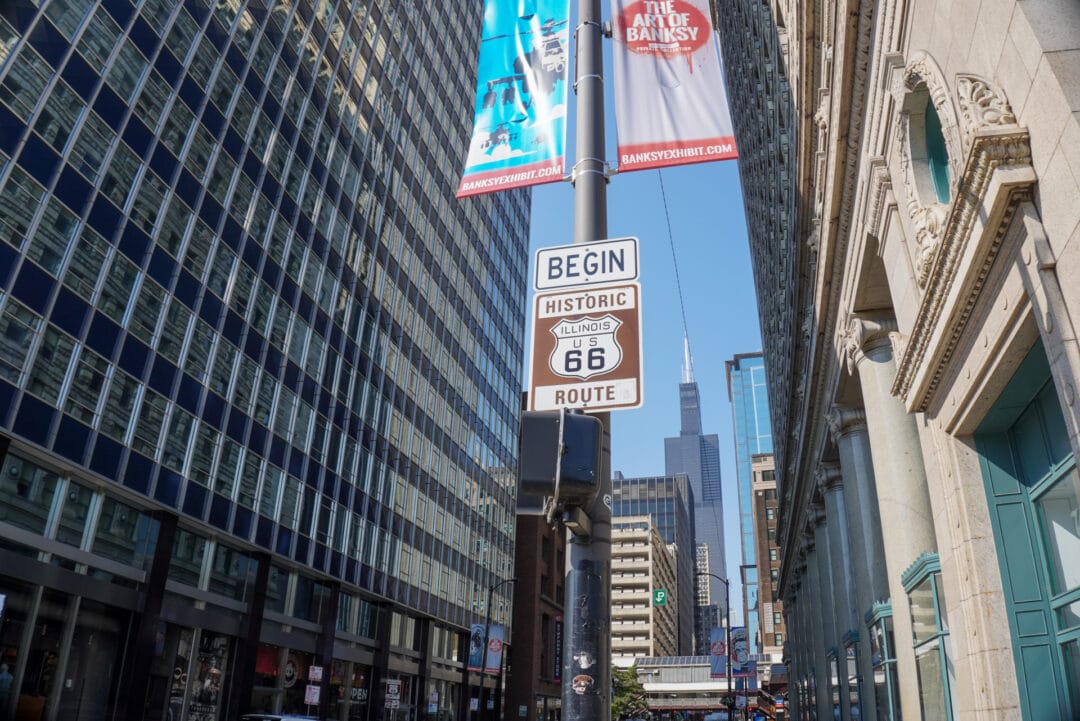
Route 66 was officially decommissioned in 1985, but it has seen a revival in the last few decades. According to Rhys Martin, president of the Oklahoma Route 66 Association, a lot of the buzz can be attributed to Pixar’s 2006 movie Cars .
“The figure that’s quoted is that the businesses along the route saw a 30 percent jump just from the movie,” he says. “And as those kids grow up and introduce their own kids to Cars , that’s getting them interested in the history and the story. And now, just from a greater cultural standpoint, you have people who are more interested in authentic experiences.”
And despite the occasional tourist trap, you’d be hard pressed to find a more authentic road trip experience than Route 66.
Related: The Roadtrippers guide to Route 66
What to ride on a route 66 motorcycle road trip.
When I first started planning my trip, I knew that I wanted to do it on a Harley-Davidson motorcycle. I’d conjured up images of cruising down the highway on a chromed-out machine that, in many people’s minds, occupies the same cultural space as the Mother Road itself: a bit dated, perhaps, but still undeniably American.
Instead of a classic cruiser, I got the opportunity to ride Harley-Davidson’s new adventure motorcycle, the Pan America . Comfortable, fast, and able to go anywhere, it ended up being the perfect choice for the trip. And I couldn’t help but appreciate the juxtaposition between riding a new generation of Harley on the most classic American road.
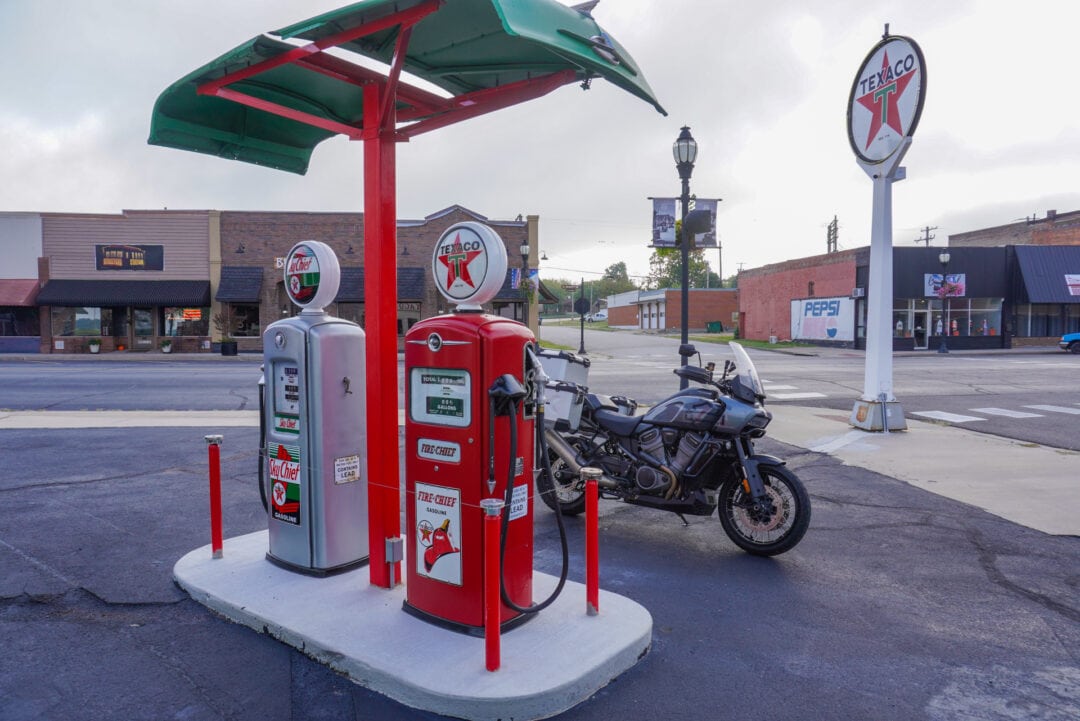
For those not bringing their own motorcycle, the easiest choice is to rent a bike. Motorcycle rental company EagleRider has locations in both Chicago and Los Angeles, and the option of a one-way rental is available for an additional fee. EagleRider also offers guided and self-guided Route 66 tours. The 15-day self-guided tour package starts at about $2,500—however, it is entirely possible to ride all of Route 66 in 7 to 10 days, as long as you’re comfortable riding a few hundred miles per day.
If you’re able to pick up and drop off the bike in the same location, you’re going to have a lot more options. Peer-to-peer rental platforms such as Riders Share and Twisted Road generally offer a wider range of models at a lower price point than traditional rental companies. I’ve also heard of people purchasing a used motorcycle at the start of the route and selling it after they reach the end—but that involves a lot more risk, money, and paperwork than most people are going to be comfortable with.
What to pack for a Route 66 motorcycle road trip
No matter what bike you end up with, make sure it’s comfortable enough to ride long distances on, and that it has space to carry all your gear. Since Route 66 crosses through multiple states with widely varying climates, you’ll want to make sure you pack for all-weather travel.
Traveling on a motorcycle means always being exposed to the elements, with very little protection beyond what you’re wearing. Depending on the time of year you travel Route 66, you may hit everything from scorching heat to snowstorms (in fact, you’re likely to encounter both some of the hottest and coldest days of your journey just within the state of Arizona).
The best way to handle extreme weather on a motorcycle is to bring layers. Make sure you pack both warm and cool base layers, protective gear (built-in armor and abrasion-resistant fabrics are highly recommended), and rain gear. For next-level comfort in the cold, I recommend investing in heated gear.
Route 66 runs through multiple large or mid-sized cities, and you’re never far from restaurants or gas stations. That said, it’s always a good idea to carry water and snacks on your bike in case of an emergency. A basic toolkit can also be a lifesaver in unexpected situations. A lot can happen in 2,400 miles—parts rattle loose, tires wear out, and oil may need to be refilled. Make sure you carry tools that fit your specific bike, and regularly check things like brakes, fluid levels, tire pressure, lights, and bolts.
Related: How to prepare for a motorcycle road trip
State-by-state itinerary.
Original route mileage: 301 miles (484 kilometers) Must-see highlights: Start of Route 66 sign, Gemini Giant, Illinois Route 66 Hall of Fame and Museum, Bunyon with a Hot Dog, Pink Elephant Antiques, World’s Largest Catsup Bottle
Route 66 starts in downtown Chicago. Anyone who’s ridden a motorcycle here, or in any major metropolitan downtown area, knows it’s not necessarily the most enjoyable experience; navigating around traffic, pedestrians, and one-way streets is a far cry from the open road. But it’s definitely still worth kicking off the trip with a photo in front of one of the Historic Route 66 “Begin” signs located along East Adams Street. One is on the north side of the street near Michigan Avenue and another on the south side, in a small park near Wabash Avenue. I was able to easily find motorcycle parking just in front of the Wabash Avenue sign.
If you’re already hungry, consider grabbing a donut hole from Lou Mitchell’s Restaurant & Bakery , or stop at Dell Rhea’s Chicken Basket just outside of the city for one of the most classic Route 66 dining experiences. Just a heads up: You’ll likely be eating a lot of greasy American cuisine over the next few days, so pace yourself.
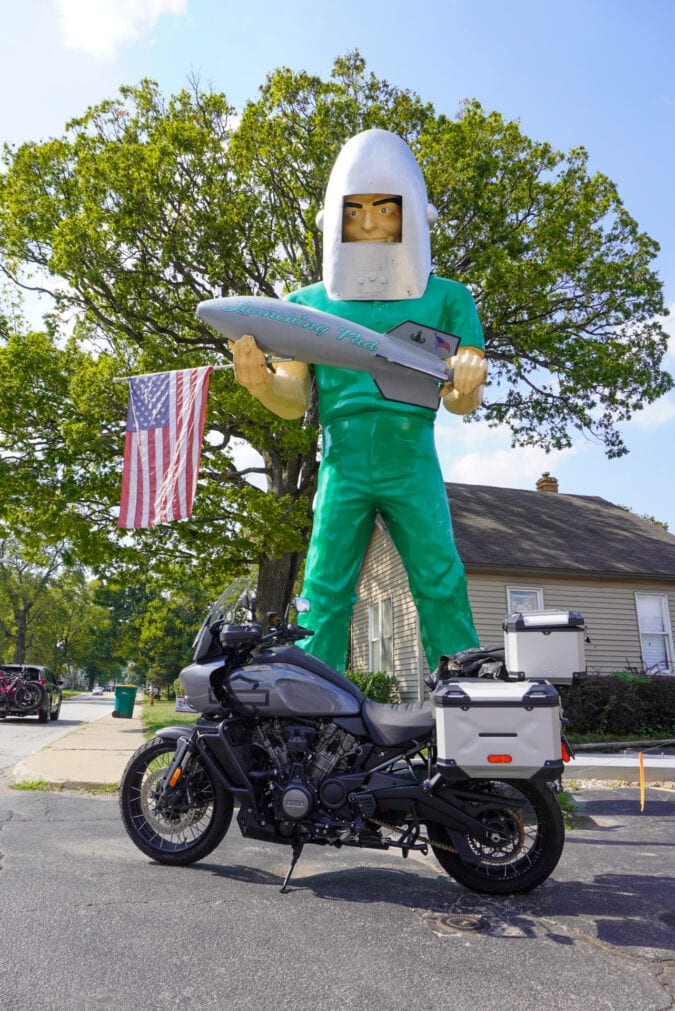
Continuing on the greasy food theme, a favorite stop for bikers is the Launching Pad diner, a Route 66 staple in Wilmington, Illinois. The parking lot is typically packed with motorcycles and vintage cars, and the Gemini Giant Muffler Man makes for a great photo op. There’s also a gas station conveniently located across the street. I ended up spending more than an hour here talking to other motorcyclists who wanted to hear about my bike—the Pan America is still so new that seeing one out in the wild is a novelty, and I was more than happy to sing its praises. It was a good reminder: Motorcyclists love to talk about motorcycles, so make sure to factor in extra time for chit chat during gas stops.
About 100 miles southwest of Wilmington is Atlanta, another small town packed with Route 66 attractions. Don’t miss the Bunyon with a Hot Dog Muffler Man or the Route 66 Arcade Museum , both located on the same block of Arch Street in downtown.
After a long first day on the road, I rolled into St. Louis, Missouri, just as the sun was starting to set. I took a slight detour on the way to my hotel to check out Gateway Arch National Park , which was beautiful at sunset.
Related: A resurrected Route 66 diner serves up hot fudge sundaes with a side of grief counseling
Original route mileage: 317 miles (510 kilometers) Must-see highlights: Gateway Arch National Park, Murals of Cuba, World’s Second Largest Rocking Chair, Uranus Fudge Factory, Gary’s Gay Parita, Red Oak II
My first stop after leaving St. Louis was at the Route 66 State Park visitor center, located just off I-44 along the Meramec River in Eureka, Missouri. It started raining as I pulled into the parking lot, so I went inside to hide from the weather. The visitor center has a small museum documenting the road’s history in the state, and a helpful staffer gave me a printed map and pointed me in the direction of the route’s original alignment.
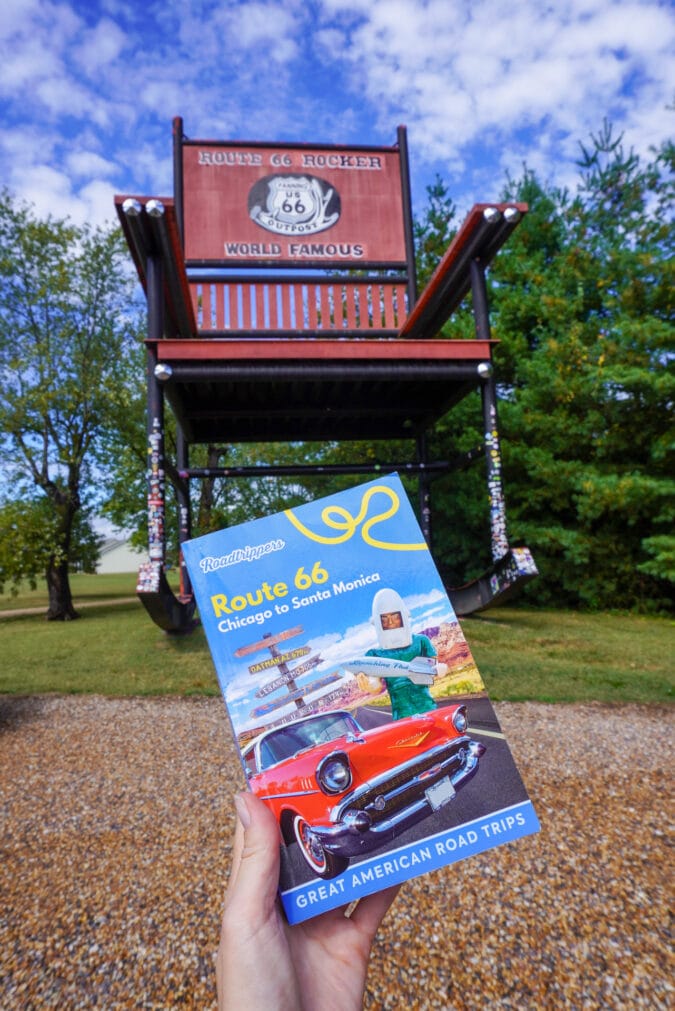
As with much of Route 66, the original road in Missouri largely runs parallel to the interstate, and it’s easy to get on and off. With my tight schedule, I ended up making a list of stops ahead of the trip and, in the interest of saving time, jumped on and off the freeway between stops. Those with more time to spend on the route will be able to meander along on its original parts. This is an excellent way to find small towns that may be less touristy, but still packed with history and hidden gems. “Generally speaking, if you find yourself on the interstate and you’re passing a lot of towns, you’ve missed something somewhere,” Martin says.
While the Missouri stretch of Route 66 is often beautiful—it crosses through the lush, green Ozarks—the weather was not in my favor. It was pouring rain for most of the day I spent riding through the state, but with proper rain gear and a quick switch to “rain mode” on the motorcycle, it wasn’t too bad.
I stopped for lunch in Cuba, a town known for its murals depicting historical events. Since I don’t eat meat, I opted out of Missouri Hick ’s famous barbecue and instead found Little Shop of Comics & Audrey’s Eatery on Main Street, a cozy comic book shop with a cafe in the back. I ordered soup and waited out the rain.
Back on the road, I made my way to the World’s Second Largest Rocking Chair (it used to be the largest, until 2015, when an even bigger rocking chair in Casey, Illinois, knocked it down to second place), the Devil’s Elbow Bridge , and the Uranus Fudge Factory and General Store . The latter may be a classic tourist trap, but anyone who enjoys potty humor will have a good time in Uranus.
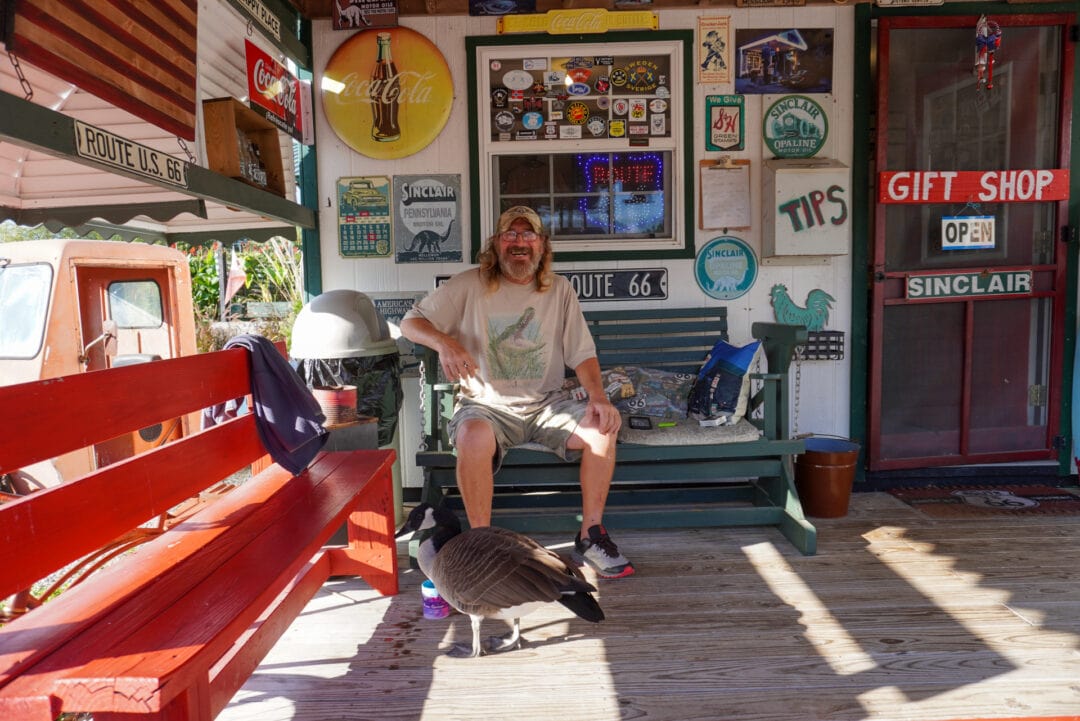
One of my must-see stops was Gary’s Gay Parita , a replica of a 1930 Sinclair gas station. The property is packed with memorabilia from the heyday of Route 66, including vintage cars, gas pumps, signs, old glass bottles, and more. The current owner, George Bowick, has a wealth of Route 66 knowledge and is happy to share it with anyone who asks. As we were chatting, Lady Bird, his tame goose, nibbled on my boots. Bowick recommended I visit Red Oak II on my way into Carthage, so naturally I obliged.
Red Oak II is a unique type of place. Created by artist Lowell Davis, it’s a replica of the real Red Oak, Missouri, where Davis grew up. After leaving for many years and returning to find that his hometown had turned into a ghost town, Davis started moving buildings from the old town and restoring them on his farm just outside Carthage. The result is a quaint but eerie town that feels completely frozen in time. I didn’t see a single person during my visit, but a very sweet dog showed up out of nowhere and escorted me around.
Original route mileage: 13 miles (21 kilometers) Must-see highlights: Cars on the Route, Gearhead Curios, Rainbow Bridge
The Kansas section of Route 66 is short but sweet. In just about 13 miles, the state manages to pack in several can’t-miss stops. Entering into Kansas through Missouri’s Old 66 Boulevard puts you at the north end of Main Street in Galena (population: 3,000). Your first stop here should be Cars on the Route , a restored Kan-O-Tex service station. Grab some snacks or Cars memorabilia, and check out the old truck that inspired the movie’s Tow Mater character.
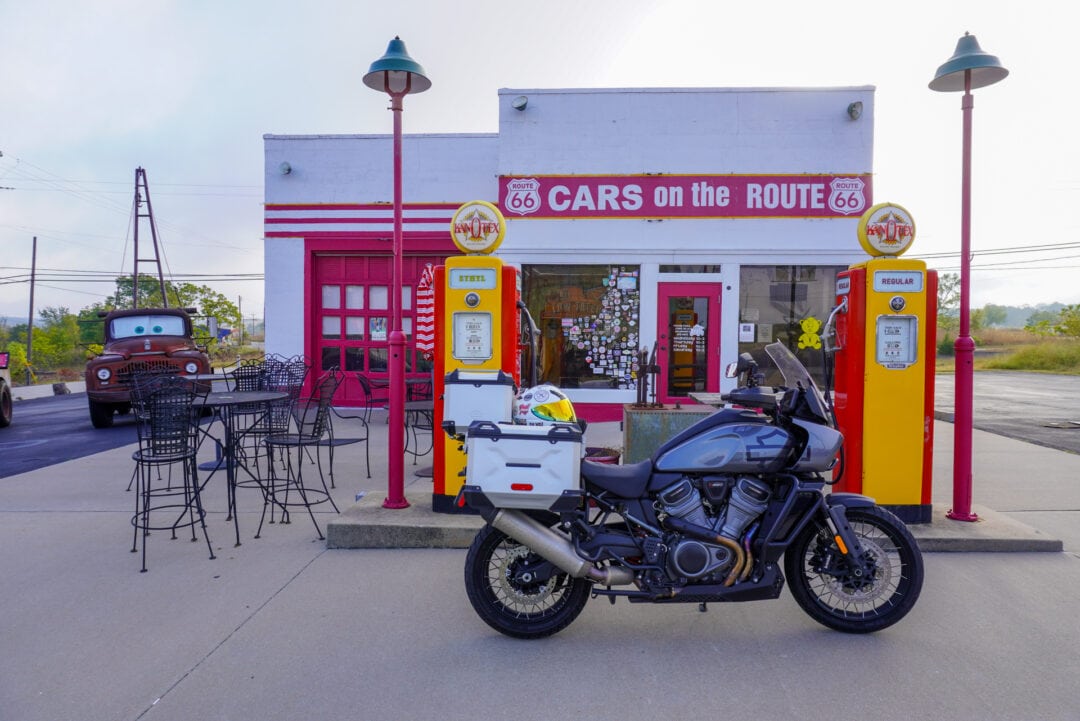
As you ride down Main Street, you’ll come across the Galena City Jail, another vintage service station called Gearhead Curios, and a large “Galena on Historic Route 66” mural. I can never pass up a good bridge, so from Galena I continued onto the Rainbow Bridge, a beautiful Marsh Rainbow Arch bridge built in 1923 over Bush Creek.
If you have time for a detour, the Tri-State Marker just a few miles south of the route allows you to stand in three states at once: Kansas, Oklahoma, and Missouri, a worthy photo op.
Original route mileage: 432 miles (695 kilometers) Must-see highlights: Blue Whale of Catoosa, Buck Atom’s Cosmic Curios on 66, Seaba Station Motorcycle Museum, POPS Soda Ranch, Lucille’s Service Station, Sandhills Curiosity Shop
If you’ve ever traveled I-44 through Oklahoma, you’re already familiar with its most annoying feature: the frequent cash-only toll booth stops. From the Missouri state line and all the way to Oklahoma City, old Route 66 runs parallel to I-44, and if you have the time (and want to save a few dollars), it’s a much more pleasant way to travel. It’s also the easiest way to make sure you don’t miss any roadside attractions along the way.
The first must-see stop in Oklahoma on my list was the Blue Whale of Catoosa , one of the most recognizable stops along the route. I sat down at a picnic table for a snack while admiring this roadside attraction, originally built as an anniversary gift to a wife who loved whales.
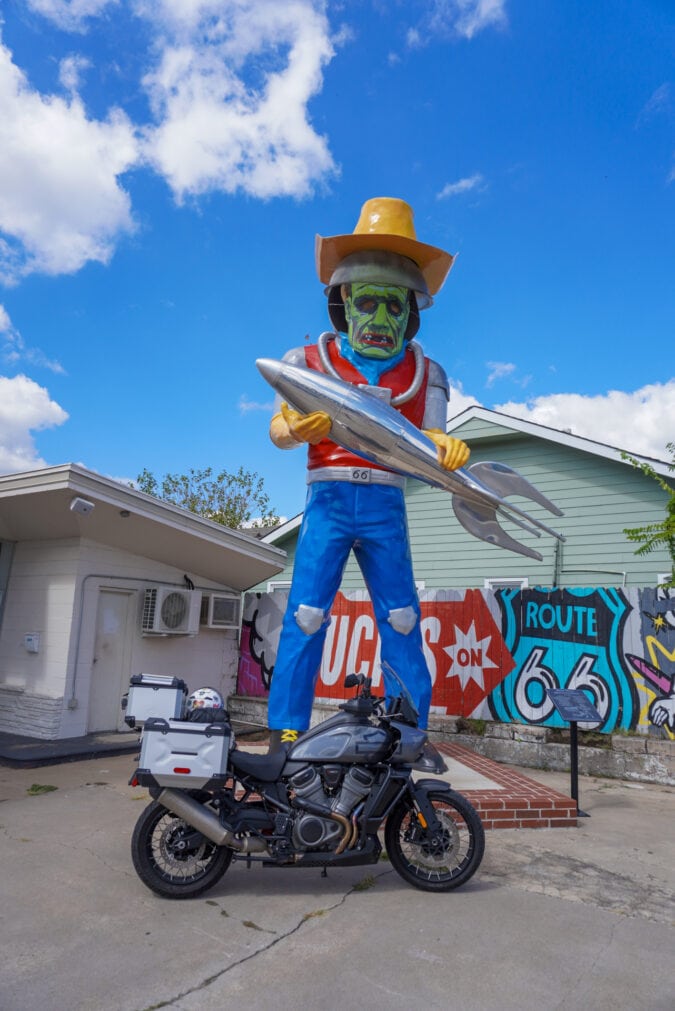
In Tulsa, I took a much-needed break from greasy diners with lunch at Chimera Cafe. I had originally planned to avoid bigger cities as much as possible on this trip, but Tulsa is a real Route 66 goldmine and I ended up spending more time here than I originally planned. One of the highlights was Buck Atom’s Cosmic Curios and its Space Cowboy Muffler Man. Just as I was about to leave, a guy rode in on a dual-sport motorcycle to ask me about my bike. This turned out to be Chris Wollard, the local artist who designed and built the Space Cowboy’s shiny rocket ship ( Mark Cline fabricated the Muffler Man).
A few hours later I stopped at the Seaba Station Motorcycle Museum . While chatting with the guy at the front desk, I quickly realized we had friends in common. The museum is small but jam-packed with vintage motorcycles dating back to the early 1900s. Entry is free, but donations are appreciated.
I stayed the night in Elk City, home to the National Route 66 Museum. The next morning I was on the road by sunrise, heading toward my final stop in Oklahoma: Sandhills Curiosity Shop . Owned by “hillbilly hoarder” Harley Russell, it’s neither a store nor a museum—but it’s a classic Route 66 stop that makes for a great photo op.
Related: Route 66’s most famous hillbilly hoarder, presides over a shop where nothing is for sale
Original route mileage: 186 miles (299 kilometers) Must-see highlights: Tower Conoco Station & U-Drop Inn, Slug Bug Ranch, Palo Duro Canyon State Park, Jack Sisemore Traveland RV Museum, Cadillac Ranch, Midpoint Cafe
The Texas Panhandle, with its flat plains and unrelenting stretch of I-40, isn’t necessarily known as the most scenic place to ride a motorcycle. However, this part of the Mother Road features some of its most iconic stops—and some of the best detours.
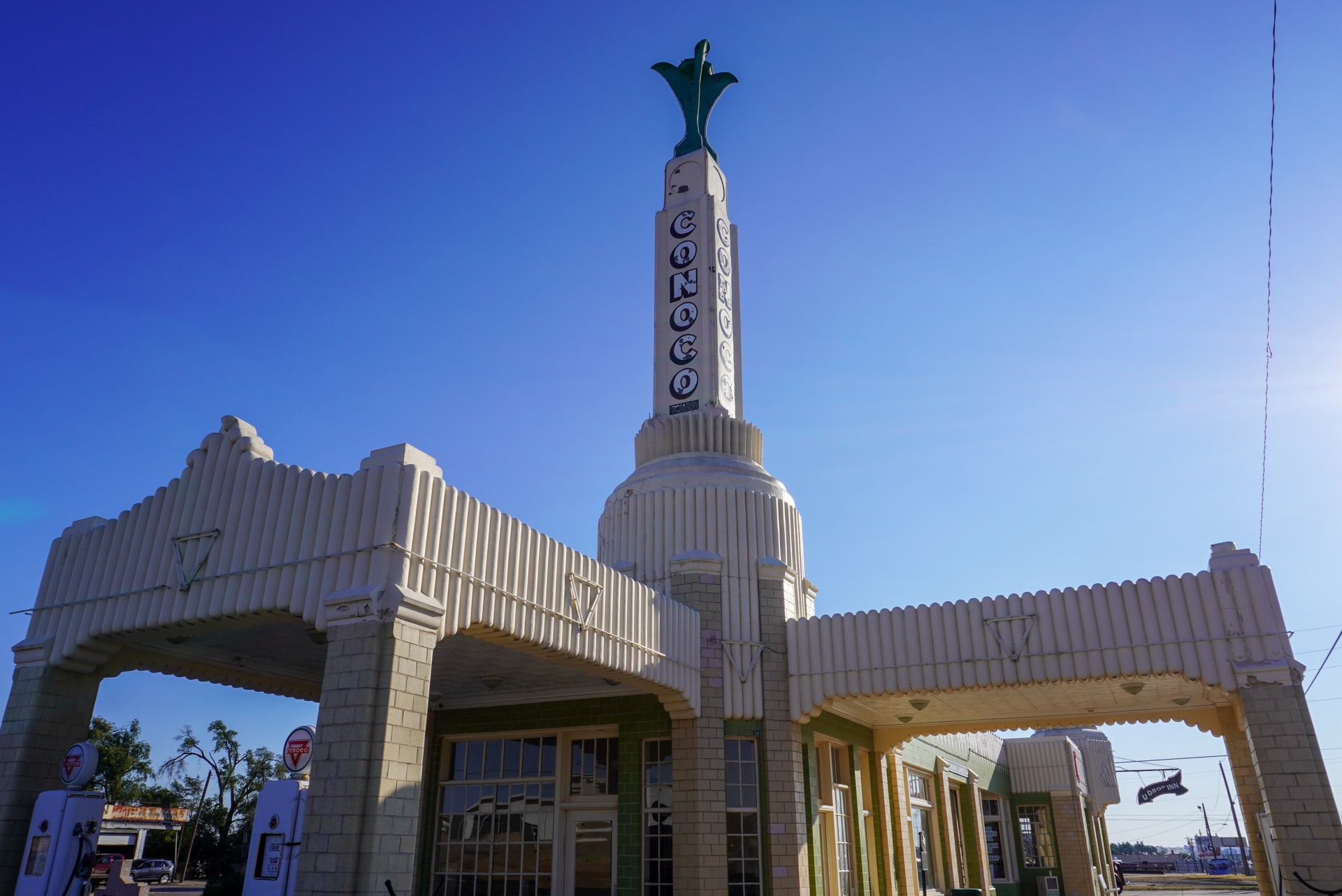
There are so many vintage service stations—restored or abandoned—along Route 66 that it’s impossible to visit them all. But if you only have time for one, the Tower Station and U-Drop Inn in Shamrock is a stunning art deco masterpiece that should not be missed. As a bonus, Ramone’s House of Body Art, the auto body shop in Cars , was heavily inspired by this building.
One of the more famous Route 66 attractions in Texas is Cadillac Ranch . And while that’s absolutely worth a stop, I found Slug Bug Ranch to be a less crowded and equally enjoyable alternative. Located just 15 miles east of Cadillac Ranch, this whimsical tribute features a row of Volkswagen Beetles buried nose down and covered in graffiti.
During my jaunt through Texas, I decided I’d had enough of riding straight, flat highways and needed a change of scenery. After grabbing lunch in Amarillo, I took a 30-mile detour south to Palo Duro Canyon State Park . Home to the second largest canyon system in the country, the gorgeous scenery and steep switchbacks of the park did not disappoint. If you go, remember to check the forecast beforehand—due to its microclimate, temperatures at the bottom of the canyon can be significantly higher than at the rim.
As I continued my journey west, I made a final stop in Texas at the Midpoint Cafe in Adrian. This roadside diner and gift shop marks the official halfway point of Route 66—1,139 miles down, 1,139 miles to go.
Original route mileage: 487 miles (784 kilometers) Must-see highlights: Russell’s Travel Center & Car Museum, Tee Pee Curios, Blue Swallow Motel, Blue Hole of Santa Rosa, Tinkertown, Old Town Albuquerque, Laguna Pueblo, Bandera Volcano and Ice Cave, El Rancho Hotel
While New Mexico has no shortage of mid-century kitsch, it’s also arguably the best state along the route to dive deep into Indigenous history and culture. However, due to the COVID-19 pandemic, the state’s pueblos and Native American villages were all closed to visitors during my trip.
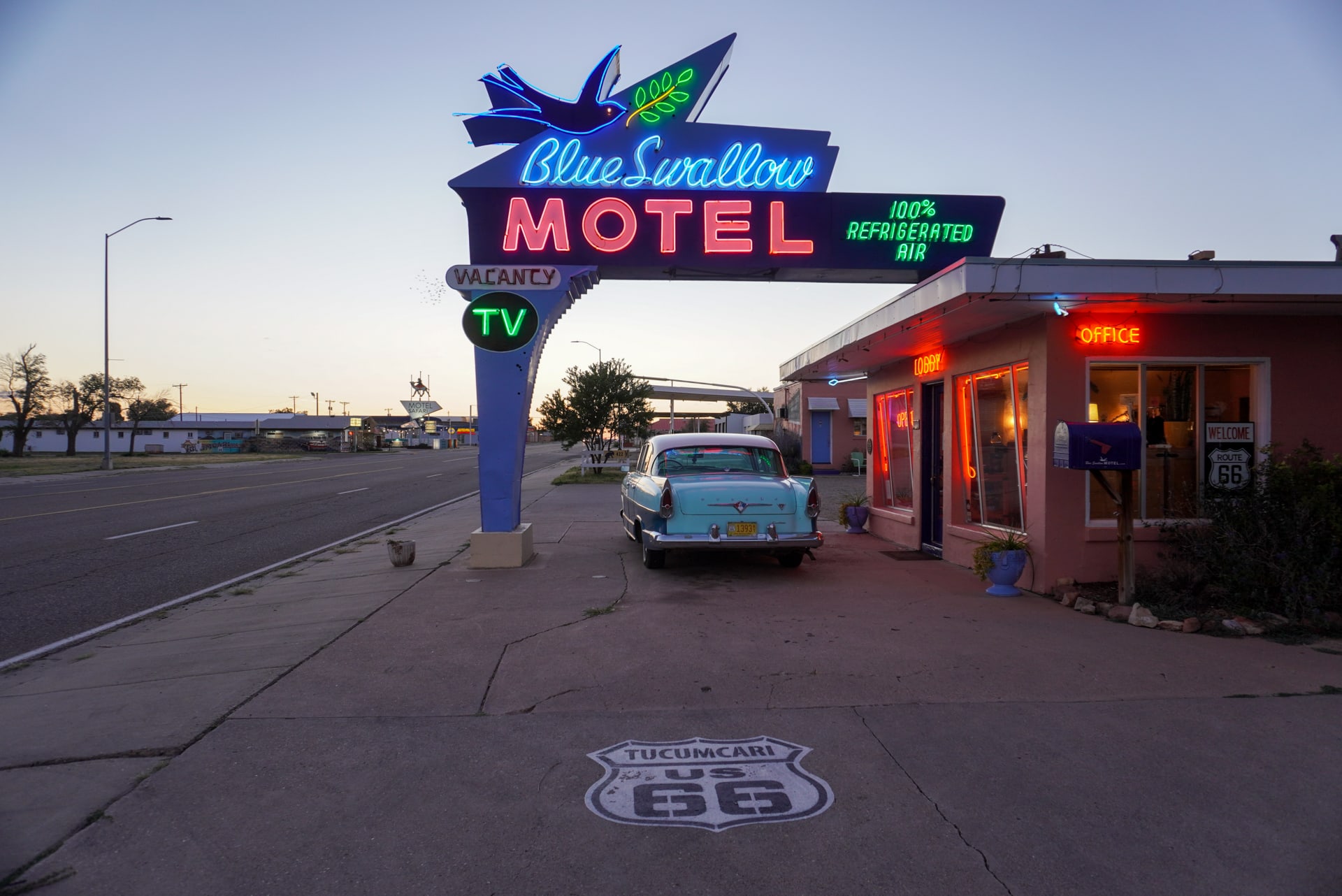
I spent the night at one of the most iconic accommodations along the route: the Blue Swallow Motel in Tucumcari, a classic 1940s motor court (each room comes with a private garage for your motorcycle) known for its spectacular neon signage. I rolled in right before sunset and was lucky enough to get the last available room, despite not having made a reservation in advance. This irked my neighbors in the room next door, who had made their reservations months earlier. But as several people I spoke to during the trip confirmed, the route was much less busy than normal because the pandemic had temporarily halted the influx of one of the most prevalent Route 66 travelers: the European tourist.
Tucumcari is worth a visit whether you’re staying the night or not. Pick up a souvenir from Tee Pee Curios , grab a home-cooked meal from Del’s Restaurant, or get a photo in front of one of the town’s Route 66 murals.
Heading west through the Land of Enchantment, Albuquerque contains the longest continuous stretch of Route 66 within a single city. Here, you can stand at the intersection of two different historical alignments of the highway. Beyond its Mother Road legacy, the city is also home to mid-century modern architecture , a Historic Old Town area packed with museums, the famous Balloon Fiesta (which, coincidentally, took place during my visit), and tons of artsy Southwestern charm. On my way into town, I took a detour to ride some proper switchback roads to the top of the Sandia Crest ridge.
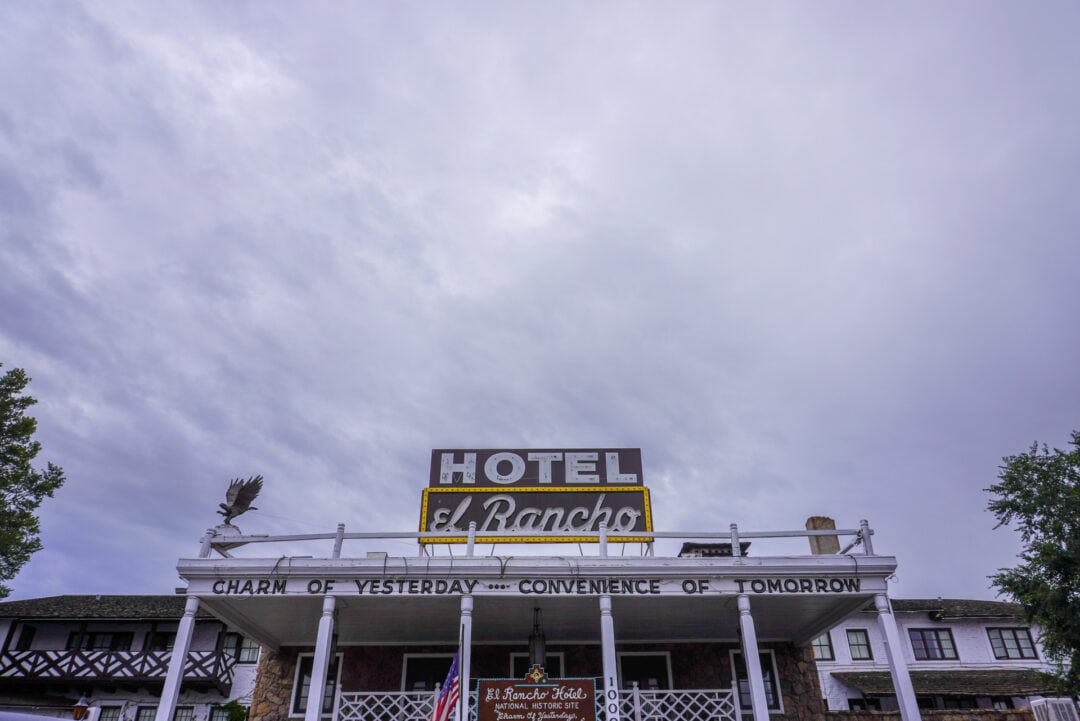
Before heading into Arizona, I stopped in Gallup to admire the historic El Rancho Hotel and say “howdy” to the cowboy Muffler Man at John’s Used Cars.
Original route mileage: 401 miles (645 kilometers) Must-see highlights: Chief Yellowhorse Trading Post, Petrified Forest National Park, Jackrabbit Trading Post, Standin’ on the Corner Park, La Posada Hotel, Two Guns, Twin Arrows Trading Post, Delgadillo’s Snow Cap, Hackberry General Store, Cool Springs Gas Station
In just over 400 miles, the Arizona stretch of Route 66 packs in so many must-see stops—including ghost towns, a national park, vintage service stations, interesting architecture, and roadside attractions—that it might be worth budgeting in some extra time to make sure you don’t miss anything. If you can, add an additional day to your itinerary for a detour to the Grand Canyon as well.
You’ll know you’ve entered Arizona when you see the big yellow signs for Yellowhorse , a Navajo-owned trading post set against a dramatic red rock backdrop. Both Yellowhorse and the neighboring Teepee Trading Post are perfect places to stop for souvenirs, photos, and snacks.
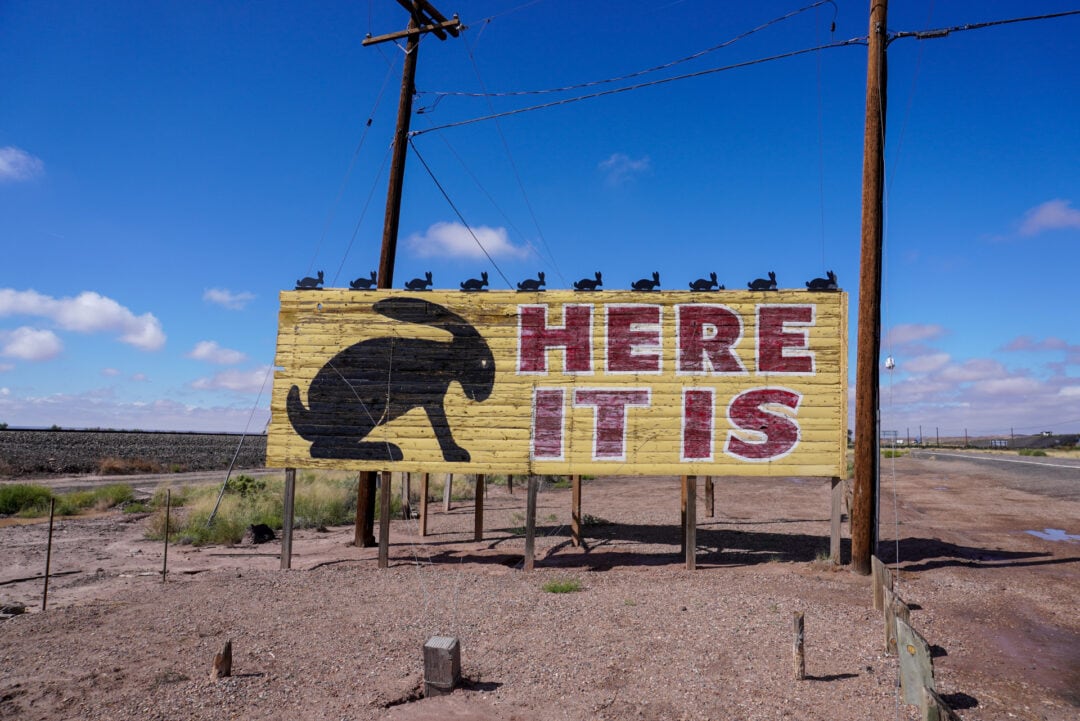
My next stop was Petrified Forest National Park , the only national park to have a section of Old Route 66 preserved inside it. Exploring the entire park can easily take a full day or more—but for those only interested in the Mother Road marker, it’s located in the northern part of the park, a 20-minute ride from I-40 along a scenic road (note that you will need to pay the park entrance fee to access it).
Arizona has several towns that have gone all in on their Route 66 legacy, including Holbrook, Winslow, Seligman, and Kingman. But one of the more intriguing stops along the entire Mother Road is located off I-40 right in between Holbrook and Winslow. Those who’ve been paying attention may have noticed a few bright yellow mileage signs at other locations along the route. These all point to the Jack Rabbit Trading Post , an unassuming roadside souvenir store, and you’ll know you’ve arrived by the massive “Here it is” billboard.
Some other highlights in the Grand Canyon State include standing on the corner in Winslow, exploring the ruins of the Two Guns ghost town, grabbing a sundae at Delgadillo’s Snow Cap in Seligman, and riding the Oatman Highway—not for the faint of heart, it features 191 curves in 8 miles, a narrow roadway with no guardrails, and roaming burros that tend to be standing in the middle of the road as you’re coming around a tight turn.
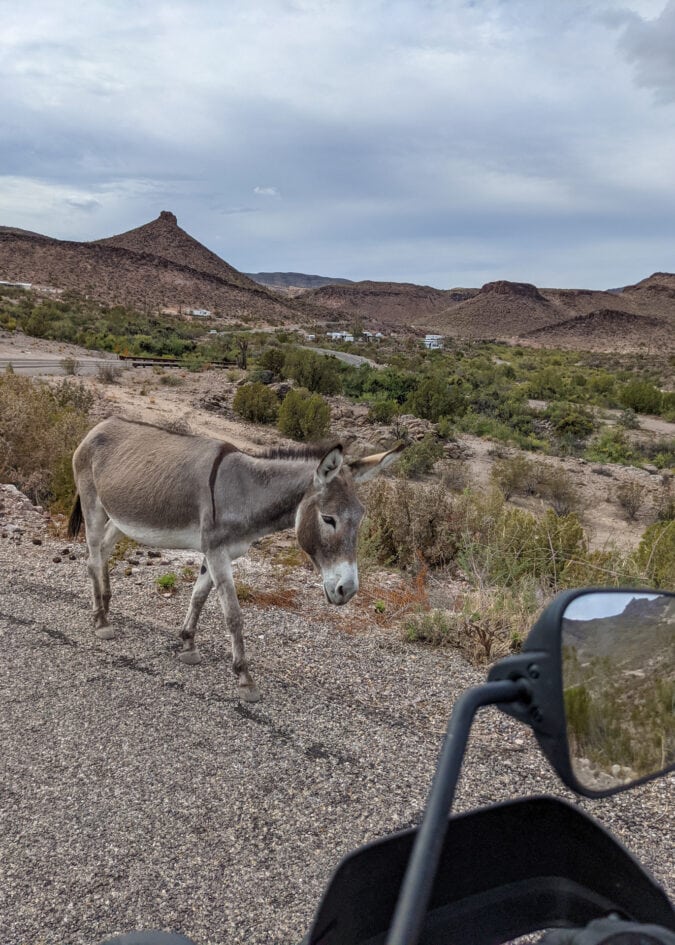
The Arizona section of Route 66 also contains what is probably the most drastic change in climate you’ll find in a single state during your trip. On one of the days I spent here, I woke up to 45-degree weather in Flagstaff. A few hours later, as I was crossing the Colorado River and making my way into California, the temperature was closer to 95 degrees Fahrenheit. Make sure you’ve packed layers, or chances are you’ll be uncomfortable at some point.
Related: Lured by gold and ghosts, visitors just can’t quit the tiny mountain town of Oatman, Arizona
Original route mileage: 314 miles (505 kilometers) Must-see highlights: Roy’s Motel and Cafe, Amboy Crater, Calico Ghost Town, Elmer’s Bottle Tree Ranch, First Original McDonald’s Museum, Wigwam Village Motel No. 7, Aztec Hotel, Santa Monica Pier
The California section of Route 66 starts in Needles. As I was grabbing food at the local Wagon Wheel Restaurant, I noticed a hand-written sign inside, summing up the town: “Needles, California, hot spot known for absolutely nothing; 20 miles from water, 2 feet from hell.”
Heading west through the California desert, the first can’t-miss stop on this part of the route is Roy’s Motel and Cafe in Amboy. This gas station and souvenir shop is a popular stop for photos thanks to its iconic—and recently restored—neon sign. Nearby you’ll also find Amboy Crater , a 250-foot-tall volcanic cinder cone, where you can hike by lava lakes, basalt flows, and collapsed lava tubes.
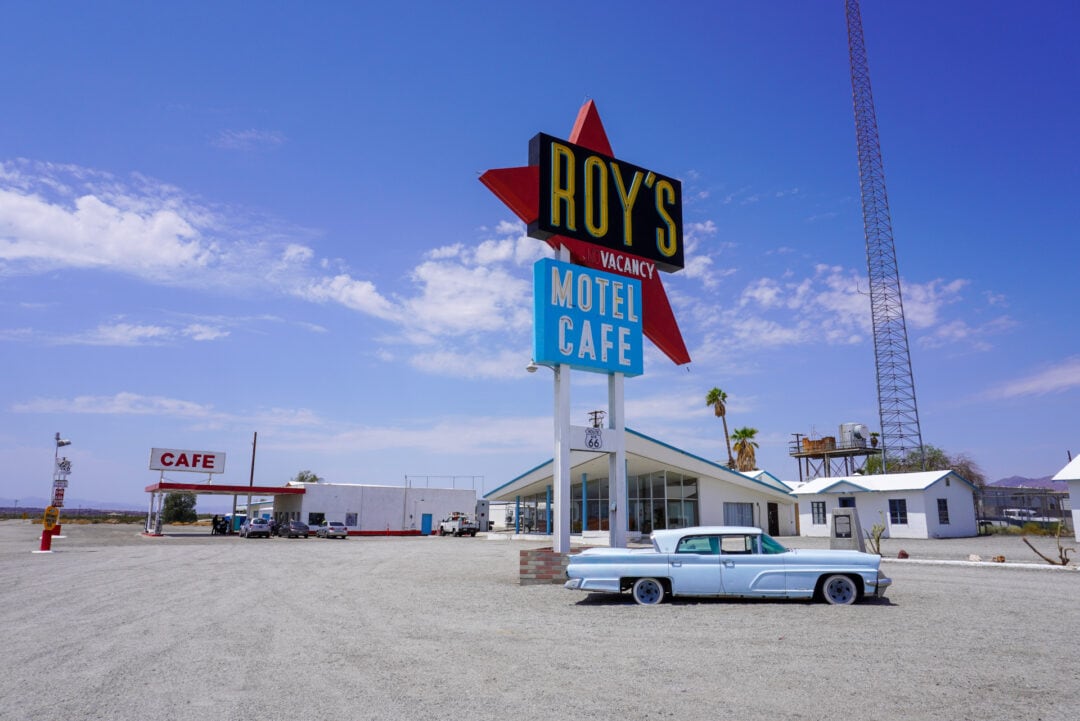
Make a pit stop at Calico Ghost Town , walk through the glass forest at Elmer’s Bottle Tree Ranch , and get nostalgic at the First Original McDonald’s Museum before it’s time to leave the more quiet and remote parts of this trip behind and enter the busy city streets of Los Angeles.
As you get closer to the coast, you may experience something you haven’t seen since you left Chicago: traffic. Los Angeles has a lot of it—however, since lane filtering is legal in the state, you can easily bypass it on a motorcycle. Just go slow and stay alert.
The western half of California’s Route 66 passes through several bustling cities and towns, where strip malls and chain restaurants greatly outnumber quirky roadside attractions. But keep your eyes peeled for mid-century architecture, neon signs, and vintage service stations along this stretch, including Cucamonga Service Station ; built in 1915, it actually predates the route.
Unfortunately you can’t ride a motorcycle all the way to the finish line—but when you reach the Pacific Ocean, park your bike and walk to the end of the Santa Monica Pier to get a photo in front of the iconic “End of the Trail” sign. Congratulations, you made it.
Meet the Author

Roadtrippers
Roadtrippers helps you find the most epic destinations and detours—from roadside attractions to natural wonders and beyond.
- Related Articles
- Latest Articles
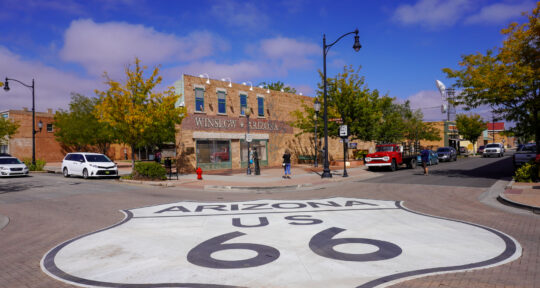
8 iconic pop culture locations on a Route 66 road trip
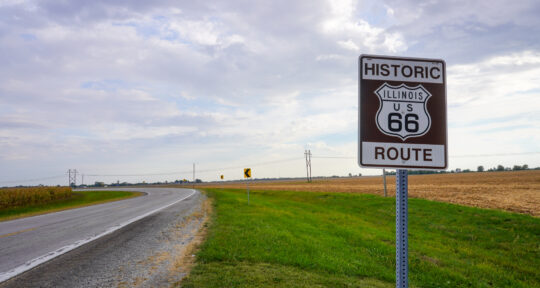
Route 66 goes electric: Meet the people and initiatives bringing the Mother Road into the future
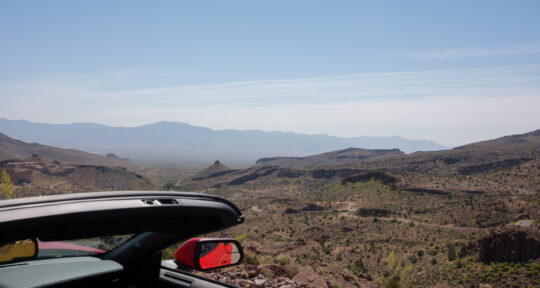
Romance vs. reality: Things to consider before planning a road trip in a convertible
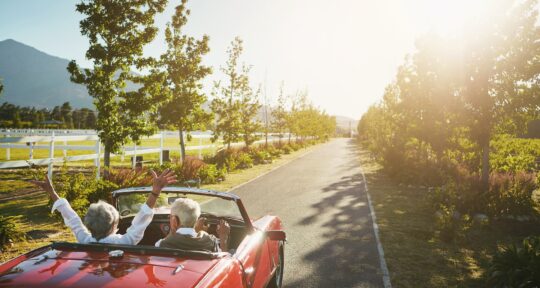
Long weekend trip itineraries around the U.S.
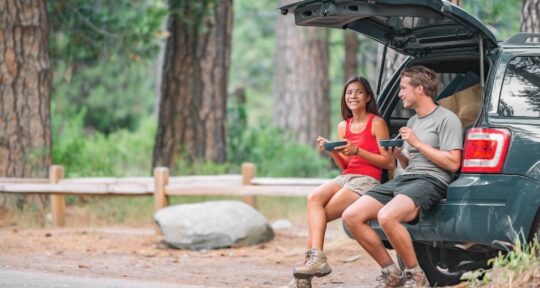
The best foodie road trips for Southern eats
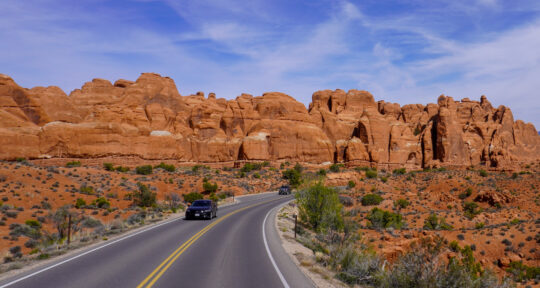
Common road trip scams (and how to avoid them)
Get the most inspiring stories from the road sent directly to your inbox..

- Sign up Log in Sign out
- Log in Sign out
Plan your journey, find amazing places, and take fascinating detours with our app.
If you used to sign in with Roadpass, you should now use the same username and password to log in directly with Roadtrippers above.
We couldn't find an existing Roadtrippers account using that service. Please try signing in with another option.
We need your email address to send you trip itineraries and other updates.
How do you want to plan your trip?
With just a few questions, our newest Premium feature, Autopilot, will plan your next adventure.


The 12 Best Beginner Motorcycles For Long Road Trips
I t's easy to romanticize the idea of setting off on a long road trip, especially when it concerns doing it on two wheels . It's a chance to revel in the freedom the open roads give you, explore, and, quite importantly, get to know the vehicle enabling this experience. Given that, though, it's critical to get the right kind of machine along for this trip.
UPDATE: 2024/01/26 16:17 EST BY RAUNAK AJINKYA
Road trips, in general, can be tough if you don't have the right motorcycle along for the ride, especially if you are a novice rider. Given that, we have updated this list to include a few more entries of motorcycles perfectly suited for the job.
This is especially true if you're a rider devoid of a lot of seat time. The last thing you want to do is bring someone's sportbike along because while it may have a lot of power and consume miles rapidly, it's something you'll tire of rather quickly because of the compromised riding triangle. Luckily, this list should help you get through that selection process. It features beginner-friendly motorcycles you can legitimately rely on for long road trips by the likes of Suzuki , Harley-Davidson , Yamaha , and even Ducati, among others.
How we got our model selections: To compile this list, HotCars made a list of all the appropriate motorcycles on offer that enable long trips. While power was considered a criterion to narrow the list down, the motorcycles also needed to be beginner-friendly, meaning priority was given to motorcycles with comfortable ergonomics, impressive fuel tank capacity, and easy-to-handle curb weight figures. It should be noted that this list is a mix of motorcycles currently in production and those that have been discontinued but can be readily found in the used market. Also, the motorcycles have been organized in increasing order of the current market values.
Top 10 Beginner Motorcycles Under 500cc
Suzuki boulevard s40, used price range: $2,000-$6,000.
Suzuki's cheapest Boulevard doesn't leave you wanting for much. The 652cc engine is strong but not too strong for the bike's weight. It's not quite as long as other cruisers, which is nice for a beginner, and it's got a fairly affordable used price range, too. The seating is relaxed, with handles a little closer to you.
The newer ones come in a cool street-color gray and a classic blue. The way it features less chrome with a blacked-out engine and black finish on the wheels makes it look sporty and simple. A single speedometer over the gas tank is analog, and it has plates on the sides for saddlebags if you need cargo space.
2019 Suzuki Boulevard S40 Specs
(Specs sourced from Motorcycle Specs )
Harley-Davidson Iron 883
Used price range: $2,000-$10,000.
This Harley-Davidson gets 833 America-made ccs of power and goes for well under $10k in the used market. It's one of the best Harleys to start with, and you won't get kicked out of a biker bar for owning one. The Iron 883 has a V-Twin engine. If you don't know, this is a cool thing to have if you wear a leather jacket with patches unironically.
Admittedly, you don't get quite as much for your investment as an Indian Scout Sixty, and both will always be less reliable than a Honda or Kawasaki, but there are some things that just don't compare, like the trademark Harley rumble! Plus, with motorcycles, there's always less to fix than with cars so that you can do a lot of the work yourself.
2008 Harley-Davidson Iron 883 Specs
Yamaha v star 250, starting msrp: $4,699.
The Yamaha V-Star 250 is one of the very best for uneasy beginners looking to road trip . A new one costs just $4,699, and it gets 78 MPG. That means 195 miles between stops, which is pretty decent for a motorcycle. If you haven't figured it out, most of the time, the numbers by the name represent the ccs in a bike, so this has 249 (thus, 250). That means it's a very comfortable beginner's bike that won't scare you but can still get up to cruising speed faster than most cars. It also means the bike is lighter and easier to control.
It has a decent rear seat for passengers and a good base for saddlebags and packs. The speedometer is analog, and the styling is classic, so you might get confused if you park by any V-Star from the past 40 years. Despite the timeless look, the bike holds up to aging well and won't feel rough or uncomfortable on a long trip.
2024 Yamaha V-Star 250 Specs
(Specs sourced from WebBikeWorld )
These Are The Best Cheap Beginner Motorcycles From Japan
Ducati scrambler sixty2, used price range: $5,000-$7,000.
The Scrambler Sixty2 is a 399cc sportbike marketed more towards women. It weighs less than any on this list at just 403 lbs, which is great for people worried about laying it down on accident. It may look like a "naked" (a sportbike with no fairings or extra body covers), but this bike gets just shy of 250 miles of range, and even though the seat is a little more aggressive and won't hug your buns, the way it's shaped actually is relaxing and won't rub your behind the wrong way like a dirt bike (for men and women).
This bike won't be able to hold saddlebags, but the Sixty2 makes a great road trip bike for someone who won't spend more than three days riding in a row and wants a good in-town motorcycle the rest of the time. Surprisingly, for its size (but not for Ducati's standards), it can go up to 100 mph, so you'll never be left wanting more power on the freeway.
2018 Ducati Scrambler Sixty2 Specs
Bmw g 310 gs, starting msrp: $5,890.
The BMW G 310 GS is an adventure bike , meaning with some knobby tires, it makes a decent dirt bike for trails as well. With an adventure bike, you get way more travel (7.5 inches) for smoother rides, a more comfortable seat than a dirt bike, and a more upright seating position than dirt or bullet bikes. The 310 GS is one of the cheapest Beamers you can buy new for just $5,890. That being said, it is a Beamer. This won't win any awards for reliability.
The 310 GS makes a comfortable 313cc that won't get you up any hill climbs but will easily take you up to 90 miles per hour. With 71 MPG, it has a range of 213 miles. The digital display shows gas, gear, and speed in bold fashion, and the LED light makes for a great off-road light in bright mode.
2024 BMW G 310 GS Specs
Honda rebel 500, starting msrp: $6,499.
The Rebel 500 is an affordable and comfortable bike that will last you your whole life. It has 471ccs, which won't let you do any wheelies but does get you up to cruising speed sooner than you need. To keep yourself from locking up your brakes (a significant factor in motorcycle crashes), you can and should get the ABS option. The blacked-out bike may mimic a Harley, but the low seat height makes it ideal for women and the height-challenged. It is also surprisingly fitting for full-height people.
The Rebel has been around for years, so used ones aren't hard to find, and a new one will run for just $6,499. The digital cluster is simple and includes a fuel gauge (not included on all motorcycles). Honda’s slip/assist clutch makes shifting easy for the uninitiated, but sadly, this doesn't come with an automatic transmission. The manual is very forgiving, easy to learn, and worth it, in our opinion. This bike is ideal for beginners who don't plan on switching bikes for years to come.
2024 Honda Rebel 500 Specs
These are the best beginner motorcycles money can buy, kawasaki vulcan s, starting msrp: $7,349.
According to their official website, Kawasaki advertises the Vulcan as being able to fit a wide range of people. The 649cc engine has a good kick at low to mid-range for city stops, but it can also get up to 100 mph. For $7,349, it will feel sportier and quicker than other bikes, but it's also reportedly fun to sit on on the freeway! It has one of the most natural seating positions of any bike under $10,000, probably because it's adjustable.
It may look nothing like a beginner's bike, but it is what Kawasaki offers as their entry-level cruiser . If you're not worried about the bike weighing a little more, it is a very forgiving and comfortable ride. ABS is available, features like a windshield and back support are easy to add, and they are a massive plus on long rides.
2024 Kawasaki Vulcan S Specs
Honda nc750x, starting msrp: $9,499.
If there were a contender for the bike on this list that you could buy with your eyes closed, the Honda NC750X would be right up there at the top of that list.
It's easy on the eyes, great for beginners in terms of the riding ergonomics, is affordable enough, has a great ride, and the DCT on it is the cherry on the icing. It even includes riding modes, a windshield, and a low seat height. That the NC750X often gets discounted is a puzzle.
2024 Honda NC750X Specs
Triumph tiger 660, starting msrp: $9,695.
The star of the show here is, of course, Triumph's lovely 3-cylinder engine, but the Tiger 660 is no one-trick pony. This is about as close to ideal for beginners to get on and go on a long trip .
Tack on luggage and load it up, and the excellent tractability of the motor will still pull you along comfortably. You can even add optional extras that will make the journey more comfortable, like additional lighting and heated grips. Hard to fault the Tiger 660, really.
2023 Triumph Tiger 660 Specs
10 best beginner motorcycles money can buy, bmw f 750 gs.
BMW's GS motorcycle lineup is legendary . The F 750 GS is a natural at completing longer journeys in absolute comfort. One of the most important factors is, of course, the seat, and the F 750 GS makes do with one that's ideally suited to road trips.
At 32.1 inches, it's much lower than you'd expect for a bike this size, but if that's not enough, BMW will also sell you a suspension lowering kit and soft seat, bringing the seat height down further to 30.3 inches. In addition to that, it also gets dynamic traction control, ride modes, and adjustable brake and clutch levers, among others. For the money, it's quite a deal.
2023 BMW F 750 GS Specs
Indian scout sixty, starting msrp: $11,749.
The Indian Scout Sixty is one "beginner" bike that will earn you a lot of respect . It starts at $11,749 and is pretty long and wide but isn't necessarily heavy. The wider handlebars give you better in-city control around corners, and ABS is an option. The engine is 1000ccs, the most of any on this list, but not something an average-fit person couldn't handle easily.
While this is more of a luxury option, it allows for things like a windshield (don't discount how useful one of these is after just two hours of 60+ mph wind in your face) and genuine leather saddlebags. The seat is wide, which benefits the narrow-waisted as well as larger people.
2024 Indian Scout Sixty Specs
Energica eva esseesse9+, starting msrp: $16,110.
This electric bike warrants some cautionary tales: First, do not listen to music until you are comfortable with traffic flow and riding defensively! Cars cannot hear you at all, and they can't see you too well either. Also, its range is 143 miles combined, which is not the best for long trips but is still passable with some planning.
With that out of the way, you get an 80% charge in 40 minutes with a fast charge! All you need to do is stop for a meal by a power station, and you're as well off as any ICE bike. The EsseEsse9 has a nice, upright position , but you're also working with a lot of torque, so make sure you take it slow, or you can pop a wheelie. Otherwise, unlike combustion bikes, it's small and simple and won't have any mechanical issues to stump you. The gauge is simple and can tell the range so you won't be left without power.
2020 Energica EVA EsseEsse9+ Specs
(Specs sourced from Bikez )
- Source for features: Respective manufacturers' websites
- Source for technical specifications: Motorcycle Specs, Bikez, WebBikeWorld
- Source for used prices: Cycle Trader
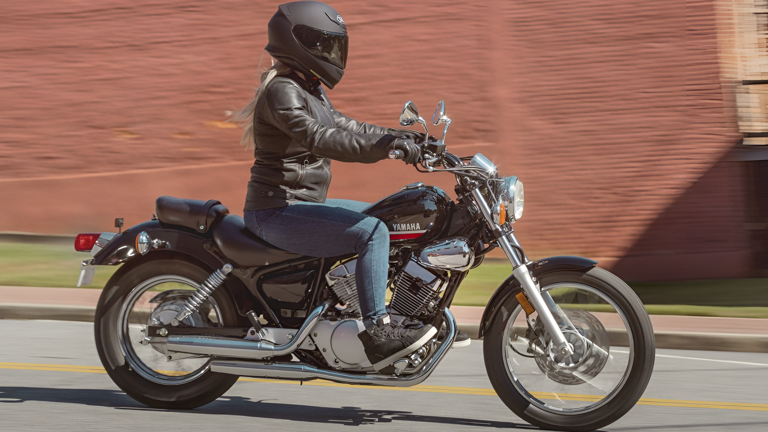

IMAGES
COMMENTS
Roadtrippers will help you find all the best stops along the way. Sync your trip to your phone, and then let Roadtrippers lead the way with turn-by-turn navigation. Get inspired and then begin planning your next unforgettable motorcycle trip. Adventure motorcycling is growing in popularity as a major player enters the field.
If you have them, bring extra interior padding and liners for your helmet. Wear motorcycle appropriate base layers for the expected climate. Silly as it sounds, bring extra socks. As crass as it sounds, there is a World War II American Army saying about socks: "Feet, neck, hands, balls, four pairs gets 'em all.".
Find out if you prefer a tank bag or a tail pack. Try riding with your top box and a waist belt to see what works best for you. 3. Improve Your Riding Fitness (Pre-Tour) Riding fitness is one of the most overlooked factors of long-distance motorcycling. But it's so important that I even posted a dedicated article here.
Plan your gas stops. Even riders with big tanks can be nervous out west. Alternatively, have a second fuel container on board. Check your bike out. A lot. Every morning is a good starting point. One road trip might be as many miles as 20 of your commutes.
Your search for the best roads, race tracks and off-road trails ends here with a motorcycle trip planner built for adventure. Uncover more than 3,000 motorcycle road trip maps around the world with the REVER motorcycle route app. ... Planning the trip was easy and with the Butler map overlay completely changed the route we are taking. I was ...
Service your motorcycle before the trip. Get a safety inspection. Chose the right clothing. Pick the appropriate gear for the trip. Select a navigation system (preferably two) Plan a basic itinerary. Create a packing list. Special items for men and women. Basic travel hacks.
Tips for Long Motorcycle Trips: What to Know When You're on the Road. Start your engines! Now you've got everything ready, here are some tips to follow while on the road. Start Early. Long-distance motorcycle trips mean early starts. This can be challenging if you - or members of your party - aren't morning people.
3. Take frequent snack breaks. Spending long hours on a motorcycle tends to make everything hurt at the end of the day. One way to help combat the worst saddle sores and muscle ache is to take frequent breaks. Don't just make 5-minute gas stops every 100 miles—you'll regret it the next day.
The allure of the open road, the hum of the engine beneath you, and the thrill of discovery around every bend—there's nothing quite like embarking on a motorcycle road trip. The freedom and exhilaration of long-distance riding are unparalleled. However, a successful road trip requires careful planning and preparation. From pre-ride inspections and route planning […]
Our guide to 30 essential motorcycle touring long-distance cross-country trip planning tips from top touring experts with over 300,000 collective miles in the saddle. Get road-ready with EagleRider's ultimate touring guide.
Plan a Long-Distance Motorcycle Trip: Start Route Planning. Once you have completed the previous steps in planning your long-distance motorcycle tour, it's time to start route planning. Many resources are available to help with this process, such as Facebook groups, Best Biking Roads, Motorcycle Diaries, and YouTube videos.
What is the best motorcycle for road trips? The best motorcycle for long trips is a touring bike or cruiser. Touring bikes are designed specifically for long road trips which means they're much more comfortable with protection from the elements. Cruisers have better performance and they're easy to customize, but they have less comfort and ...
Always respect the traffic signals and travel at the appropriate speed on the road you are traveling on. If you are tired, stop to stretch your legs, eat and regain strength. Eye to the weather: A biker, apart from motorcycle enthusiasts, must also be a "meteorologist.". Trying to anticipate the changes of weather and take into account the ...
Pack light, breathable clothing, and rain gear for unpredictable weather conditions. Bring a map, a GPS device, and a phone charger for navigation. It is also important to bring snacks and water for energy and hydration during long rides. Here are 8 essential tips for planning a long motorcycle road trip. Consider safety gear.
Planning a Route for a Long Motorcycle Journey. For long (think 6 months+) motorcycle expeditions, having a rough direction of where you want to go is usually enough: say, you're riding from Nordkap to Cape Town or doing a trip around Europe. Since you're going to be on the road for more than half a year, you don't need an exact route ...
This is a no-nonsense motorcycle trip pack list. The article lists everything you need to take on your motorcycle travels with links to more in-depth guides if you fancy diving deeper. All adventures are unique, to different parts of the world, climates and conditions, so adapt the list according to your personal needs. Consider this a base line.
Here is an ultimate guide on how to prepare for a long motorcycle ride (trip) (10 - Point Checklist) #1 Get the documents ready. #2 Choose your Long motorcycle ride destinations. #3 Choose your motorcycle for a long trip. #4 Get your motorcycle ready. #5 Get physically prepared for a long motorcycle ride.
A pre-planned route gives you time to find and plot the best roads before leaving. You can decide how long you want to ride and book accommodation in advance. And you can even pre-plan fuel ... I like to incorporate scenic routes when I plan a motorcycle road trip so I can enjoy the world and spend an hour or two taking photographs. Of course ...
The Essential Guide to Any Motorcycle Traveler - Online Course: https://rtw-adventures.com/online-course-1.html Let's see what I have to check now…engine, a...
How do I plan for a motorcycle road trip? We'll cover 10 essential steps for you to have a successful motorcycle road trip in 2022! If you're looking for mot...
20. Keep your belonging dry with waterproof bags. If you aren't bringing luggage, at least have trash or zip-top bags to keep items dry. 21. Protect your bike with a motorcycle cover. If you're planning an overnight trip or an extended stop, bring your motorcycle cover to keep your bike pristine. 22.
The 15-day self-guided tour package starts at about $2,500—however, it is entirely possible to ride all of Route 66 in 7 to 10 days, as long as you're comfortable riding a few hundred miles per day. If you're able to pick up and drop off the bike in the same location, you're going to have a lot more options.
This video explains my tricks and tactics for planning the most enjoyable and scenic motorcycle routes for any trip. How to avoid the freeways and stick to t...
The Yamaha V-Star 250 is one of the very best for uneasy beginners looking to road trip. A new one costs just $4,699, and it gets 78 MPG. A new one costs just $4,699, and it gets 78 MPG.